|
View of Bramley House (foreground), Silchester Estate high rises and Westway from the 17th floor of Grenfell Tower, 2015 If you put your ear to the ground, what can you hear? Perhaps Counters Creek - the subterranean stream that flows down from Kensal Green And threads past Silchester and Lancaster West Estates in North Kensington, London. If you start to excavate Lancaster West Estate, what fragments do you unearth? Possibly cups and saucers made by the Victorians and still serving post-war descendants. These are buried in the slum clearance of the 1960s and 70s. Now open up your inner being and listen to not just the stream and shattered shards, But the cries of people who were displaced by the town planners: During the first phase of redevelopment in this area Decades before the building of More West and the cladding of Grenfell Tower. The last words uttered, in-between sips of tea and beer. Here is one of those distant voices that rings loud and true: "To whom it may concern Having received your notice of your intention of developing this area And your formality to ask me to object, I SHALL, most sincerely, object on the below grounds: 1. Before I bought this property on Talbot Grove, I came to your Town Hall in person enquiring into any future development. A map was taken out, overlooked and I was informed that you had no immediate plan. I purchased the property. 2. After purchasing the property, I spent what is a large sum of money, to me (over £500) to insert a damp proof course, where after I was able to have a closing order removed. 3. I bought the property for private and undisturbed accommodation for my children. If their home had to be taken away, it would re-open a sore of housing accommodation and restrict their movements. 4. I have NO CONFIDENCE in the Kensington Town Hall. I have a genuine grievance which I believe is equally reciprocated by the Town Clerk and his colleagues. i have been in my opinion cheated and my feelings were expressed in various correspondence to him, Colonial Office and other officials, all to no effect. 5. As a negro, I have no status, I have NO ONE to whom I can go for sincere advice. NO ONE to whom I can seek redress. 6. If my property has to be taken by the Town Hall, I am sincerely afraid that it will be priced to suit the Town Clerk's wishes. I DO SINCERELY OBJECT Yours faithfully ........" North Kensington, late 1960s; consultation meeting regarding redevelopment Reproduced from Community Survival in the Renewal Process, PHD by Derek J. Latham, 1970 That was 1966. Here is another, less anguished, but equally desperate voice from 1971: "Dear Sir, Re: Town and Country Planning Act - 1962 Proposed Development at Lancaster Road, W11 Our main objection is that we fear not enough compensation will be paid, to enable us to purchase a similar property where we can live and carry on our business. A change of business will undoubtedly cause difficulties to our business. We feel that in running the Oriental Casting Agency, we are rendering an important service to the Entertainment industry by supplying them with mainly Afro-Asian artists. We are the oldest established Agency of this type in London, and we provide a livelihood for many Afro-Asian actors, actresses and models etc. A change in address would have considerable effect on the growth of the business, which has, in the past few years, been very marked. We have carried out numerous improvements to the property that was purchased in 1964. We would like to make it clear at this early stage in the proceedings that before we could agree to the development taking place, we would insist on the following points: a) Either we are provided with an alternative house of a similar type and condition, suited to our requirements. Or we are provided with adequate compensation. b) When and if we come to an agreement with the G.L.C. over this matter, we will be allowed at least ten months to enable us to make arrangements for the transfer of our business to the new address. Yours faithfully, .........." The Oriental Casting Agency. I suspect they might have supplied the plethora of Afro-Caribbean actors used in Leo The Last; the powerful film about an aristocratic slum landlord who is radicalised by his poverty-stricken community and whose townhouse is destroyed in the process. It had just been filmed on Testerton Street prior to that being demolished for the Lancaster West estate. Testerton Street, west side, 1969; where all houses are painted black by the set designers of Leo The Last RBKC Local Studies and Archives Walkway at Lancaster West estate built over Testerton Street Left: Salambo Mardi (acted by Christine Richer) Right: Leo The Last (acted by Edward Daffarn and Constantine Gras) Oil pastels, 16.5 x 23" 2015 We can trace a line of community protest through official and non-official channels. The ones that are officially recorded, pre-internet, are the petitions taken to the town hall. They tell a story of how residents organised themselves and attempted to shape the urban development of what was to become Lancaster West estate. Petition 1, June 1968 A petition was presented by Cllr. Douglas-Mann, urging the council to consider the plight of residents living within the boundaries of the development scheme who were unfurnished tenants. The recent housing survey undertaken by the Notting Hill Summer Project had shown that there were 167 furnished tenancies and all the families living in these cramped rooms, often without heating or water, were in need of being rehoused. Social workers and community organisers were raising this as a major concern. This petition was signed by 1,194 residents with 538 within the development area. The council at the time was under no obligation to rehouse furnished tenants but would consider cases of genuine hardship. The priority was given to those on the waiting list. Petition 2, June 1969 The following statement and petition was handed in to the Deputy Town Clerk by Mr J. Denham of the Lancaster Neighbourhood Centre. He and 30 children and 2 mothers had marched from North Kensington to the town hall. "To the Council, Sirs, We are told that the infant mortality rate of our borough is 40% higher than the average for the other London boroughs. We feel that child care in this borough is as good as in any other. Our conclusion is that the bad and often insanitary housing prevalent in North Kensington, overcrowded conditions, and lack of playspace and amenities constitute a direct threat to the health and happiness of all children in North Kensington. In view of this we urge: 1) That there should be more provision made for the rehousing of large families under the Lancaster West Redevelopment Scheme 2) That no family shall be evicted under any clearance scheme, whether they are furnished or unfurnished tenants 3) That North Kensington should be considered a housing emergency area and that all available local and national resources should be mobilised to see that every family in North Kensington has a decent house. Lancaster Neighbourhood Centre." The council generally regarded furnished tenants as mobile and of temporary duration, but would consider for rehousing those were who were long-term residents and who had genuine hardship. Petition 3, Nov 1974 Cllr John F. S. Keys presents a petition protesting at the conditions of the roads and footpaths around the Lancaster West Redevelopment Area. This was signed by 250 local residents. "We call upon the council to take immediate action to eliminate the danger to pedestrians, cyclists and motorists." The Council noted the concern and although this was beyond the normal resources of its cleaning service, would consider the possibility of introducing an Environmental Code of duties for contractors. Petition 4, July 1978 A petition signed by 135 residents and children of Lancaster West Estate calling for more open play spaces in the area. The council believed the residents were not aware of their plans to include more play spaces in the development. Petition 5, May 1979 Cllr. Ben Bousquet presented a petition from tenants of the Lancaster West estate urging the council to reconsider their policies of switching off the central heating at estates at the end of april and extending services until the end of may. Petition 6, November 1981 A petition was presented signed by 238 residents which contained the following "prayer": "We the undersigned residents of the Lancaster West estate demand that the council gives priority to resolving the problems caused by the plague of cockroaches, bugs and other insects in our homes. Further, we understand that these insects constitute a health hazard and we are taking legal advice to our rights against our landlord, the council. Meanwhile, should nothing be done we may consider withholding our rent and rates until those insects are eradicated from our estate." The council noted that cockroaches had gained a foothold in ducts and pipes at Grenfell Tower and Camelford Walk and were responding to this. Although a pest, they have little medical importance beyond the psychological effect of their unpleasant appearance. It was difficult for the council to access flats as a blanket treatment would be carried out to prevent further spread; legal forced entry might be required. The other insects mentioned are thought to be ants which appear from time to time on the estate. Tenants would be left to deal with this themselves. Edward Daffarn reading from a petition handed to the RBKC Scrutiny Committee, 2015 Petition 7, January 2016 Grenfell Tower Residents address RBKC Scrutiny Committee The residents had invited me to attend and document this meeting. This is a summary of the speech given by Edward Daffarn: "Thank you for allowing the residents of Grenfell Tower the opportunity to inform the Scrutiny Committee of the ill treatment, incompetence and plain abuse that we have experienced at the hands of the TMO during the Grenfell Tower Improvement Works. I am speaking to you in my capacity as a Lead Representative of the Grenfell Tower Resident Association, that was formed through adversity, in the summer of 2015 with the support and encouragement of our local MP, Lady Victoria Borwick. To back up the testimony of Grenfell Tower residents to the Scrutiny Committee members of our R.A recently conducted a quantitative survey of leaseholders and tenants to measure levels of resident satisfaction / dissatisfaction as a result of the TMO's handling of the Improvement Works. The findings of this survey are truly shocking. The survey revealed the following facts: 90% of Grenfell Tower residents have reported that they are dissatisfied with the way in which the TMO has conducted the Improvement Works. The survey found that 68% of residents said that they had been lied to, threatened, pressurised or harassed by the TMO. The survey also revealed that 58% of residents who have had the Heating Interface Unit (HIU) fitted in their hallways would like them to be moved to a more practical and safe location. As a result of the findings of our survey and with the support of Lady Borwick, the Grenfell Tower Resident Association is calling for the Scrutiny Committee to commission an independent investigation into the Grenfell Tower Improvement Works, not least, so as to prevent the traumatic experiences of local residents being replicated when the RBKC undertakes the Improvement Works to other tower blocks in North Kensington." Link to full speech on the Grenfell Action Group blog. At the Scrutiny meeting, the council agreed for an investigation to be undertaken on behalf of the residents. However, this was to be managed by the TMO. I was artist in residence at Lancaster West estate from April 2015 - June 2016 where I interviewed all of the original architects about their vision for the estate. I was not allowed direct access to Rydon and the other contractors tasked with the renovation of Grenfell Tower. Although commissioned by the TMO to make a short positive film about the works and to produce an art work for the new community space, I found myself deviating somewhat from the brief, especially once I started to listen to and record the life stories of residents. For a previous project, I made art with residents from Silchester Estate that drew on the social and mythic parallels with Leo The Last. This time around, I felt more like Leo, the individual who is observing and then directly implicated in the ensuing struggle that was taking place between residents and TMO/contractors/council. The film I made was a one hour portrait of residents. This was visually admired by the TMO, but was rejected as not fit for PR purpose. The art work made by children during the Grenfell fun day also languished and was never displayed in the tower after the works were completed. Silchester Baths photograph, protected during building works in the lift lobby at Grenfell Tower, 2015 It should be noted that throughout its forty-year plus history, Grenfell Tower only had one art work on display. This was an evocative archive photo of Silchester Baths, the Victorian building that was sited near the tower and which critically altered the original masterplan as it became temporarily listed before being demolished; it subsequently became car parking, green space and is now the site of the Aldridge Academy. There was never a description included with the photo to explain to newer residents why the Baths were of importance to the local area. I raised this with the TMO, but it was not important in the scheme of things. With my ear and inner being, I hear and then evoke..... Generations of residents living in houses at Testeron Road as they bathe their bodies and wash their clothes at Silchester Baths. The Baths and houses were caught in the red line of Slum Clearance programmes. A film maker took hold of Testeron Road prior to it being wiped off the map by the council. A false posh house was build by the film crew and then cinematically destroyed. Leo The Last tells us that we can't change the world, but we can change our street. Out of a ruined landscape, Testerton Walkway was built, one of the three blocks of housing that radiates out from the tower. Grenfell Tower was renovated from 2015-2016 with an artist employed on site. 72 people died in the fire on the 14 June 2017. When I think of Silchester Baths, Testerton Street, Testerton Walkway and Grenfell Tower, they should all be an interconnected and positive inspiration for how we manage space and housing; how this relates to play, heating, the control of pests and the consumption of social cups of tea. We symbiotically draw our health and wellbeing from the underground currents. Alas, those currents contain an equal measure of bitter tears and spilt blood. Tuesday, 25 July 2017 Grenfell Tower Inquiry Consultation on terms of reference A voice from the floor: "Looking at Grenfell Tower is like peeling back layers of the onion. At the surface a range of issues about building safety and failure of services to respond adequately to an emergency and tragedy. Behind that is the history of contempt and neglect that enabled those building regulations failures. But behind that is the reality of discrimination. The process that decides who it is gets burnt to death and who sleeps happily in their comfortable homes. Many survivors have put their fingers on that underlying reality. They were given unsafe housing and the terms to make it safe refused or ignored because of who they are. They are by and large on modest incomes, black and from ethnic minorities or migrants. This is not just about housing allocation in Kensington and Chelsea. Some of those killed were private leaseholders or private tenants. It's about how some people end up in worse housing, and then it's about how those people are treated as residents, as citizens, that they are effectively excluded from the important decision and that compounds their disadvantage. That's not just a problem in Kensington and Chelsea, but sadly there's nothing worse than Kensington and Chelsea." Artist studio at Shalfleet Drive, 2015
A map of the listed buildings and structures in the Royal Borough of Kensington and Chelsea I added Silchester and Lancaster West Estate to the list as they were threatened with regeneration
0 Comments
I have struggled to talk about Grenfell because I am an artistic "witness." I made a deep connection with the estate and its gardens several years before I started working here on an art residency. When I was officially contracted to produce a film and mural in 2015, several residents kindly opened their front door and hearts to a stranger. I navigated a delicate path between authorities and residents at a time when the latter were in dispute over the tower’s regeneration. After the tragic event in June 2017, I handed over all my photos and films to the police as part of their criminal investigation. I gave a witness statement. As we try to understand what happened at Grenfell, artists and film makers will all have a challenging but important role to play alongside the media. I’m trying to objectively recall how I approached making art on the estate when I was commissioned by the TMO (Tenant Management Organisation) to create a tiled art work and short film. The TMO were impressed with my V&A Museum and RIBA funded residency on Silchester Estate. I convinced them that an open-ended, durational process would work far better in delivering the outcomes rather than the original two weeks envisaged. As it transpired I was on the estate for approximately 1 year 2 months. When the time is right I will talk about the film, The Forgotten Estate, in more detail. The original plan was to design a large tile art work to cover an area approximately 3.6m wide by 2.2 m high in the newly formed ground floor entrance at Grenfell. This was to be created with the residents and children of the tower block. I was given a completely free brief as regards design. I decided to use large scale drawings as the blueprint. But as the drawings were so impressive in their own right, I decided to just stick with that as the completed art work. In total, 4 large scale drawings were made in the temporary lobby, on the elevated concrete deck just outside the tower and during the Grenfell fun day. The design for the art work was inspired by the classic blue and white willow pattern used in pottery. I was constantly sketching in the ceramic gallery at the V&A where this pattern had caught my eye. I always envisaged using an image of Grenfell tower in the completed design and perhaps to have this framed by an equally large tree. I saw a flock of birds in flight as representing the residents energised by their newly renovated building. The sessions with the kids would allow space for their own images and experiences to be added. That was the plan. As it transpired, the most successful drawing was realised at the Fun Day. The Grenfell Fun Day on 30 May 2015 was held mainly as a form of respite from the conflict taking place during the renovation. I was invited to attend and hold a workshop. A teenager looked at a blank sheet of paper. "What do we draw?" "Absolutely anything you like." Most children had the desire to draw or write what came naturally to them. The tower block they lived in. A girl picked up a leaf and sketched this. Animals started to appear. One wrote the memorable words: live, laugh, love. The cultural identity of the children also became a point of self-reflection with a Moroccan and British flag. The outline drawing in oil pastels was made by approximately 20 children and I then coloured it in. The art work then fell into a state of limbo. I had shown it to the TMO who were happy and also took it to a residents meeting. This would prove to be my last engagement and memory of the estate in May 2016. In the middle of that meeting, shortly after I had talked about the art work, one of the residents had challenged me over my film and this annoyed another resident, whose tense relationship with each other I had observed before. They then had a fight, then and there, in the meeting at which children were present. It lasted for about 5 minutes. Blood had to be cleaned off the walls. I believe they shook hands shortly after. I could understand how the residents were wanting to get on with lives after the huge impact of the building works. But the TMO? Why didn't they contact me again to hang the art work in Grenfell? I can only assume they were not pleased with the way my residency had developed, especially in terms of the film project. I held onto that art work for a year. After the fire it assumed importance as a visual and textual testimony to a destroyed community: Live, laugh, love. I'm pleased that this has been handed over to Grenfell United and is in the new community space for survivors and the bereaved. I have now started work back on Silchester estate across the road from Grenfell. After the anniversary of the fire, we will hold an Open Estate Garden weekend on the 30 June and 1 July. This will display the art created by residents. I have plans for a dance or performance piece facilitated by Dance West, although this might have to be staged later on in the summer. Over the years I have self-published photo books as well as making hand crafted books. I have increasingly turned to the latter as a means of reflecting on my engagement at Lancaster West and on the people I met and befriended. I am constructing my own self-questioning narrative. Did I make the right decisions in terms of my engagement? How will my imagery and art work be reproduced and the film footage help with any inquiry or criminal proceedings? Above all, how can I help the victims and community? I know that this was a "voiceless" community that nobody really listened to. I have also thought about my interaction with the press as they strive for the dramatic and poignant human story as well as the political message behind Grenfell. During the previous 9 months, I have developed an inner artistic voice that has kept the media, by and large, at arms length. These books, as I turn the pages, are part of my opening up. Imageless and Voiceless Booklets, 32 pages each, 2018 Oil pastel drawings, 5.5 x 4 inches Just heard about Grenfell Tower. Ghastly. What on earth went wrong? I was wondering if we could get this picture to do a story on. I would be very grateful if you could give me a ring as soon as possible to discuss an article I am working on for this weekend. I am the Dangerous Structures surveyor on the tower following the incident. If you were involved in the original construction it would be good to talk or meet you to discuss how certain elements work together. Constantine, various journalists have tried to contact me but I am not responding, so I would appreciate your confidence and not pass on any of my contact details. I don’t want him to think I’m stalking him! I don’t actually need him to discuss the fire. It is the building we are interested in and the original vision. One thing I'd say is that if we want to tell this hugely important story then now is the time, before the world moves on to the next headline. We have three million readers worldwide, a lot of them policy makers. Do please let me know if you change your mind. I am contacting you in relation to a live broadcast we are holding tomorrow evening. The event will consist of an audience of local Councillors, residents, firefighters, volunteers etc. If this is something you may consider being a voice for, please let me know. I do totally understand your reticence to give opinions on the matter, but could I trouble you with a quick question – do you know of any nearby towers that have a similar interior, i.e. common parts and layout? We are not tabloid journalists in for a quick story. We do very considered films on very difficult and distressing subjects. Thanks for the clear details in each of your blog posts. In an attempt to lend a little assistance from afar, a group of us have been building up three Wikipedia articles [[Lancaster West Estate]] [[Grenfell Tower]] and [[Grenfell Tower fire]]. Please go to these pages and tell us of any inaccuracies. I would rather use an image that speaks to the life in the community rather than awful images of destruction and tragedy to publicise the auction. The last thing I would want to do is appear to sensationalise the suffering of so many people. If you do have a change of heart, let me know. We would happily make a £200 donation to a Grenfell charity for use of your images. Dear Mr Gras, the V&A have been contacted by the Detective Constable from the Art and Antiques section of the Metropolitan Police in connection with the Grenfell Tower enquiry. She is working on the construction side of the investigation and has been tasked with identifying and contacting every company who may have information about the construction or refurbishment of Grenfell. I'd like to ask some questions on a positive note. I'm not press or politics. I knew that building was fundamentally safe. I'd really appreciate some answers regarding.... Sorry I can't say here.
I've been working on Lancaster West estate for well over a year now. My commitment extended beyond the commission I had from the TMO (who manage the Royal Borough's housing stock) to make a mural for the new community room and a short film documenting the regeneration of Grenfell Tower. At the beginning, I was naturally regarded with a degree of skepticism. Why do we need an artist on the estate? But after attending numerous residents meetings and putting on art events in lift lobbies and during fun days, I earned my stripes in the community. During my tenure, I've had an opportunity to strike up many friendships across the estate. I offered them an accessible and sociable art. In return, several of them have entrusted me to render their remarkable life-affirming experiences and energising humour. More of these residents to follow. But first let's talk about regeneration and architecture and conclude by weaving both of these back into the beating heart and soul of Lancaster West. As of writing, Grenfell Tower improvement works is well nigh complete. After a £10 million regeneration, nine new flats have been created and offer affordable rents in an area where property prices average over £1 million and one bedroom flats on nearby More West are over £500,000. Each flat in Grenfell has had double glazing installed and a boiler for direct control of heating and hot water. The building has been thermally insulated with a new layer of cladding, although I miss the former design. The nursery and Dale boxing club also come back into vastly improved spaces and facilities. This upgrade to the fabric of a building is important in the context of how the council plan to regenerate this part of North Kensington. Silchester Estate, which is just across the road from Lancaster West, is currently being considered for regeneration. The initial options produced by the council were described as "nuclear" by estate residents. At a recent meeting in the town hall, several residents had the opportunity of making powerful statements to the council about the lack of consultation and the potential impacts of wholesale regeneration on the community and environment. The council listened and voted to explore the options in more detail. They also make a commitment to factor in the possibility of maintenance and infill. It is good to see how local residents are campaigning with a witty strap line (Gradual Change - In Due Course) that might have been culled from the insight of a former architect of Lancaster West, Derek Latham. He developed his ethos of urban renewal on a gradual basis after witnessing the impact of "slum clearance" in North Kensington during the 1960s and 70s. Previous blogs have featured interviews with Derek Latham and Peter Deakins, both of whom worked on the early stage design of Lancaster West estate. I can now present a complete documentary record of all the architects involved and their experiences, hopes and frustrations. One major issue was why the estate was never designed to its initial masterplan. This sense of fragmentation is perhaps the root cause for many of the challenges still being faced on the estate and which are being addressed by the newly formed Lancaster West Resident Association and the Grenfell Compact. I recently had the pleasure of meeting retired architect Nigel Whitbread and showed him around the estate. He lead the team who designed and built Grenfell Tower. It was the first time in over 40 years that he stepped foot inside the tower and enjoyed visiting a residents flat and those stunning views. What's interesting about Nigel's story is that he is a local boy through and through and not many local people seem to be aware of his role in the development of the area. We are also going to hear from Ken Price about the design of the finger blocks, the three low rise housing units that radiate out from Grenfell tower. Clifford Wearden is the design godfather of Lancaster West estate. I suspect his career path was adversely affected by the way the development panned out and not being the consultant responsible for all the later, much revised, stages. Chatting to his widow, Pauline Wearden, I was surprised to learn that, Clifford, like most other architects involved in the project disliked tower blocks. Grenfell tower was only included to maximise housing density levels; Nigel is an exception to this prickly high rise rule of thumb. This perhaps explains why Clifford in later life would drive over the elevated Westway and look across at the five tower blocks and declaim to his family that Grenfell tower exists no more and has been demolished for a new development. This is a poignant case of not wanting to see the concrete from the stone! Nigel Whitbread: I was born in Kenton near Harrow. My parents had a grocer’s on St Helen’s Gardens in North Kensington. We moved as a family to this area in 1949 to be nearer the shop. I read quite recently Alan Johnson’s biography, This Boy. He is a Labour MP and former Home Secretary and interestingly was born in 1949. However his life and the poverty he lived through was in a different world, although just a mile away as the crow flies. He didn’t enjoy the family life that I enjoyed nor did he appear to enjoy his time at Sloane grammar school which I had done earlier. When I was going to leave Sloane, I didn’t know what I was going to do. One day I had an interview at an architect’s office. My eyes were opened. I liked the idea of drawing boards and doing something that I never understood to exist. The first firm that I worked for was Clifford Tee and Gale and that’s where I did my apprenticeship. I went one day a week plus night school to the Hammersmith School of Art and Building. Subsequent to this I became a member of the Royal Institute of British Architects. I knew through delivering groceries that there was an architect who lived near my father’s shop. I told my parents this and my mother said she would speak to the wife of the architect who was also a partner in the practice. I went for an interview and got the job. This was at Douglas Stephen and Partners and this was probably the most influential time in my career. It was only a small practice but doing important things and at the forefront of design influenced by Le Corbusier and other modernists. It was there that I worked with architects from the Architectural Association and the Regent Street Polytechnic: Kenneth Frampton who was the Technical Editor of the journal Architectural Design; and Elia Zenghelis and Bob Maxwell who both spent most of their careers in the teaching world. It was actually like going to a club and we were doing terrific work. Later on, I went to work with Clifford Wearden on Lancaster West. At that time his office was a two storey building in his back garden. It was a huge job for a small group. It was unusual for councils to use private architects in those days. Clifford was a serious architect but had a flair about him. He’d been in the Fleet Air Arm and had a lovely Alvis car which was a convertible as I recall. He did have a very bad habit whilst he was driving of turning his head and facing me whenever he was speaking which I always felt a bit disarming. I found this quirkiness an attractive aspect in somebody who was very precise in most things he did. The whole scheme had been well prepared and thought out by the time I joined to lead the team in designing the tower. The design is a very simple and straightforward concept. You have a central core containing the lift, staircase and the vertical risers for the services and then you have external perimeter columns. The services are connected to the central boiler and pump which powered the whole development and this is located in the basement of the tower block. This basement is about 4 meters deep and in addition has 2 meters of concrete at its base. This foundation holds up the tower block and in situ concrete columns and slabs and pre-cast beams all tie the building together. Ronan Point, the tower that partially collapsed in 1968, had been built like a pack of cards. Grenfell tower was a totally different form of construction and from what I can see could last another 100 years. Grenfell tower is a flexible building although designed for flats. You could take away all those internal partitions and open it up if that’s what you wanted to do in the future, This was unusual in terms of residential tower blocks. I also don’t know of any other council built tower block in London or anywhere else in England that also has the central core and six flats per floor rather than four flats which is typically done on the London County Council or Greater London Council plans. We were wanting to put our own identity on this. The GLC built Silchester estate and I had nothing against that but this was so different in many ways. While a lot of brick had been used in LCC and GLC buildings, we thought that putting bricks one on top of the other for twenty storeys was a crazy thing to do. We used insulated pre-cast concrete beams as external walls, lifted up and put into place with cranes and they were so much more quicker. In an architects mind, they want towers to be an elegant form rather than stumpy. This was a challenge and was why I introduced as many vertical elements within the fenestration as I could. The only thing I could play with was the windows and the infill between the windows. I treated it like a curtain wall, to get the rhythm of a curtain wall. We lost some of this verticality in the recent re-cladding but it’s not the end of the world. And the building is now better insulated as we had different standards then. The floor plans were based on Parker Morris Standards which they used at that time and sadly have gone now. These were very good standards for storage and the way furniture had to be included in the plans. It was delightful to hear that residents thought flat arrangements worked well and I saw the views recently which I always thought were terrific. I wouldn’t have minded living in a tower block myself. Tower blocks were criticized for not being suited to people or a lot of families were being forced into it and they were feeling more and more remote from the street and meeting other people. But there is another side to this and it always seemed to me that if American’s can live in tower blocks, why can’t the English? This is the first and only tower block I designed. This was also the first social housing I ever worked on. No social housing has been built since this and I’m very much against knocking things down unnecessarily. I had heard that there had been problems a few years ago with the heating and it was no good and talk of the whole block having to come down. And I thought, if my heating goes wrong, I don’t want to pull my house down. It’s a great shame that the basic concept for the whole of Lancaster West to have a first floor deck for people, shops and offices and parking underneath wasn’t seen through for whatever reason. This means that there remains a basic flaw. Clifford Wearden and Associates only built Stage 1 and the remaining parts were built by other architects. I don’t think the designers are to blame because there was a requirement that it was designed to have cars for every flat. We’ve all seen things have changed dramatically since then and now cars can’t be accommodated everywhere. After Clifford Wearden, I worked for Aukett Associates and I was there for 30 years until retirement. Recently I’ve become involved with my local residents association and committees in drawing up the St Quintin and Woodlands Neighbourhood Plan. We included the Imperial West site over in Hammersmith and Fulham because that was already impacting on our conservation area. Hammersmith wouldn’t agree to this but we continued developing the plans liasing with RBKC and residents. The Neighbourhood Plan includes objectives around shopping, housing, offices and conservation. We have also identified 3 existing unbuilt spaces which are now designated as local green space and cannot be built on. Latimer Road is included in the plan and we think that could be redeveloped to improve the area and have more housing put on top of the business units. We have to have housing somewhere. That’s where you could do it. But don’t build on our green spaces. The Localism Act which the Conservative government introduced is a very powerful tool actually. Residents are able to influence the way their area is developed. Ken Price was lead architect responsible for the team who designed and built the finger block units (Testerton, Barandon and Hurstway) which formed stage 1 of the building project. Ken Price: My origins are in Derby in the Midlands. I went to the School of Architecture in Nottingham which at that that time was part of the college of art and is now part of the university. I worked for a short time in Derby and then I was offered a job to work in North Africa in Tunisia. I went there for 3-4 years. I came back and worked in Nottingham for a while with some ex-students who had set up practice there and and then changed jobs in and around London. After Lancaster West, I worked with Casson Conder partnership and was job architect on the Ismaili Centre in South Kensington. Subsequently I set up my on my own and did small scale projects, mostly interior work and retired a few years ago. Clifford Wearden won the Lancaster Road West development in Kensington. After a bit of a hiatus, the commission was confirmed for what was called stage one and he asked me to go and lead the team as project architect for the finger blocks. I worked for him and Kensington and Chelsea to develop the original masterplan which predecessors had worked on. Clifford was extremely good at handing over and saying - look this is the problem, you solve it and refer to me if there is still a problem. He was very generous although he had the overall view and concept. I know that he was very sad that the development became a little bit like the Barbican. It was a grander scheme and there could well have been more productive elements which just didn’t arise. I wasn't involved in those preliminary stages of development, so I can’t speak too much about how that evolved. But I was aware that the Silchester Baths on the site became listed and affected the masterplan. I briefly saw the housing in the area before or after it was all painted white because there was the famous or infamous film, Leo the Last. Was it black or white? Why did I think it was painted white. The director was John Boorman. I think I must have seen it just before they did that and probably immediately after. After it was cleared there was no real evidence of life or to how it was. I don’t even know what the state of the dwellings were like and whether they were totally without facilities. At that time there were a number of schemes underway to deal with the housing issue, alongside the problem of car ownership .One could describe it as the deck system when cars were kept down below and freeing up the ground level or the raised ground level for pedestrian use and housing. It was part of the brief to provide that amount of parking and it did subsidise some of the other elements. My predecessor had sketched in a basic outline of the finger blocks. I took that on and developed up the detail of the individual housing units and the spaces between. I suppose we were interested in the intricacies of locking together volumes of accommodation in order to maximise the space of each dwelling. Also providing, to a degree, some private outside balcony or roof terrace on the top areas so there was an opportunity for people to have their own little bit of outside space as well as the bigger outside. I still have a small model of the finger block that was made by a friend of mine, a model maker. It shows the different accommodation elements by colouring. It was really a demonstration to the council on the mix of the different elements. Community garden between Barandon and Testerton Walk. A constant source of artistic inspiration for Constantine Gras and featuring as the backdrop for several of his films: Vision of Paradise. The landscaping was dealt with by Michael Brown (landscape architect, 1923-1996). Clifford was very determined to ensure that the landscape was taken on and he persuaded RBKC to employ him. I think one of the essential elements in the concept was this endeavour to provide as much open green space as possible by concentrating the housing units. The density was probably what was expected or required by local authorities at that time. The estate was designed to try and retain that as much as possible and the tower blocks were an element in that because you’ve got a concentrated stacking of accommodation which again added to the freeing up of groundscape. Although there were a number of tower blocks around at Silchester I don’t think any of us would have chosen to have incorporated the tower block but it must have contributed to this density issue and freed up the amount of green space that was enabled. I think the estate was built to a good standard. We persuaded a brick manufacturer called Ockley to make bricks especially for the estate which weren’t available. It was just at the start of the introduction of metrication and it seemed to me, in particular, that it would be rather nice to make life easier in measurement terms to have bricks that fitted the metric. So they are specially made, 30 centimetre long bricks. We wanted to use brick as the main element in order to connect perhaps with the past more than you would have done with clip on panels. It does survive time rather better than a lot of materials. I still imagine they look pretty good. They were very nice brick manufacturers. I knew there was a hiccup in the construction process but I couldn’t quite remember what it was. (The contractor, A.E.Symns went into receivership in 1975 at the very end of the construction of phase one). I can’t think of a building site where that didn’t arise especially as the construction was over such a long period. There were industrial dispute problems (three day working week and building strike), but not hugely disruptive as far as I can remember. In those days it was very difficult to get contractors to keep the site clean. Now because of health and safety issues, I think building sites are much better managed. It’s a shame they never built the planned shopping centre or offices. There was an expectation of community facilities including commerce and everything else in order to make the place work. I don’t think there were any warnings flagged up that there might be vandalism. It certainly wasn’t in evidence as it was completed. I visited after it was fully occupied and there didn’t seem to be any evidence of vandalism then. We never got any feedback as a practice on you should’t have done this or that. Perhaps we could have foreseen some of the possible problems. At the time disability access wasn’t an issue. It should have been but it wasn’t. Now that wouldn’t be allowed. You have to provide much more facilities. Unless the facilities are provided people will abuse what’s there and definitely need alternatives. Maintenance has been the problem in almost every area of social housing that was built at that time and subsequently. it’s one thing to realise and provide housing for umpteen people, but then to not maintain the estates or keep them going. It was very short sighted. That’s why social authority housing has all but disappeared because nobody is prepared to take on the long term issues. It was a product of its time in the way it dealt with a big housing issue, sub-standard housing. And hoping to provide the mix of urban renewal, accommodation, green spaces for enjoyment, kids playing and all the rest. This was just one of a number of schemes which were resolved in different ways but the deck idea was a sort of constant thing throughout. Alison and Peter Smithson’s Robin Hood Estate, which is due for demolition now, was one of the background influences on the concept of Lancaster West. There was also a reference perhaps to the Lillington Gardens estate just off Vauxhall Bridge Road. That’s a famous development by Darbourne and Darke which I think still survives very well. Ideas of large scale redevelopment and housing tend to go through different phases of acceptability or relevance and it’s very difficult to look back and say that was the right decision to make. In some cases it was the only option either because of financing or government pressure or politics. But I would have thought that if the masterplan was completed it would have provided a better result than has eventually arisen. But it’s very difficult in hindsight ever to say. Pauline Wearden whose husband was the lead architect for Lancaster West estate masterplan and building stage 1. Pauline Wearden: Clifford was born in Preston, Lancashire in 1920 to working class parents. His father was a plumber and his mother was in retail with a profitable cafe. Clifford was his mother’s golden boy and she paid for him to go to university. There were no architects in the family. It just came thorough Clifford. Clifford studied architecture at the University of Liverpool from 1938-40 and 1946-48. He was very fortunate because that was a prestigious university in those days turning out many famous architects and Rhode Scholars. When war broke out, he immediately volunteered. He had a lovely war, mostly cocktail parties. No. No, He did have a lot of tragedy and he saw his best friend shot down. Clifford was a pilot in Air Command. He had travelled as a student on what they call the Tour and he’d been to all the classic places but during the war he also saw some exotic places. From 1949-54, Clifford was chief-partner for Sir Basil Spence. This was when they got the commission for rebuilding Coventry Cathedral and Clifford was given the job of preserving the ruins. He was very proud of that. I don’t know what brought him to London. But he had no home and went to International House Hostel. He lived in a hostel for years. He didn’t have anywhere stable until he bought his top-floor flat in Argyll Road, Kensington. Then he came across this derelict house on Homer Street, Marylebone. They were a row of 6 Georgian houses in that street and the property owner wanted him to do up the other houses as well. So he worked on those and then bought one of them. That was probably one of of his first jobs alone. By the time I came on the scene in 1965, Peter Deakin was there and Derek Latham was a student. Clifford built an office at the back of the house. A very nice studio designed by him which was contemporary which might have looked strange at the back of a Georgian house. This is where the master plan for Lancaster West was prepared. Eventually the practice had to relocate premises as there were twelve in number. It was like I married twelve men because they were always in our house. Clifford came home one day and he said they are blowing up one of the houses in North Kensington. And we said - what! And he took us all in the car at night. The director was just about to film the house being set on fire and demolished. They had all the safety people and security and police vans. We had to creep through the security set up. Nobody had invited us but we said we wanted to see it. They had built a false house to make a cul de sac and when you looked it was completely false, but it didn’t look it. So we were exactly there for the big bang. The children were thrilled. I can remember seeing big cameras, arc lights, just like you dream for an outdoor film set in the dark. It was typical of Clifford to have the children up. He didn’t want them to miss anything. However, I don’t think Clifford ever saw the finished film, Leo the Last. He wasn’t particularly interested in films. Lancaster West was his first very big job. But he got into the mould very easily. He more or less expected it working with Sir Basil Spence and being up there with all the old Liverpool people. He was very much an architect’s architect and he felt that his time was coming. Some architects don’t like meeting their public, but he was very good at that. I think he listened to them. One of his ethos things at university was social housing. So he felt very strongly about it. Of course, affordable housing it’s called now. I think he’d be absolutely disgraced by some of the policies such as right to buy. However, I don’t think he was a socialist. I don’t even know his politics but he was fairly traditional in many ways. We married in 1969 and you took over your husband’s life or it took over you. He was doing very well in 1969 but of course it’s a hand to mouth existence. Your only as good as your next job and the 70s were quite stressful and then in the 80’s the work fell away. We had to economise and got rid of a car. We were trying to think of other ways to save money. It’s very difficult when you’ve been having a certain lifestyle and it worried him terribly. He used to worry about what might happen and I always felt that was a terrific waste of time. He lost quite a lot of sleep over some jobs. Clifford believed that the tower block at Lancaster West was demolished. We drove past it on the Westway. He said it’s no more. And I remember saying to him, that we should have gone to see it come down. In the family we all thought it had gone but one day my son said it was still there. I think he would have been relieved, quite honestly, if it came down. He didn’t want it built. He didn’t want to be in this era of tower blocks. He felt very strongly about vertical living. It wasn’t right. So I don’t think he took any pride in it, except that it was not a bad building and it did work. I’ve never really appreciated that Lancaster West was landscaped or intended to be. In the model of the estate that my son has hanging from the wall in his house, there are little trees made by Ken Price. And they always put trees in as their panacea for making it look homely. But it did look good in the end and not as desolate as it might have been. I’m afraid to say that driving past on the Westway is the nearest I’ve ever got to seeing the estate. I’ll have to go. The best way is to walk around, I imagine. I'm going to end this essay with a few extracts from residents who live on Lancaster West estate. We are not now talking about perspectives and plans or so many housing units that can be redeveloped. We are talking about homes. People who have planted roots, raised their family and want to retire with peace and dignity. These flats and houses that were designed and built in the 1960s and 70s are now home to a diverse range of people who want to live in one of the richest boroughs in the universe. They deserve to have the final word. One hopes that in 10 or 20 or 40 years time, that they are still living in the area, as the new kids on the block are contemplating how to buy into the next cycle of housing redevelopment. Christine Richer, resident of Hurstway Walk: My mother was an African-Welsh woman and my father was black African American. They met after the war in the West End. Two weeks after my 18th birthday, I came to London and I landed in St Stephen’s Gardens in North Kensington. Massive, one room bedsit with the kitchen in the corner and the mice. The mice were hell. That was my first living in a big city. I came to the estate in the 70’s. Funny story. The first day I came here to meet the electrician and the gas people. No one turned up. I end up sleeping on the floor. And I had the most vivid dream of my life. I wake up in this dream watching my coffin being carried down the stairs. I saw these two shapes and they were my daughters. But it was very pleasant. I thought this is my place. My place on earth. I’ll live here till I die. As a child, I moved a lot. In Grenfell Tower there was a really nice club, like a residents social club and my partner at the time was on the Committee. That was my first introduction to the estate. It was full of different people who knew each other from the neighbourhood: Moroccans, Africans, blacks, whites, Portuguese, Spanish. I think with my involvement in the resident association and Estate Management Board, when the children were young, they have learnt a sense of community. They would always come and help me if I say I’m doing something with the R.A. Volunteer themselves, wash dishes. The garden down there was very important to me and the kids. They spent their formative years down there with or without me. We had family parties, barbecues. That living space outside there meant a lot to me. I do believe that we are going to get knocked down as all this gentrification is happening all around us. And we are not a Victorian block which is a beautiful thing. We are a 1970s fling them up, fling them down block. I don’t know where I’ll end up. That’s the biggest concern for me. That makes me stay awake at night. That makes me cry. If they could build another block, 4 or 5 streets away, where I knew I was going to be rehoused. It could be Manchester. All my close friends who live on the estate, only about 3 are here. Everyone’s gone. It’s a changed community. I haven’t always loved all the neighbours. But the neighbours that I have liked and I’ve made friends with, we’ve loved living here. The old families who brought up their kids and their kids have grown up and moved away. It’s been a home to a lot of people. Edward Daffarn, resident of Grenfell Tower: I’ve lived in Grenfell Tower for over 15 years now but I’ve lived in North Kensington, Ladbroke Grove, Notting Hill Gate, my whole life. I found education was quite a therapy. I became a social worker for about 7 years. And then sadly my mum, got motor neuron. so I gave up work to look after her. I haven’t got back into social work. But what I have got involved with is housing issues on Lancaster West and in the Royal Borough of Kensington and Chelsea. The stuff that we’ve been doing on Lancaster West started as a result of the Academy being imposed which was 5-6 years ago. When we first started there was virtually no community groups around. Five years later there's a lot of community activism because of what’s been happening in housing. Westway 23, Focus E15 Mothers, The Guinness Trust down in Brixton, Our West Hendon, Sweets Way and all the radical housing network. There’s all these different struggles. On the 24th June, this year, 2015, the council passed a motion in the full council meeting saying that they were going to go ahead with the destruction of all low density social housing in North Kensington. Low density means this, They’ve been built nicely, giving people some space inside and with some green residential amenity outside. Trees and green space for their children to play in. Low density housing. It’s not anything else. It’s just nice estates. It will be interesting to see what will happen to Silchester. Because sooner or later, one community is going to say, and it only needs one or two inside that community to lead the rest - just to say - your going to knock our houses down - oh yeah! Oh yeah! Let’s see about that. North Kensington has a good history of not just taking these things lying down and when people finally wake up and realise what is going on, maybe the council will get a bit of a shock. They call Lancaster West the forgotten estate. And it hasn’t been called the forgotten estate for the last couple of years. It’s been called the forgotten estate ever since I’ve been on here. If it had been maintained properly, Grenfell Tower and the finger blocks are quite beautiful. Particularly if you live here. I don’t know the architect that designed them but they have architectural merit. I don’t know how you say you love your home. You love your home. If we remember what happened in 1974-75 by the signs, Get us Out Of this Hell, then maybe the Grenfell Action Group blog, the protest that we did going up to Holland Park Opera, the procession of Westway 23 along the Westway, will be things that in 25 or 30 years, people would look back and say, when they took away the stables, the Westway Stables, when they took away the children’s centre, didn’t people say anything. And they get on the computer. Look I found this Grenfell Action Group. Yeah they did something, And they did this demo. That will inspire the next generation of people who would care about their community. Clare Dewing, resident of Talbot Grove House: My parents were squatting in and around the area. Mum became pregnant with me and said right Paul, get us a flat now. My first steps were actually in the flat that I live in right now which I share with my mum. When my mum walked into an empty house, she put me down. I stood up and apparently I ran just clean straight across the room and those were my first ever steps. Growing up on the estate, we were told never to leave the estate because I’ve always viewed the estate as two halves. My half which is Talbot Grove house, Verity Close and the other half, the finger blocks and Grenfell. So when we were a bit naughty, we used to go on the other half and do knock down ginger and stuff like that. I did probably knock on Christine’s door. About 1993-4, I was quite naughty and I’d be going to clubs, sneaking out. Mum and Dad wouldn’t know and my friend would say she’s staying at my house and I’d say she was staying at her house. Teenagers you know. I do remember it being quite scary trying to sneak back into Ladbroke Grove and we got mugged a couple of times, got followed a couple of times. But in recent years, I do feel the safety has improved. There used to be crackheads on every corner, all along Portobello. But that kind of edginess gave it a vibrancy which unfortunately, I think, it’s almost gone. About 5 years ago unfortunately my dad became ill and I moved back to my parents house to look after my dad. We’d always known that my mum’s memory wasn’t too good. But it was only after my dad died that we managed to get her to have a full proper diagnosis that it was early on-set dementia. Mum’s going well. I think the progression of her dementia has slowed and I think that’s down to a combination of exercise, good food, good stimulation. I wanted to join the R.A. because it got me to kind of flex my muscles again in using organisational skills in a different way and and just giving back to the community that’s helped me out so much over these last few years. Kensington and Chelsea are an amazing borough to live in especially the way that they look after the older population. I also had a bout of depression as well and the services that were available to me are not available to some of the people that I’ve spoken to. So I feel that the support is there and that’s why I’m really surprised about the state of the housing here. It doesn’t marry with my experience of all these other services. I think Kensington and Chelsea need to be aware that if they just sell all the properties off and make it into a million plus houses, that what draws people here, what draws people to Notting Hill, what draws people to Portobello, would just be gone. It is that mix of culture that drew people here in the first place. That made it trendy. That made it hip and cool to hang out on an evening. It’s just going to turn into Kensington High Street and be replaced by Cafe Nero’s and shoe shops and places you can’t actually afford to shop in or buy food in. What we are trying to do as a RA here is to lay the foundations now. We're trying to get ourselves prepared and ready so that when the regeneration does come that we are ready and we've got some ideas together. Hopefully we can influence them which would be great. There is a corridor sized gallery at the V&A that I am forever drawn to. Literally, in the sense that I love sketching here. It's the Sacred Silver & Stained Glass collection in room 83. During my tenure as the museum's community artist in residence, I used stained glass to meditate on contemporary housing issues. Nathaniel Westlake's magisterial panel at the V&A, Vision of Beatrice, inspired an installation and artist film. The Westlake stained glass panel was made for a V&A exhibition in 1864 and was possibly conceived in the house that Westlake had built for him in the heart of North Kensington. The house is still standing at 1-2 Whitchurch Road opposite the Lancaster West estate and embodies the complex history of social change from the extremes of Victorian affluence and poverty to modern day regeneration and gentrification. This listed building would be a multi-millionaires paradise but has been converted into six bedrooms by St Mungo's and is a hostel for those needing support into housing and work. The house was situated just across the road from my artist studio which itself was a former council flat about to be redeveloped into More West. During my residency, I recorded an interview with Terry Bloxham who is a ceramic and glass specialist at the V&A with responsibility for the stained glass collection. I wanted to understand more about the context in which Westlake had made his stained glass panel and Terry quite rightly took me back in time. I was surprised by how the past would resonate so strongly with the way we live today: the forging of nation states; how religion can violently divide and spiritually unite; and the evolving technological and economic context to the making of art. Here is an edited transcript of our coversation: Terry Bloxham: Why Westlake? Why that panel? Constantine Gras: Why that panel? I didn’t know anything about it until I started my V&A Community Artist residency. I’m based in a studio in North Kensington that is part of an estate, the Silchester Estate. It’s part of a new housing development taking place on the estate. In the run up to my residency, I cycled around the borough, looked at listed buildings and I came across a house, just across the road from where my studio is. It’s the house that was built for Nathaniel Westlake. TB: Oh. Who be he? CG: It’s a bit of a juxtaposition from the estates. You suddenly see this listed building that was built in 1863. It was built by his friend and architect, John Francis Bentley, who later went on to design Westminster Cathedral. And they were both converts to Catholicism and collaborated on St Francis of Assisi church on Pottery Lane in North Kensington. But I was interested in this grand looking house near an estate and that's now run as a sort of hostel. It’s had a bit of a checkered history as this area of North Kensington has. Poverty and slums. Now property that is valued in the millions. TB: Where is North Kensington? CG: This part is opposite Latimer Road tube station. TB: I think I know. Basically Notting Hill west. CG: That’s right. TB: I know that neighbourhood. There’s a great reggae shop. Hopefully it’s still there. CG: So that’s how I came across Westlake. As an artist with a studio in the same area, albeit in a different century, I’m very interested in predecessors and making connections with them. And to discover that the V&A museum has a work of art that has a connection to the very streets in which I'm working. I’m also interested in a film that was also made in the local area and this is called Leo The Last. It was made in 1969 by John Boorman on the site of Lancaster West estate just prior to it being built. It’s about an aristocratic person who moves into the area and he gets radicalised by his interaction with the West Indian community. Some memorable imagery in the film involves looking through a telescope and also patterned glass in a pub that distorts the point of view. I suppose at one level, I wanted to explore or create a connection between film making and stained glass. In the sense of camera lenses and glass transmitting light and how they might be used for perception and analysing or documenting the world around you. Using fragments or a diverse range of media that can be pieced together to make a whole new work of art. And one not necessarily made just by the artist, but involving collaboration. Also I feel a little like that aristocratic character in the film. The artist as an outsider who comes into an area and interacts with the community and how this might radicalise either them or the community or not as the case may be. That is the type of thing I’m wanting to do in my community focused project work. I’m hoping to create a Westlake House at the V&A Museum, in addition to making an artist's film. TB: Brilliant. CG: Perhaps you can help me shed some light on Westlake and how and why he came to make this wonderful panel. TB: Westlake in the nineteenth century, is, near enough, the culmination of a movement that we now call the Gothic revival. And the Gothic Revival was a reaction against eighteenth century stuff and we are going to be talking about that as we progress through time. This involved a revision in the theological understanding of Christianity and also the furnishings of Christian churches. And all throughout the gothic revival period, whether you are talking about stained glass or metalworking or textiles, all of the things that were used for church furnishings, they kept harping on, we must do it in the medieval manner. And that’s why you’ve got to understand the medieval manner in order to understand Westlake. That’s why we are starting here in the medieval period. We are looking at thirteenth century glass. CG: Was this being commissioned by the church? TB: Yes. it was church law that you had to have some sort of decorative, figurative work in the church, that illustrated the Saint to whom that church was dedicated. All images in churches were meant to be instructive. People always say it’s bibles for the poor. But that’s sort of an insult, because it’s calling them illiterate. And I prefer to look at it, not as an age of illiteracy, but as an age when you didn’t need to read and write. Only a few people did. In the middle ages, TB: So here we are looking at a panel from the mid thirteenth century showing a scene of King Childebert being chastised by bishop Jermanus or Jermaine. It is telling you a story, an episode from the life of a real king. His name was Childebert. He’s in the middle of the sixth century and was one of the first kings in France. After the collapse of the Roman empire in the West you have all these so called barbarians moving in. You can tell my preferences lie with the so called barbarians. Various tribal groups as they were known: the Goths, the Gauls, the Francs, the Germanys, the Celts. The celts became the Brits. These groups are going to form our nation states. Clovis was one of these Frankish groups and from Frank we get France. This is where Childebert is descended from. In the panel, we have Childebert being chastised by bishop Jermanus, the first bishop of Paris. He is chastising the King because he had just been on a campaign to conquer the Spanish city of Saragossa. The bishop was upset about this because Saragossa was a christian city. Bishop Jermanus forced Childebert to build the first church in Paris as atonement for his sins and this church was dedicated to St Lawrence. This church was being rebuilt in the thirteenth century in the newish Gothic style and it was rededicated to Jermanus who by then had become a saint. CG: Can you tell me about the designs used in stained glass and the process of making? TB: Medieval decorated windows are composed of small, irregularly shaped pieces of coloured and clear glass. The idea was not to have big square panels of glass which they could make, about A4 sheet size. It was to make a sheet of glass, cut it into irregular shapes and move those shapes around to form a picture. And then those shapes are held together by lead. So it became known as a mosaic-type construction. When you think of a Roman mosaic floor, little pieces of tesserae arranged to make a picture shape. And then they are embedded into cement to form a solid picture. It’s the same thing with mosaic glass. The only painting that you have on it are the details that you can see in the hands and the face, the folds in the clothing. That’s just simple blacky-brown iron-based pigment which is fired onto the surface of the glass. Glass when made is clear. But in its molten state you can add colouring agents to it. Cobalt will make blue. Copper will make green and also red. Manganese will make a purply brown. Depending upon the intensity you can get this nice purply-brown robe or flesh colour. That is know as pot metal because you hold the liquid glass into a pot and add the metallic oxide. So you have clear glass and pot metal glass, cut into small irregularly shaped pieces, put together to make a nice, pretty little picture, all held together in this lead framework. And whatever paint you have was just an iron based pigment onto the surface of the glass to give you your details. That is mosaic glass made in the medieval manner. That is what Westlake is trying to achieve. I have to introduce another element in the manufacturing of medieval glass. Something that was a big technological revolution. I mentioned earlier that properly speaking, it’s not stained glass, it’s decorated glass. And the reason why I say that is because stained means penetration of glass or staining glass. That doesn’t happen until the magic year of about 1300, probably in Normandy. Some bright spark discovered that putting silver into oxide of some form and then firing, what it did was to penetrate the upper levels of the glass and create this lovely lemony yellow to a burnt orange colour. And the reason why that was so revolutionary was it enabled you to have more than one colour on the sheet of glass. We looked at yellow glass and red glass and blue glass and green glass that is known as pot metal glass. That is clear glass that has been coloured. Coloured glass is more expensive than clear glass. Any time you have extra processes it’s going to increase the price. We do have those few surviving documents that give us prices for the middle ages. So we know that glass coloured all the way through was more expensive. Staining it is incredibly cheap to make relative to the older way and once it comes in, it doesn’t disappear. When we get to the Reformation in the sixteenth century, Europe is torn apart by different believers or practitioners of the Christian faith. In the middle ages, remember there is only the church. There is no protestant, no catholic. It is just the church. So you have to put yourself in a time when your world, your faith is being torn apart, is being questioned by people who are very learned and very persuasive. And in some cases also inciters of violent activities and feelings. We tend to blame the whole reformation on him, Martin Luther. He was pretty moderate. You also had people like Calvin and Zinger who were the militant side of the reformation. And there was a lot of destruction and a lot of change. But in Europe today, you will still find this part of Germany is Catholic, but that part is Protestant. But fortunately not fighting each other. England’s story is different and was more violent. Not so much people killing each other, but people destroying anything suggestive of religious imagery. CG: You get a snapshot of those times at the recent iconoclasm exhibition at the Tate. TB: Yes that was a good snapshot. And we also have documents from stain glass makers, petitioning the local leaders of the city, the principalities. Saying you are putting us out of business. We used to make a living making religious windows for churches and it was just no longer allowed. On the continent they started to turn their hands to other iconographic subject matter in stain glass making. TB: What we are looking at now are products of Netherlandish workshops who mastered from the fifteenth century onwards, the art of very fine, but mass and cheap production of glass windows. These are simple pieces of cylinder glass, cut into a circular shape and solely painted. So its clear glass, in silver stain and black pigment. They are cheap. They are incredibly finely painted because this is the age of the printing press. So engravings were made and then they would be printed and they would be used as models for these stained glass workshops. So infect they’re copying exiting art works, unlike in the medieval period where they don’t have the benefit of mass produced engravings and stuff to copy. This panel is the story of Sorgheloos which is a secular version of the old testament story of the prodigal son. This guy, Sorgheloos, goes out, he inherits a whole bunch of money, spends it on wine, women and song. And in the end, all he has left is an old woman, two starving animals and a bunch of straw to eat. So unlike the prodigal son he’s not welcome back with the fatted calf. What also happens in the middle of the sixteenth century, these chemists as we would call them today, alchemists as they were known, developed more pigments that could be fired successfully into glass. In the medieval period it was just that blacky-brown iron based pigment. Now we have enamel colours. So we have the greens and all the shades. Red and all the shades. Blue and all the shades. And the yellows. CG: It must have been a wonder to behold, a sort of technicolour movie. TB: Yes it was. That’s why they were popular. Also coloured glass was expensive and enamel paints are cheaper than coloured glass. So we are now in the age of just simply painting on glass. Think of it as a transparent canvas. Because that is where we are going, painting on glass. Let us jump forward to the middle of the eighteenth century. We have aristocrats interested in the gothic. Walpole made Strawberry Hill which was his idea of Gothic. And then In the early part of the nineteenth century we start getting academics in Oxford known as the Oxford movement. They were also called the Tractarians because they produced a lot of tracts. They are looking at medieval theology and seeing it or pre-reformation theology as a more pure form of the Christian faith. They are not advocating a return to catholicism but they are advocating breaking away from the corruption that crept into the English church in the eighteenth century. Shortly after, a complimentary, although at times, rival group, grows up in Cambridge known as the Cambridge Camden society, but also known as the Ecclesiastics when they are sitting in London. They were interested in pre-reformation theology, but more importantly in pre-reformation architecture and church furnishings. So you have in Oxford, the academics looking at theology. In Cambridge, they are looking at the physical structures of the furnishings. So we are at the beginning of the nineteenth century at that time when people are looking back to the medieval world and things done in the medieval manner. So this is where the Gothic Revival begins. Also in 1824 the Government passes what became known as the 600 churches act. Christianity had fallen into corruption in the eighteenth century. The church fabric itself, the buildings were neglected. There were a lot of people assigned as clerics in churches who just stayed in their country estates and took the money and they didn’t even maintain the churches. So the government steps in and makes a proclamation, effectively going, thou must build churches. Into this comes the great architects like Butterfield, Street, Pugin. So the very first half of the nineteenth century is what we know as the Gothic Revival. Church building, church furnishing going on and stained glass starts apace. Also in the 1850s and 60s craftsmen were thinking why can't we do it like the medieval stained glass makers. They couldn't simply because medieval glass is mouth blown. So there is no evenness in its thickness. Each bit of glass that the medieval craftsman made, this bit is thin at one end, but it might be thicker at the other. So that when you put it into a window and light comes through that little bit of glass, the light will come through differently. It will be less bright in the thicker bit and more bright in the thinner bit. The medieval craftsmen knew that. That's what the Victorian stained glass makers were really trying to discover. TB: Nathaniel Westlake was a freelance designer. You could make a living by doing that. He went around to companies like Powell’s who were probably the biggest manufacturer of windows at this time. He would show his portfolio of how good an artist he was. Also a portfolio of stained glass design that he could offer to them. And that is how he was making his living. But in about 1858-59, clearly by 1860, he had become involved with the stained glass firm of Lavers and Barraud. In 1864 the V&A had an exhibition of stained glass and mosaics and one of the firms that submits things that were selected to be displayed was a panel made by Lavers and Barraud to the design by Nathaniel Westlake. So this is just made for an exhibition piece as far as anyone has ever been able to find out. It wasn’t actually a potential commission which a lot of exhibition pieces were. This just seems to be solely their own making and as it’s a design by Westlake, one makes that big assumption that it’s Westlake’s idea. The iconography of this panel was all in his head. We know that Westlake was friends with the Pre-Raphaelite brotherhood. The Pre-Raphaelite brotherhood like many groups in Europe were interested in things medieval. They’re looking at more literary subjects. Morris and co were doing lots of things like George and the Dragon windows. Dante Alligheri, the writer of the famous Divine Comedy, from the early part of fourteenth century was big. There was a lot of interest in him. The iconography of the Westlake panel is quite complicated. It is derived from Dante’s Divine Comedy. In this poem Dante was granted a trip through hell into purgatory and finally into paradise. It’s a wonderful story. Dante is lead by the Roman poet Virgil who to him represents reason and as Dante is going through hell and purgatory he is reflecting on his own life. He is working out his own sin. At the very end of purgatory, this person called Beatrice starts to be mentioned. Beatrice was a real person, Beatrice Portinali. It seems that Dante knew her when they were children in Florence. He was a member of one family and she was another. For whatever reason and remember Italy wasn’t a unified country, it was a bunch of city states and these city states had noble families fighting each other. So marriages were not love matches, they were political matches and Dante had fallen in love with this young Beatrice. Madly, head over heels, quite perversely. Like, get over it Dante. But he never did. But he couldn’t marry her. She married someone else. We don’t even know if she realized his devotion. But anyway she had to marry someone else and she died quite young. So he was stuck on her all this time. Now when you read the Divine Comedy it becomes apparent that Beatrice is divine love. And divine love is the only way you can go through heaven. Reason cannot take you into heaven. So at the very end of purgatory, before he makes that last crossing of the river and going up into heaven, Dante is given a vision by a woman called Mathilda and her companions, often known as the three graces, but really faith, hope and love. They give Dante a vision of what is to come. And this is the first time that he realised that this woman, who he has always loved and is now dead, has become divine love. This vision of Beatrice is going to lead him into paradise. This is what is depicted in the panel designed by Westlake. Beatrice up there in that top left corner. Faith, hope and love are those three figures who are often referred to as the three graces. First personified in that form by Sandro Botticelli in the middle of the fifteenth century in the Primaevera painting. This is Dante kneeling at the front, eyes closed, given that vision of Beatrice. That moment when he realises that his love has become divine love and so will take him into heaven. It’s done in the medieval manner. So we’ve got little pieces of glass just like in the medieval way, irregular shaped pieces carefully chosen. It’s not just take that one, put it there to make the picture, but trying to get the right balance of light coming through. By this time in the nineteenth century they are using the equivalent of light cables. So they can start to see the effect and so they can choose the glass, arrange the shape in order to maximise the light coming through. So Westlake is the culmination of this late eighteenth century, first half of the nineteenth century, Gothic revival way of doing it in the medieval manner. He is a medieval craftsman. He is a medieval artist. Let’s put it that way. Lavers and Barraud are a workshop that operated in the same way as a medieval workshop would have done. You have a centre in which you had your designer, your painter, your glass maker, your lead worker, all in one institution producing the window and each one being prized for their skills. As the nineteenth century moves on the designer becomes more of an artist. You start to get into, what is known in the ceramic world, as art pottery. You might as well call it art stained glass. Four film stills from Vision of Paradise, 2015. 30 minute, high definition video.
The green Gras is radiating a little less green and vibrant these days and this not necessarily attributable to the ageing process with a fading of optical and aural powers. I have climbed onto a plateau and am now looking back on those 25 plus years spent in the valley of labour. I can just make out my former self as a speck on the horizon. Zooming in we see a late bloomer who is negotiating the well-worn path of part-time jobs to fund the writing, photography, drawing and film making. There is energy exerted in between bouts of inertia. A transformational moment occurs in 2008 with a resolve to become a full-time artist. Patience, practice and process are now married with project work. Making others share in your ideas and securing funding to make these dream come to fruition. Successful projects include eco work for the Cultural Olympiad and a recent V&A community artist residency that allowed residents of North Kensington to connect with the museum on the theme of regeneration and social change. All peaks are followed by troughs in the valley. One such is Birth Control - a site specific installation about the North Kensington Women's Welfare Centre that failed to secure Wellcome Trust funding. I have compiled a selective slide show of all those shades of Gras with drawings and photos that span from 1984-2016. The artful "selfie" has always been an intrinsic part of self-reflection, role-play and a desire to establish points of permanence (or the illusion of closure) in a rapidly changing world. These images show a movement from youthful, solitary immersion in a photographic dark room to the collective joys of drawing with oil pastels. I'm just getting into my stride and being an optimistic soul, look forward to the unknown challenges in the next 25 years. I am a basic human right The Radical Housing Network recently set up a squat and pop up community space ahead of the national demonstration march against the Housing and Planning Bill that was held on the 13th March 2016. In response to these issues, I started a large scale drawing. It began very quietly by allowing others to interact and collaborate. The first mark was made by Edward Daffarn from Grenfell Action Group who described the issues facing the tower block he lives on at Lancaster West estate. This was followed by Colin Stone, a film maker, who made a delicate sketch of the concrete building in Hulme that he lived on as a child: "home to rise rises, poverty, creativity and me." A student from Germany registered her incredulity over the phenomenon of poor doors - a separate entrance in a housing block for those living in less expensive apartments. A toddler wandered over and struggling to differentiate the tip from the base of a crayon, made furtive stabbing motions on the surface of the paper. He eventually made a mark. The child's mother who lives in Camden at a housing co-op called Heathview was more celebratory in describing her home: "sustainable, affordable and community." The drawing was in motion. I provided more detail and joined-up colours. We had started a visual debate into the current housing crisis and the government's lamentable response in building affordable homes. How do artists and the community visualise these complex but fundamental social issues and create campaigning art work? Fight the housing squid I've almost concluded my artist residency at Lancaster West estate. There has been a hiatus to the community project work that has consisted of making large scale drawings for a mural and a short film. The regeneration works on Grenfell tower has entered its final phase and we are also in the festive season when even self-employed artists might be afforded a break. However it was a pleasure to be invited back onto the estate by residents and I attended two contrasting events in December. The first was the Christmas meal for seniors. This was held at Aldridge Academy that has recently been built on the former green of the estate. The meal, drinks and raffle went down exceedingly well. This was the first event organised by the new resident association under the guidance of Clare Dewing and Andrea Newton. I had a chance to film residents and chat to them about the estate and how this area of North Kensington has changed. June Toma: "We've lived here for 34 years and slum clearance in the 6os and 70s has changed it a lot. It's a very multi-cultural area which is lovely. A community is what you make. If you have good neighbours and you're friendly with your neighbours and get on with them - that's important. I think as this generation grows up, it will become more of an up-market area. The housing they are building here is quite expensive. I think it pushes out a lot of young families because they cannot afford to live around here any more." Norman Lewis: "I came here in 1985. The estate has had its ups and downs. But I have very nice neighbours and we are very close. We watch each other's backs. The food today is lovely and its nice to have all the community together." Cllr Judith Blakeman: "Today we are reviving the Lancaster West pensioners christmas dinner. We couldn't have one last year because of the building works. It's always the most fantastic event. The estate is becoming a coherent community partly due to the building works and what residents have gone through. This has really brough residents together. It would be a huge shame if this community was destroyed. The big problem is central government policy towards social housing and that's what's worrying us." The second event was a mediation meeting between residents of Grenfell Tower at Lancaster West estate and the Tenant Management Organisation (TMO) that run the estate. Also in attendance were the local councillor and MP. I have been to several meetings and residents are now comfortable with me ether filming or sketching during the proceedings. Let me give some background information. Grenfell Tower has had a £10 million regeneration with new double glazed windows and heating for each flat; the latter has involved a complicated overhaul of the 1970s boiler system. There has been an upgrade to the exterior cladding of the building. In addition to this, new flats are being created and hopefully providing much needed housing at affordable rents. The nursery and boxing club will both be returning to much improved facilities in the building. Despite all this positive regeneration, there has been a bitter dispute between a large number of residents and the TMO; specifically regarding the location for the new boilers in each property. The newly formed Grenfell compact group that represents residents in the tower has also called for an independent investigation into how the TMO have managed the regeneration. One issue that Lady Victoria Borwick, MP, constantly reiterated during the meeting was the pressing need to set aside differences and for all residents to cooperate with the TMO in getting heating and hot water supplies completed in time for Christmas. Over the past year many residents have refused to let contractors commence work in their flats. This has resulted in some of them being threatened with legal action as the TMO has a responsibility to complete the works. In the run up to Christmas the last few properties were having work done to install new boilers and radiators. As an artist working with the TMO on community engagement it has not been an easy residency. I have hopefully overcome initial skepticism about art being a waste of time and money. I have embedded myself very closely with the community in an attempt to reflect all shades of communal life from vibrant tinsel to more sombre monochrome. So let me raise a slightly chipped glass and propose a toast to Lancaster West; to all residents who live on the estate and all the personnel from the TMO who manage the 1200 properties. I look forward to finalising designs of the mural with residents and to work with the TMO in celebrating the 40th anniversary of Lancaster West next year. Fade in. A city landscape. We hear questions being asked by a range of people. Tentative answers are given in response. I'm moving onto Lancaster West estate, what is it really like? It's the largest estate in the Royal Borough of Kensington and Chelsea, nearly 40 years old with lots of friendly people and the flats are well-sized. It's in the ward of Notting Barns. Is there a strong sense of community here? It's hard to be objective. The estate is run by the TMO and pioneered the first resident-lead management board for an estate in England. It's a shame there is no current resident association, but groups are forming or reforming. There is also the critical voice of the Grenfell Action Group. Want to smoke some weed? No thank you, I'm a bit busy with my art at the moment. What is a community artist? Amongst other things, one who works on social issues and works collaboratively with the community. This is a replay of the type of conversations I've had on the estate. Incidentally, I'm the community artist. After 4 months, I feel at home with what some residents call the forgotten estate. What can I contribute to its tales of woe and wonder? How do we hear voices that are never heard? What stories are worth telling? Are we myth making, rabble rousing or hopefully coalescing the community? What is this? Where is this? It's worth while mapping this territory in more detail. Lancaster West is 1200 homes scattered over a large site - they built with a flair for space in the 70s. The various parts of the estate were never unified with concrete decking as the original architects had envisaged. This design would have synchronised with the nearby Westway and underground. Cars that fly in the sky and commuters that are tubed, on this section, in an elevated train. So why not have people walking in the sky? "The deck may be thought of as the deck of a ship, in so far as it is the roof on which one can walk, And other superstructures or buildings either penetrate or sit on the top of it." (60s Masterplan) Decking only now survives wrapped around the tower block. It offers a pleasant promenade to look down on the green and the recently built academy and leisure centre. Who? Let us meet some of the residents. The lady who does yoga in her flat and dreamily looks across to the horizon and the London Eye. She tells me there is a solar eclipse this week and it's effecting the geo-politcal balance. The community gardener who has just seen himself in Visions of Paradise at the Portobello Film Festival. He is waiting for the bearded wonder upstairs to rain down on his garden. He talks about the estate as a black and white film in which there is a sudden shaft of colour. Does this colour represent his Wizard of Oz thunder storm? I mention to him a B&W film that I had a starring role in and which deployed a lightning flash of colour. Great minds! Another resident says I should be making a film about the refugee crisis. He also adds that we should not let anyone else into the country. Are there refugees making the perilous journey to our new world and who might end up on this estate? If they arrive and get lost (see previous blog), they could ask the postman on his beat. He clearly knows his way around but is busy complaining about boys interfering with his trolley. Listen to those other voices. Some are asking when will the Grenfell tower improvement works end? Others - when will regeneration really begin? What does the future hold with all the changes being planned in the area? I attempt to crystal gaze into the future as I listen to voices from the past. The wonderfully named Moo-Cow Bakery on Avondale Road was concerned about the impact of planning blight. That was in 1966 and Lancaster West estate was in the pipe line. The swinging milkman of this era was probably revelling in changes to society. The inner walkways on the estate were actually designed to allow his float to deliver milk to the doorstep. Jump cut to other voices. I see a man served with a compulsory purchase order and his cri de coeur to the authorities: "As a negro, I have no status. I have no one to whom I can go for sincere advice including the Colonial office." There is correspondence from the Oriental Casting Agency who were located at 239 Lancaster Road. The owner fears the impending redevelopment will displace his business and not compensate adequately. This firm specialised in supplying Afro-Asian artists to the entertainment industry. I wonder if they provided the cast for the magical film Leo The Last that was made in 1969? Leo was set on Testerton Street as it was being slum cleared for the building of Lancaster West. The themes of the film (race, housing and community relations) resonate with the contemporary world. The past is still living memory. There is a large online community of former residents who cling to prelapsarian Notting Barns. Sharing intimate stories and photos on the Born in W10 and W11 Facebook groups. They have bitter sweet stories to tell about their proud working class origins. And how their home lives were shattered for the building of the estate. It was Harold Macmillan who said "You never had it so good". Migration, austerity. Forks in the path, left and right. Is this old news or new? Council minutes tell us there were at least 6 petitions mounted by Lancaster West residents. I was struck by the 1981 petition when 238 residents wrote to the Health and Housing Committee of RBKC. It contained the following prayer: "We the undersigned residents of the Lancaster West estate demand that the council gives priority to resolving the problems caused by the plague of cockroaches, bugs and other insects in our homes. We understand these insects constitute a health hazard and we are taking legal advice. We may consider withholding our rent and rates until those insects are eradicated from our estate." Suffice it to say, praying was not enough. Residents visited the town hall and dropped live cockroaches onto councillors in a meeting. Fast forward to a drawing event held on the 4th July. Young children on the estate completely reinvent their home environment. Concrete and bricks morphed into an art world - theme park ride - battle zone for Spider Man. Many thanks to the following children: Zaid, Cameron, Abdul, Ilyas, Jonayd and Sara. Especially Mehdi who told several stories to illustrate his drawing. "Once upon a time there was a boy on a boat and he went into space - a flying boat. And he eat the King Alien and then the alien eat him. He went back to earth running. He lived happily ever after." I also like the way Mehdi described his story telling skills. "I made two stories up. I use my imagination. I press the imagination button." Let us end, by returning to that first question. A lady who was driving along Grenfell Road, spotted me filming and stopped in her tracks. She was moving here and what was the estate like? I didn't mention any biblical scenes pertaining to cockroaches or an apocalyptic movie scenario. Was she moving into one of the new flats being created as part of the £10 million regeneration for Grenfell tower? Does she have children that will one day use the nursery or boxing club on the estate? She is the future and may that future be born free of insects and disasters. Lancaster West is approaching 40 years of age. This is potentially a starting point for a midlife crisis. If we need spiritual guidance, our mystical community gardener, Stewart Wallace, should have the last word: "Sometimes the weather's miserable. You have to see the colour in it. Be happy. It’s easier. Just look for a tiny bit of happiness." 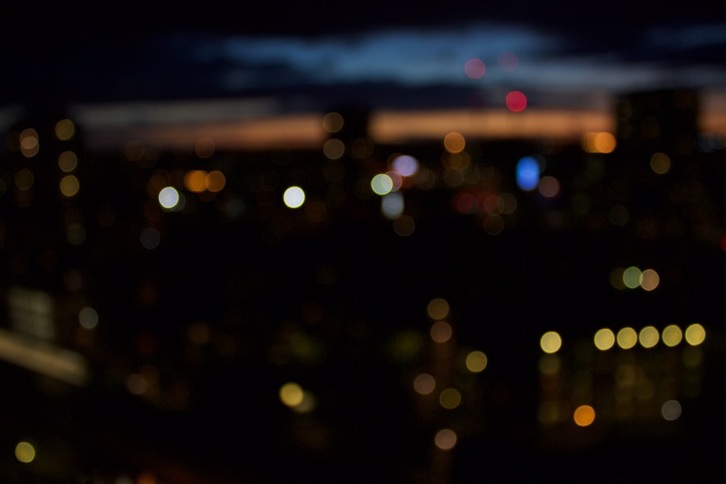 At a recent Show Room event, there was a fascinating screening and discussion about community film making in 1970s London. This was chaired by LUX writer in residence Ed Webb-Ingall as part of his two year Communal Knowledge Project. One of the films screened was Starting To Happen made by Liberation Films in 1971. It showed how a film action group ran a series of workshops with local residents of Balham in South London. Teaching them how to use video and sound equipment in order to communicate their concerns about changes taking place in society: the decline of the urban environment; the lack of play spaces and community facilities for evolving multi-cultural communities. This all culminated in the residents campaign for a zebra crossing in a location where several children had been run over. At the end of this film within a film, the editorial view was controlled by the professional film makers. They were the ones documenting the residents sit-down-in-the-road campaign. While the overall project might have chaotic elements that illustrate the difficulty of allowing for collective expression in a highly specialised medium, there were compelling scenes showing how residents used the video process and were able to reflect on this. The potential for allowing voices that are not usually heard. In the modern era, we have the world wide web and the apparent ease of digital film making. These provide a new found reservoir for community expression and solidarity. However the challenge still remains of how to weld together polemical intent and film in a powerful and original manner. To understand and artistically render. To communicate and be heard. To effect change. My current art residency at Lancaster West estate fits within this critical discourse. I have been contracted by the TMO to make a film portrait about local residents: what it means to live on the Royal Borough's largest estate and views about changes taking place in the area. This has been complicated by a recent stand off between residents and TMO over the regeneration of the Grenfell tower block. Lately there have been productive meetings and dialogue. This is documented from the residents perspective on the Grenfell Action Blog. I have been filming resident meetings with their local councillor and MP. Edited films of these meetings have been shown to both the community and TMO. This has facilitated discussion and allowed self-reflection. They have also demonstrated genuine concerns from a wide range of resident and how certain individuals in the community have stepped forward as representatives. So far I have not involved residents in the actual film making process. These filmed sequences will form an element of the wider film being made. I am currently undertaking detailed audio interviews with a range of people connected to the past and present of the estate: architects, residents and TMO staff. I will then invite residents to pick up a camera and film sequences to illustrate their perspective. This is an exciting development of my collaborative approach to film making. In marked contrast to these strategies for film making, I've just visited the Ben Rivers multi-film installation at the former BBC TV centre. This is sited just across the West Cross Route from where I'm based at Lancaster West. I often spy on the centre as it undergoes redevelopment from the 17th floor of Grenfell Tower. While the film fragments on display here are impressive, perhaps the real star is the location. The labyrinthine former BBC drama department with machines that have Tardis-like knobs and dials, scenic painting rooms and a plethora of signs: this department has moved, or that one has closed down; please contact Facilities Management. Artists need these spaces to project their boundless imagination. The film-art installations strike a chord with this lost and soon to be demolished space. One of the films screened has a Moroccan Griot regaling us with a comic tale about a beheaded Imam. As you ponder this and move over to another cinematic offering, you might detect a faint echo. It is Auntie Beeb. Yes. She is gently whispering something about Whitehall corridors of power and the need to forge a new identity. One of the Balham residents in the 1971 film made the following statement with words and meaning to this effect: if we are able to film and interview people locally and we are able to do this ourself; we will get a different and possibly more meaningful response than if they were being interviewed by someone from the BBC. We could debate the veracity of this statement while registering the need for both professional and non-professional approaches in art. This is a world where community, media, art and institutions are not in sync. We are hearing sounds and sound bites, that do not necessarily resonate with with what we are seeing and vice versa. Lancaster West Art from Constantine Gras on Vimeo. This was the third drawing workshop held at the Lancaster West estate. Children are using their imagination to help me work up designs for a mural. This will be installed in the Grenfell tower as a 3x2m mural made up of wall tiles. The tower is currently undergoing renovation and the art work will probably be located in a new community space. Although not being run exclusively for children, adults seem very reluctant to shed their inhibitions and participate. So it's the children who are having all the fun and we have a clearly defined pattern of imagery taking shape: urban structures, especially the iconic appearance of a high rise tower; self-representation whether this is drawing oneself, or family, or referencing aspects of cultural identity. And given the age range of participants, it's not surprising that animals of an exotic persuasion, are materialising on the estate. Thankfully they are all friendly and well-behaved. In the drawing completed at the last session we had the following:
|
Categories
All
Archives
May 2024
|
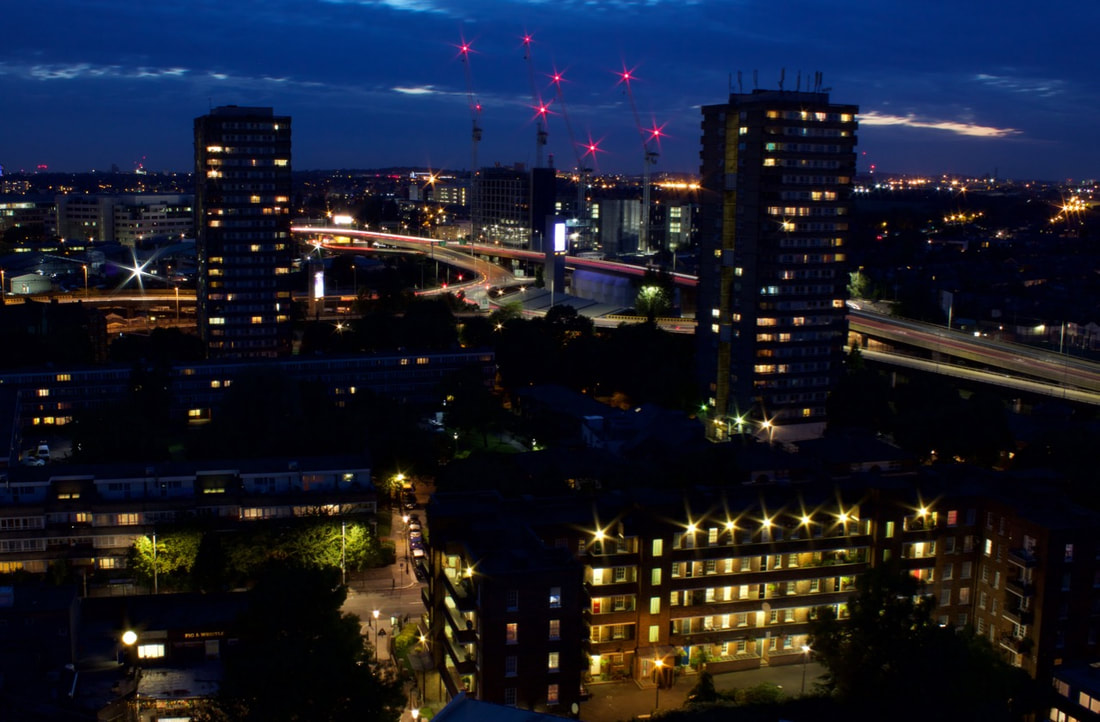
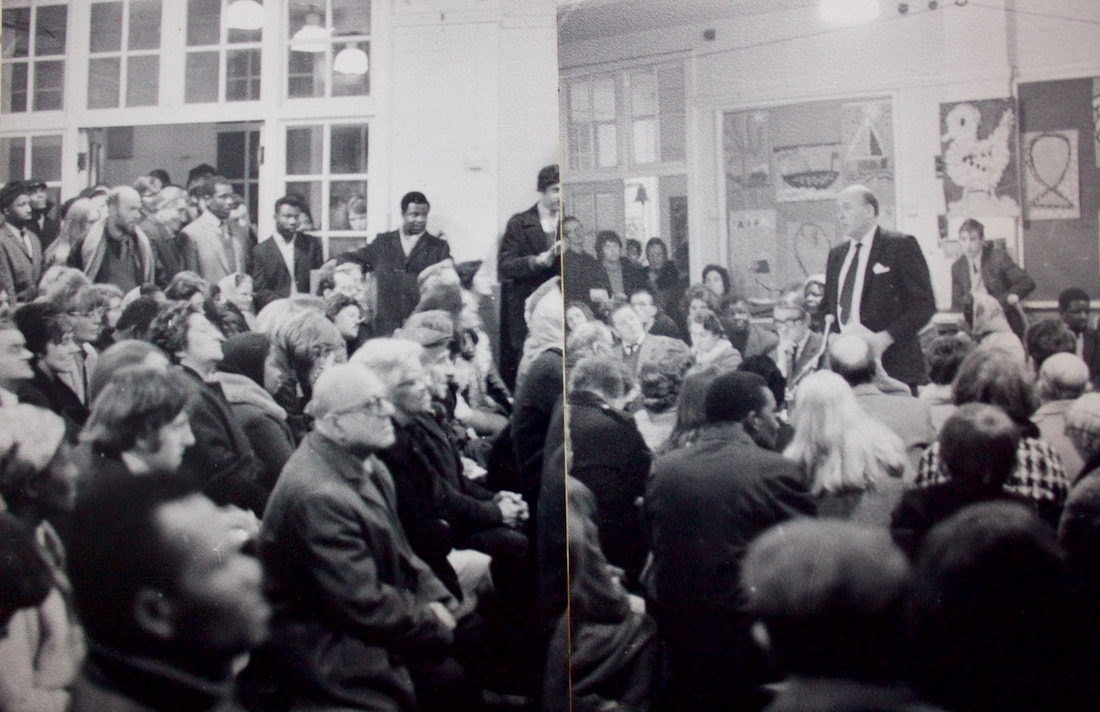
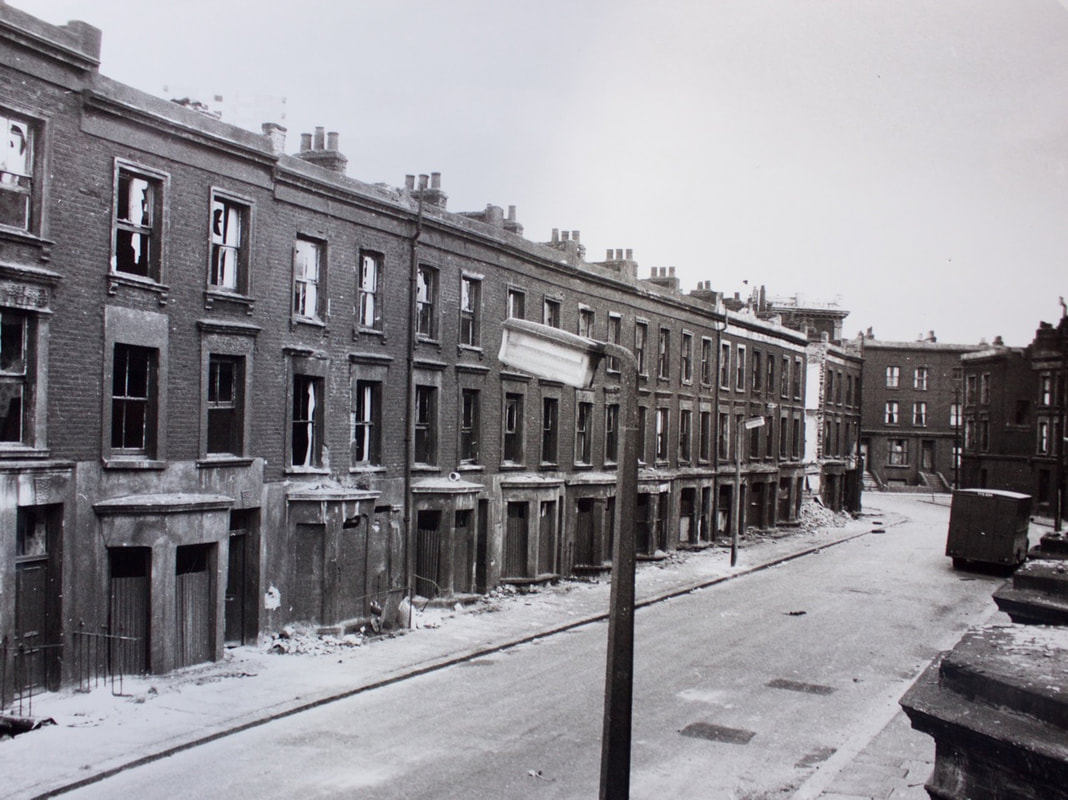
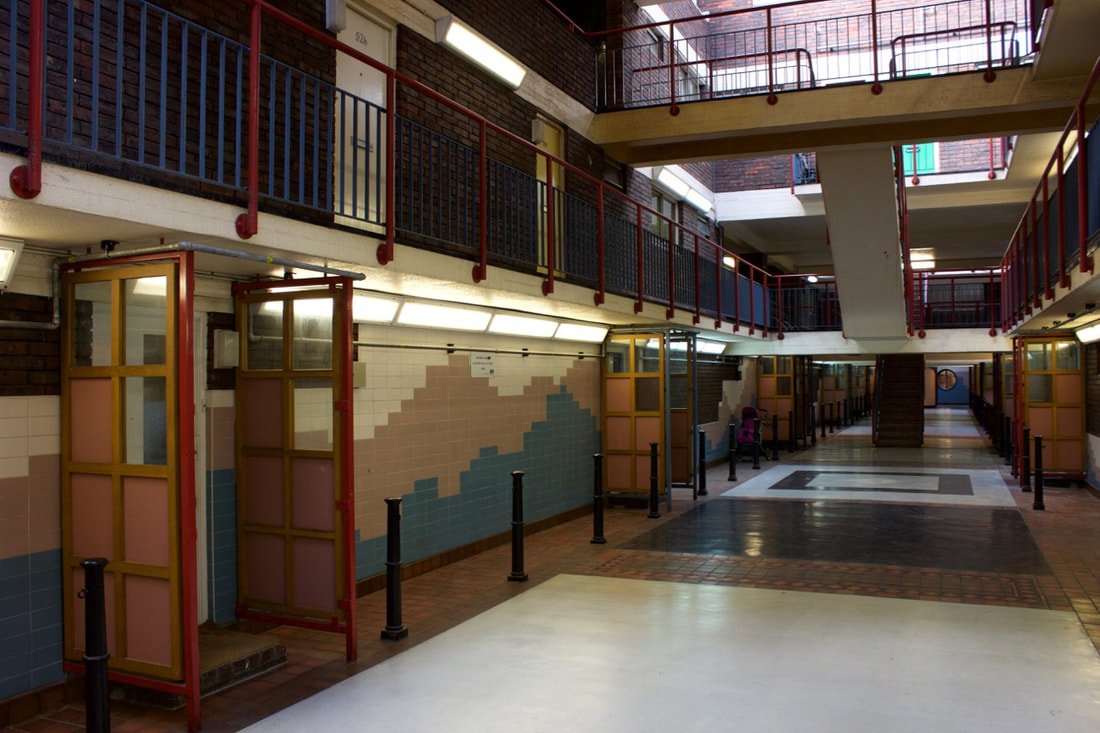
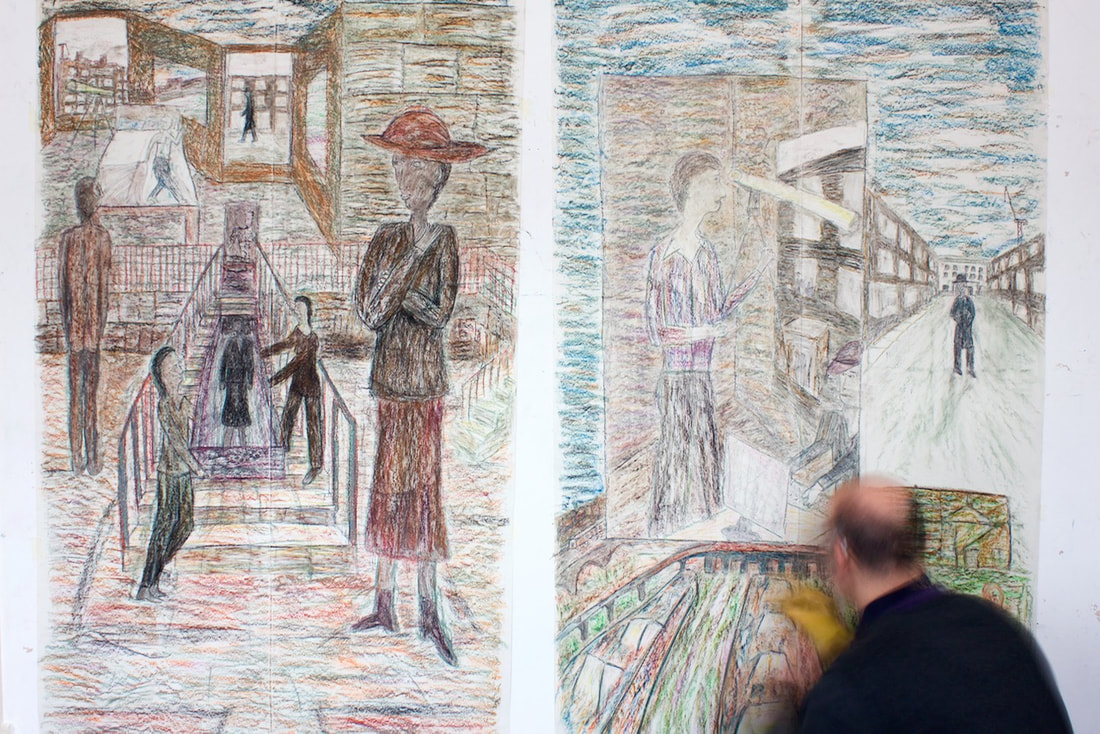
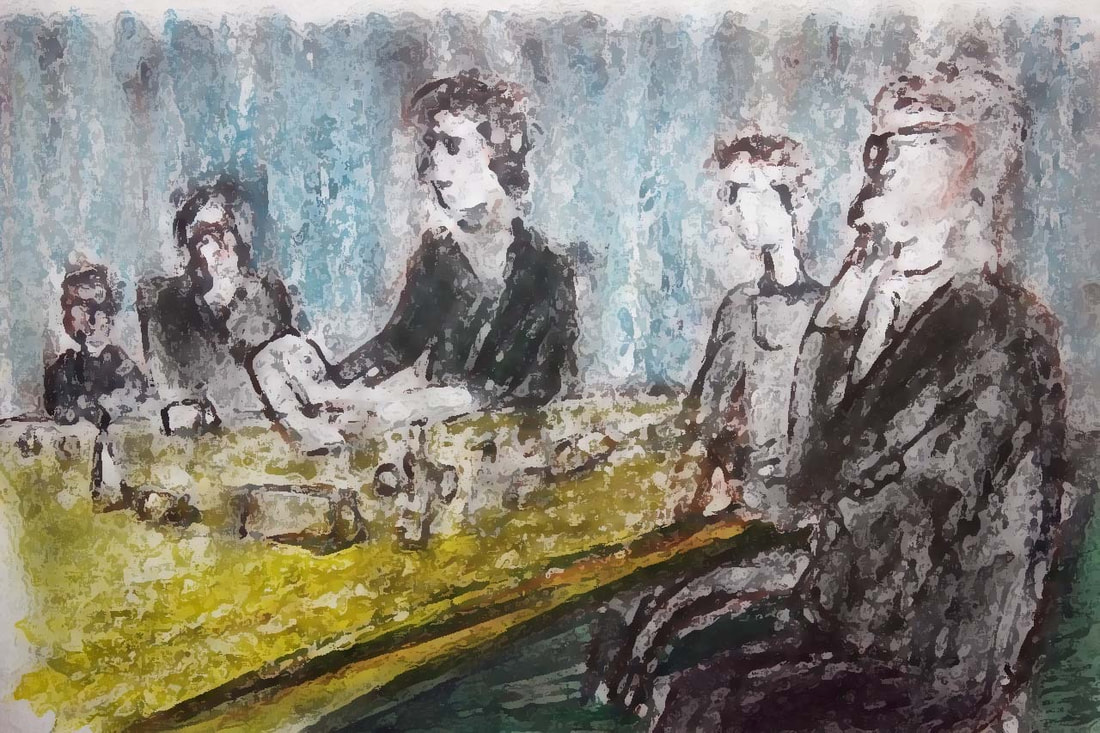
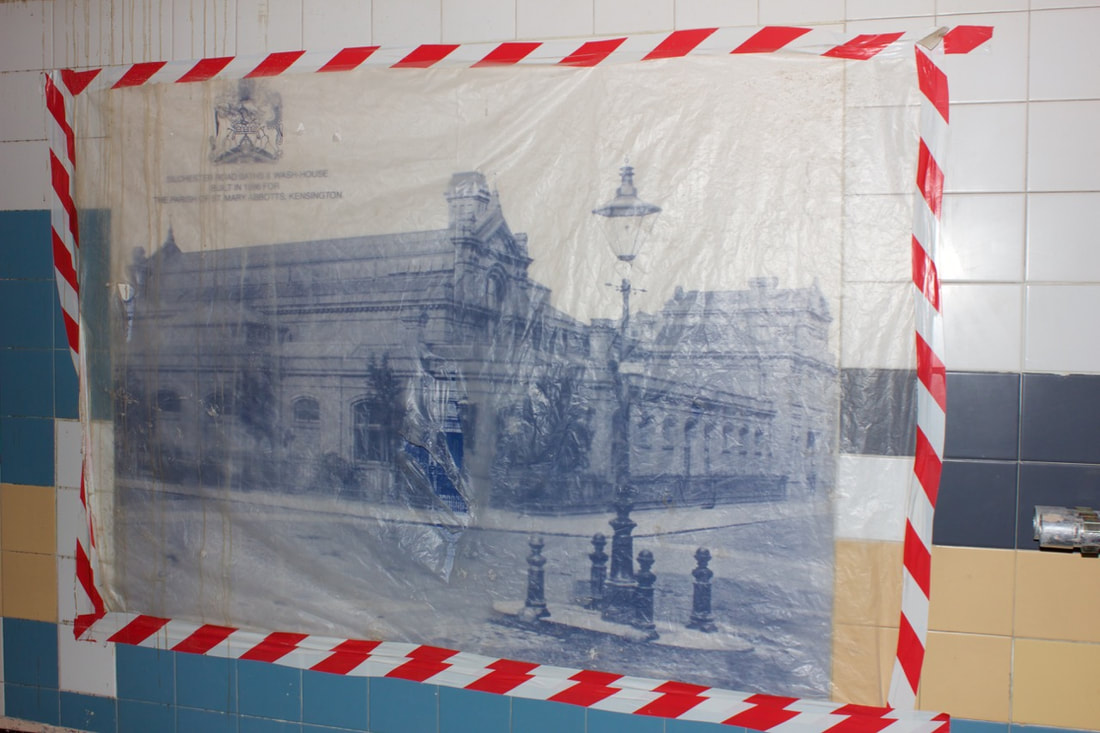
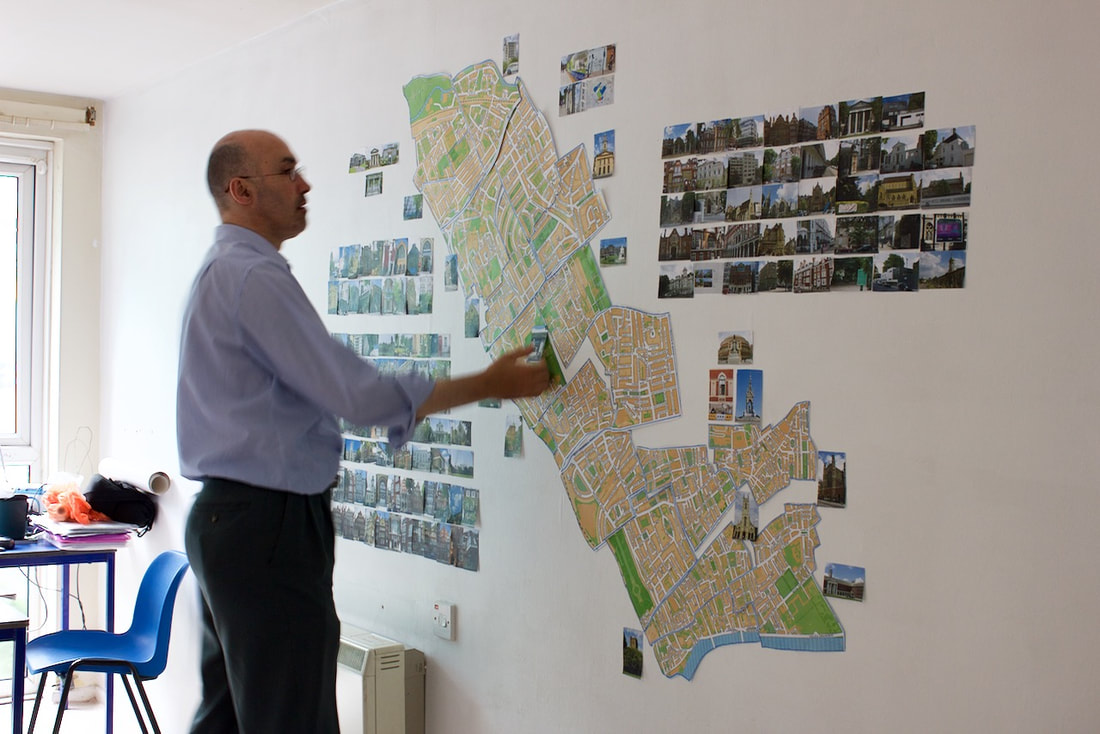
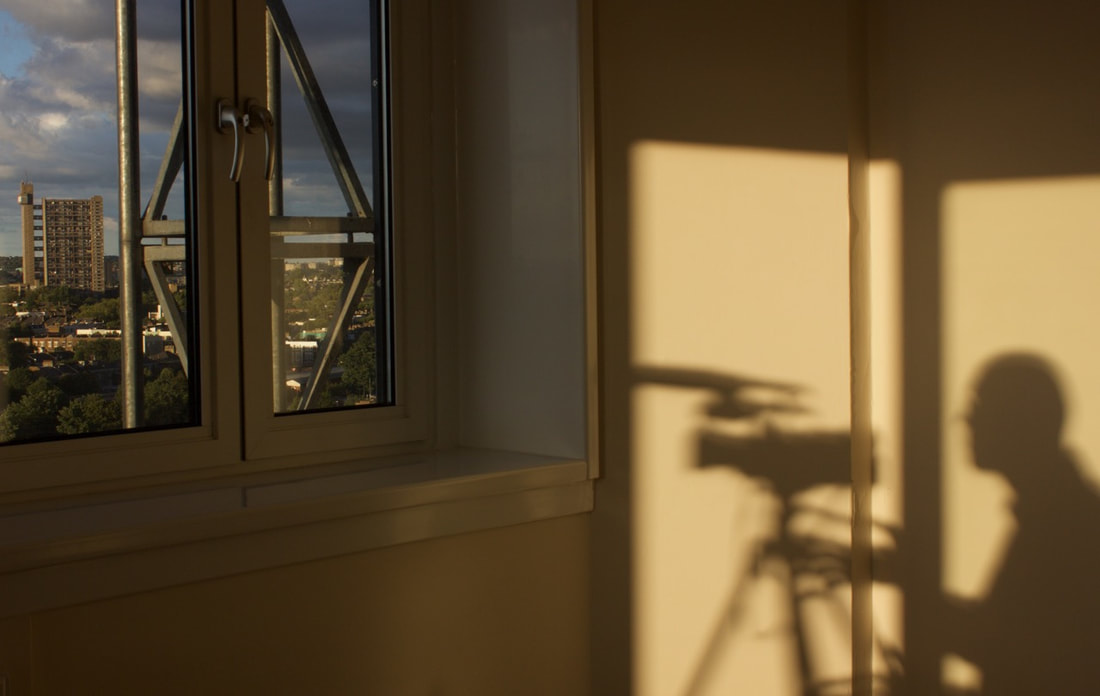
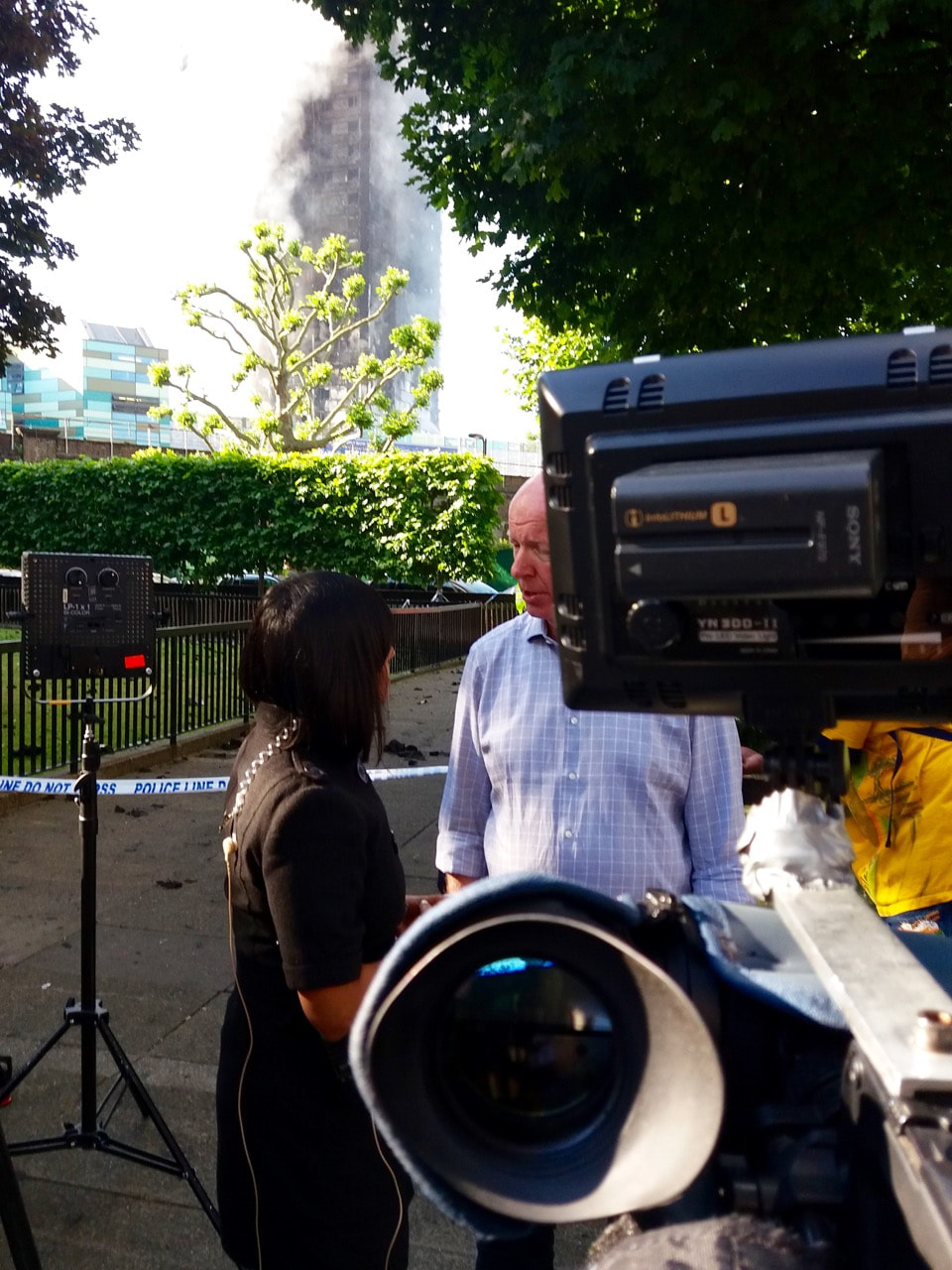

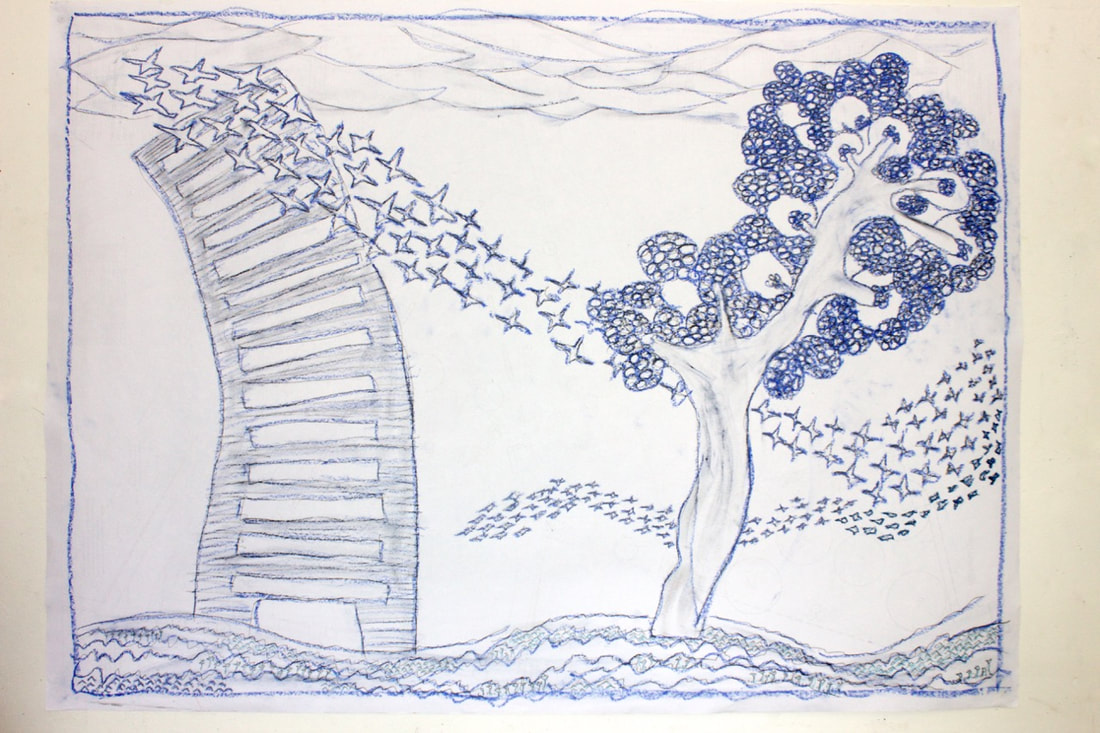
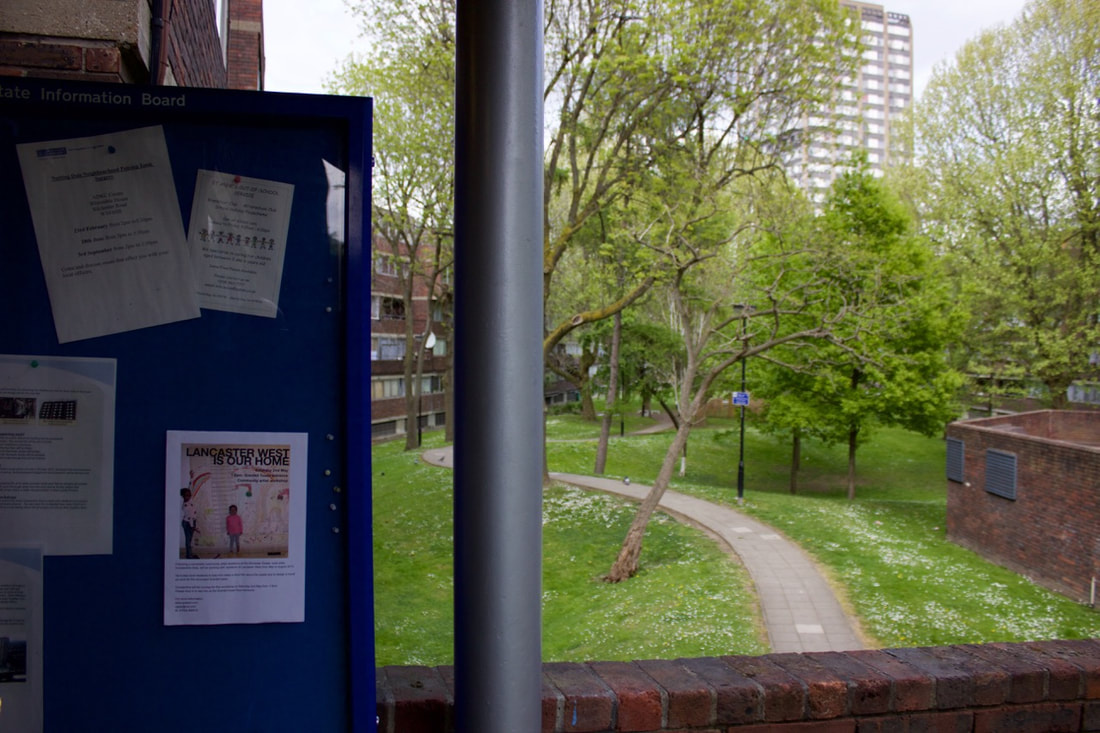
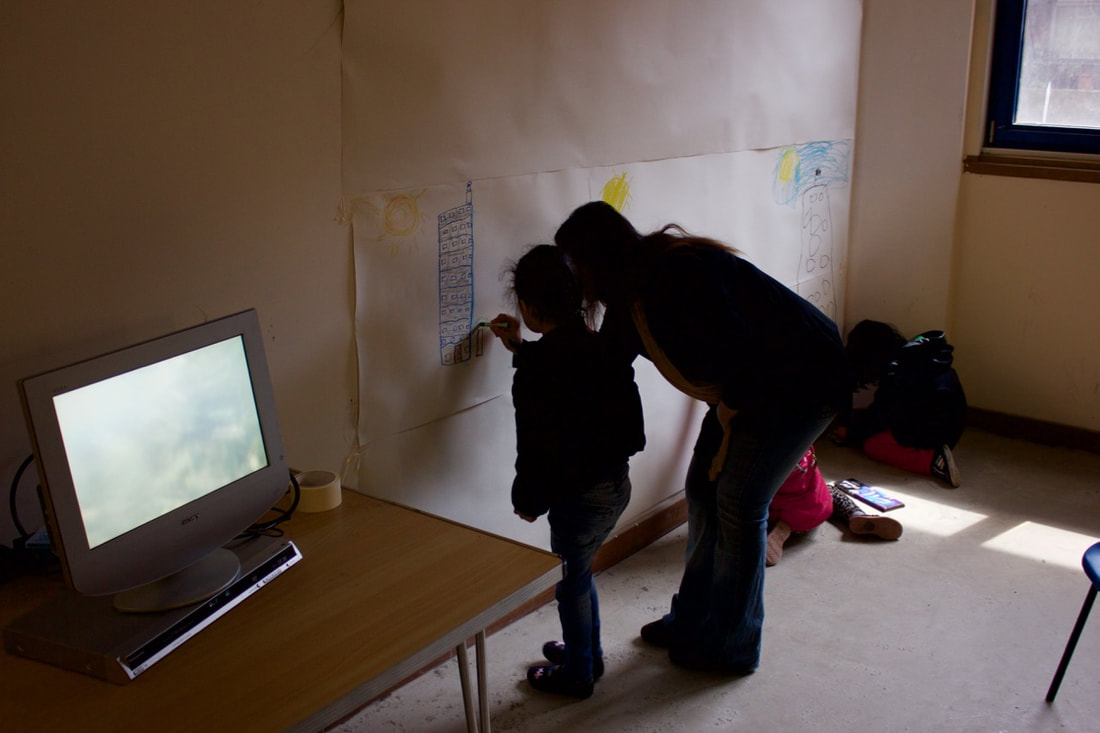
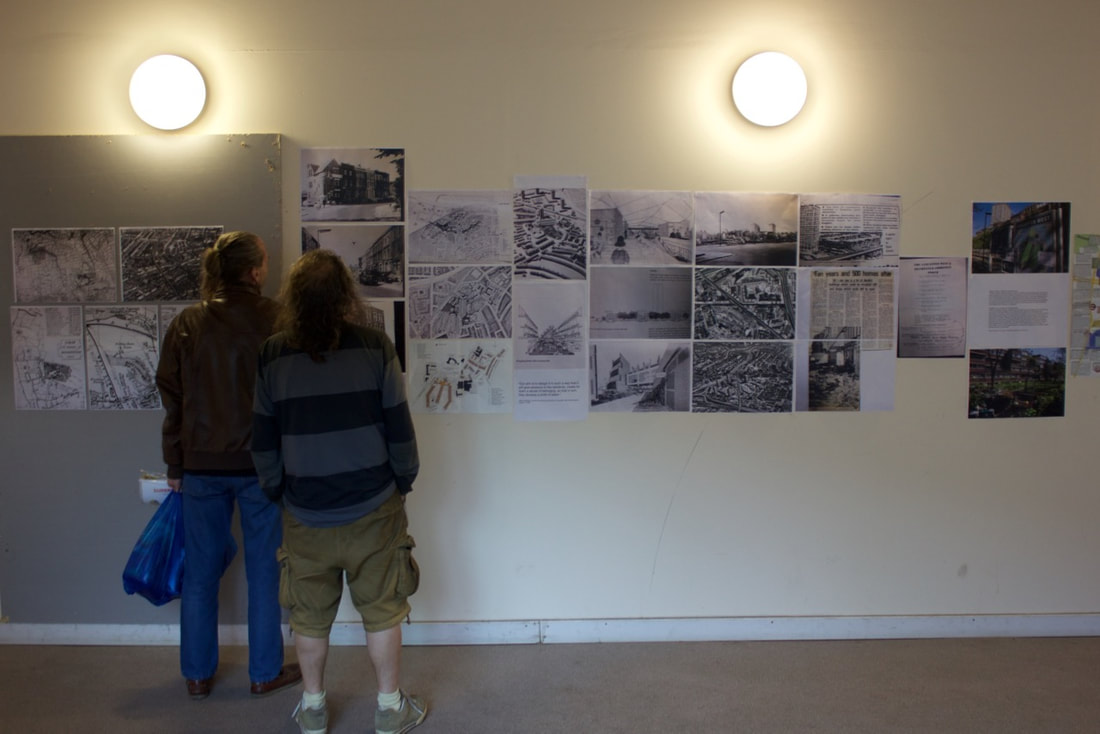
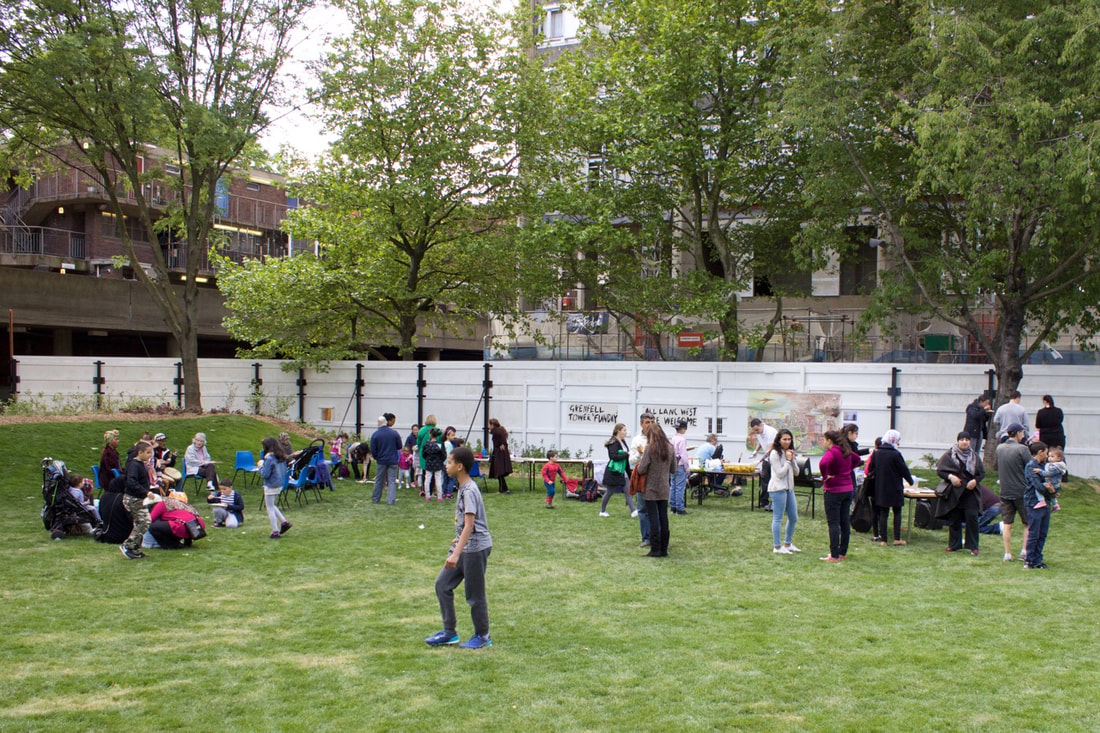
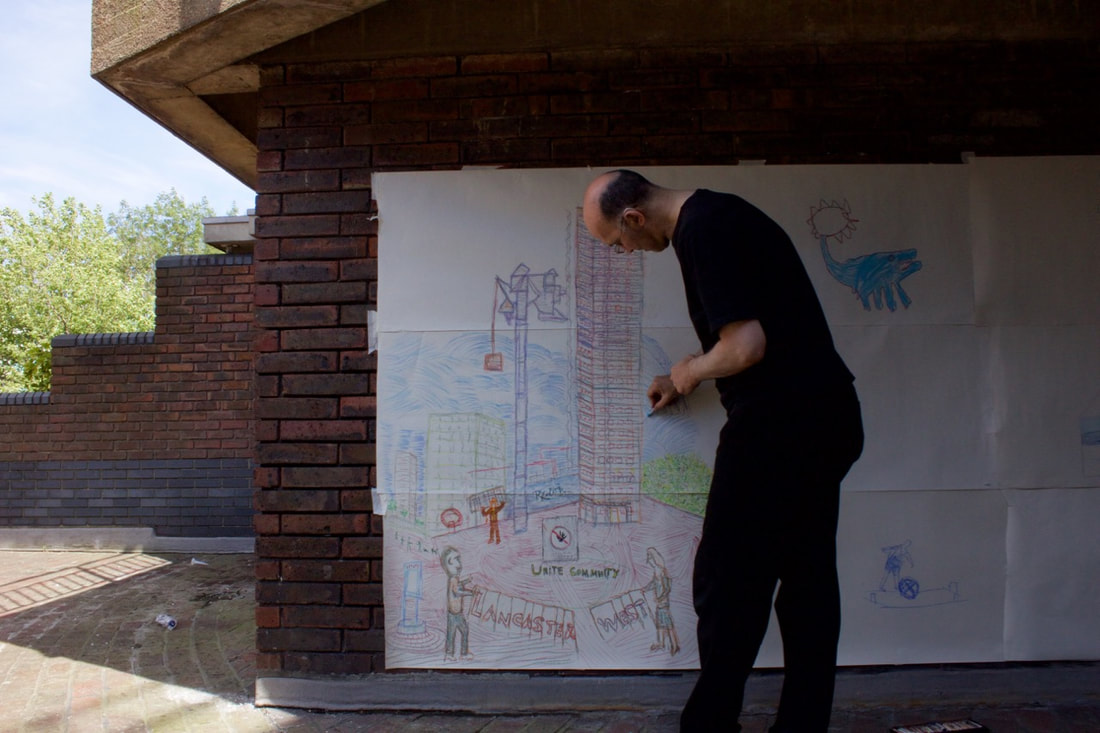
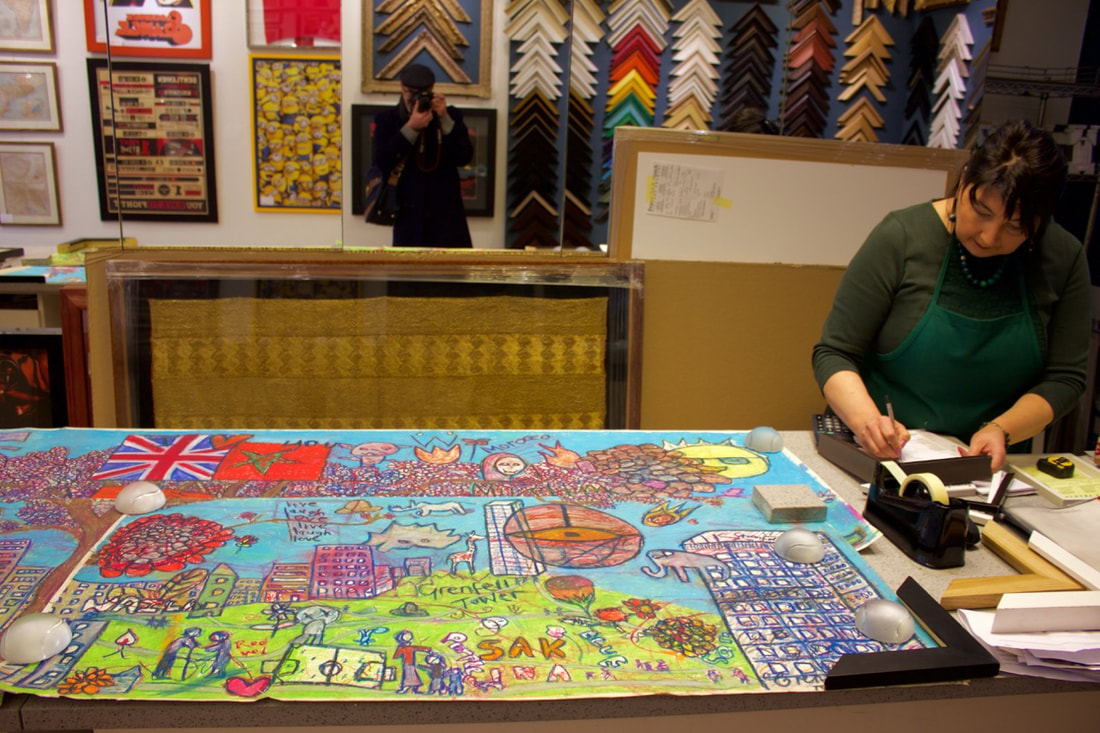
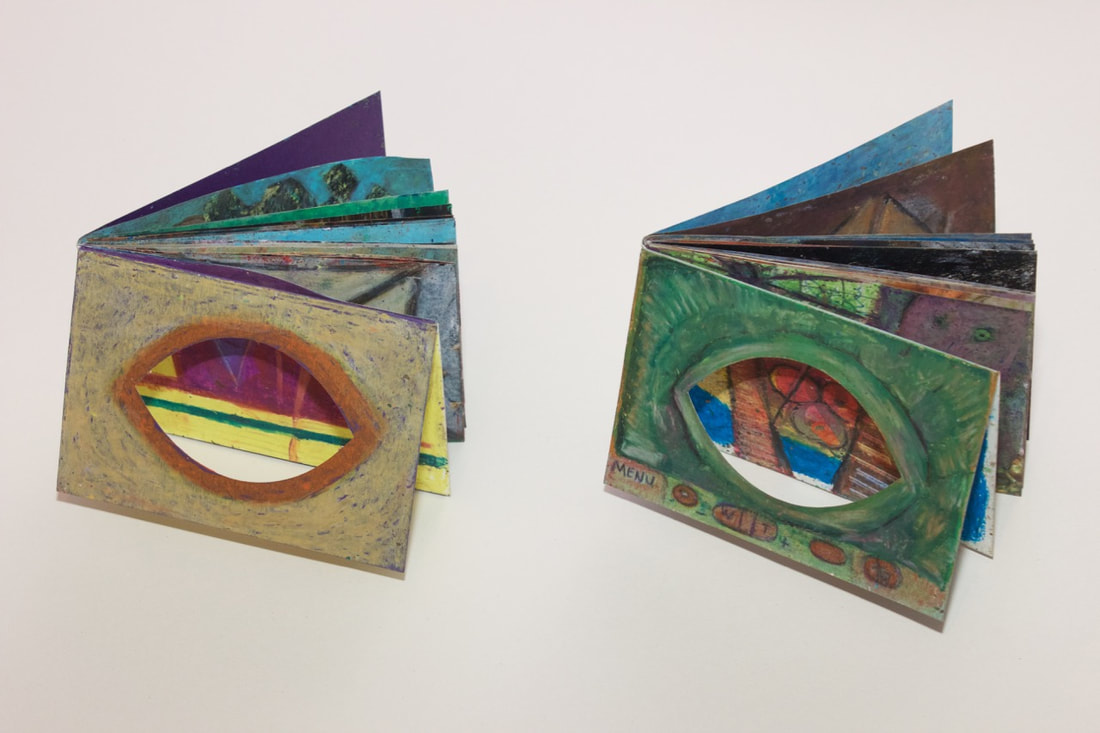
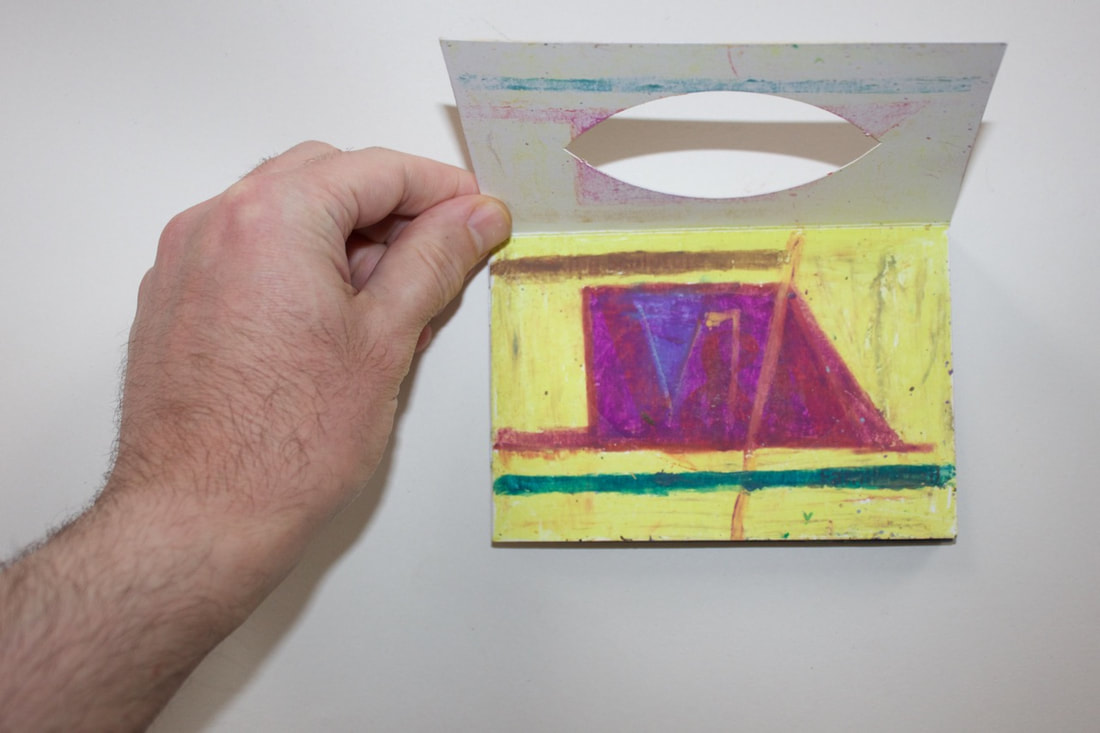
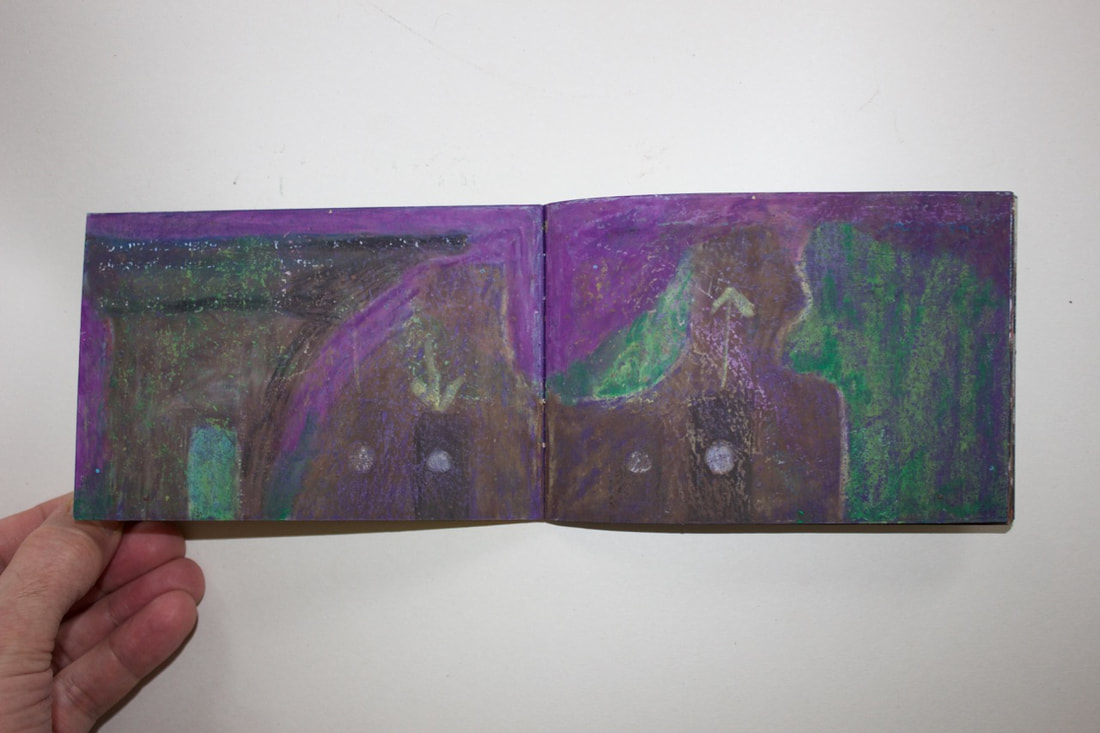
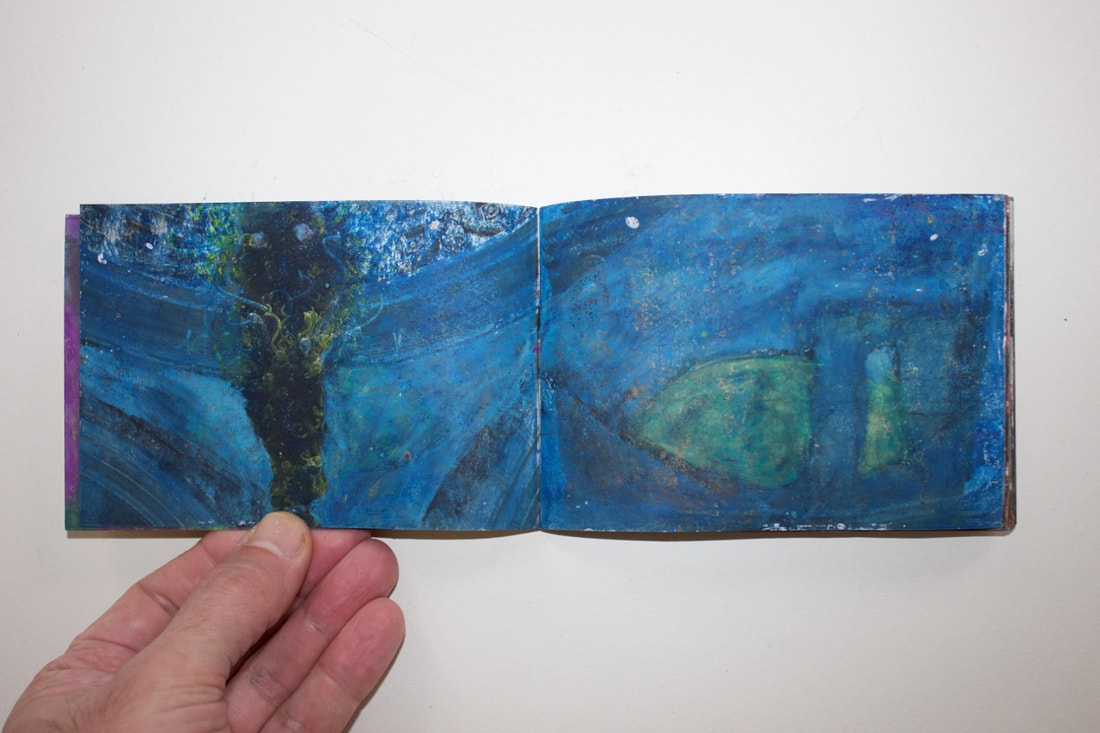
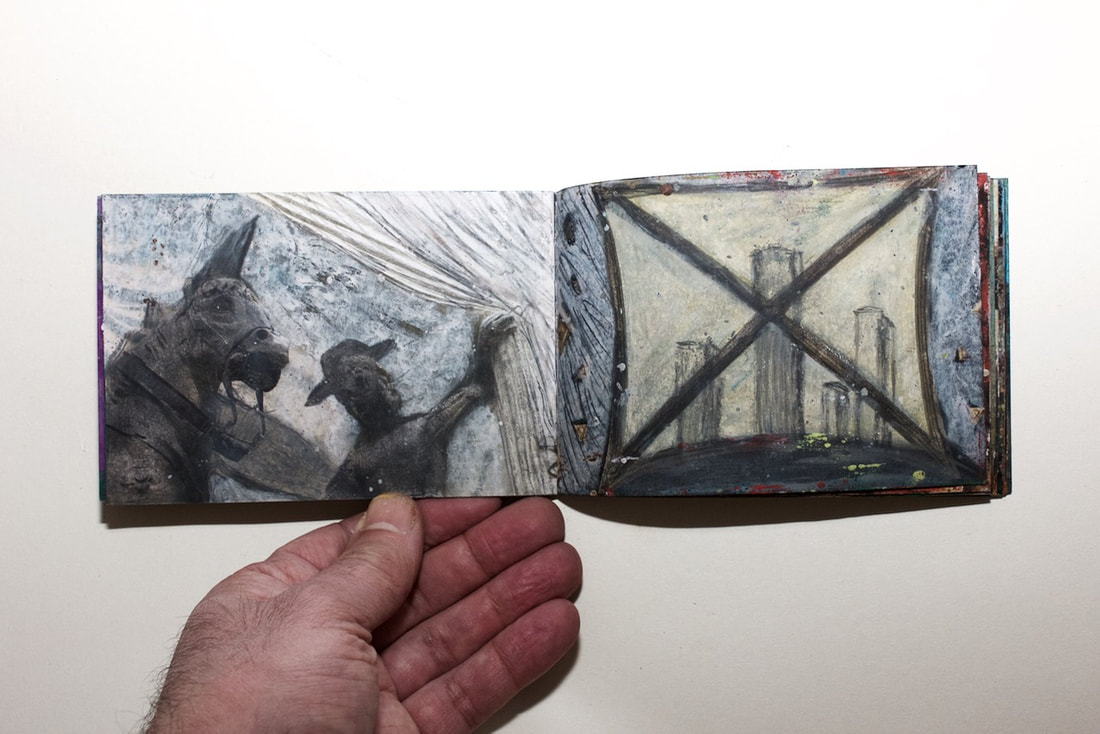
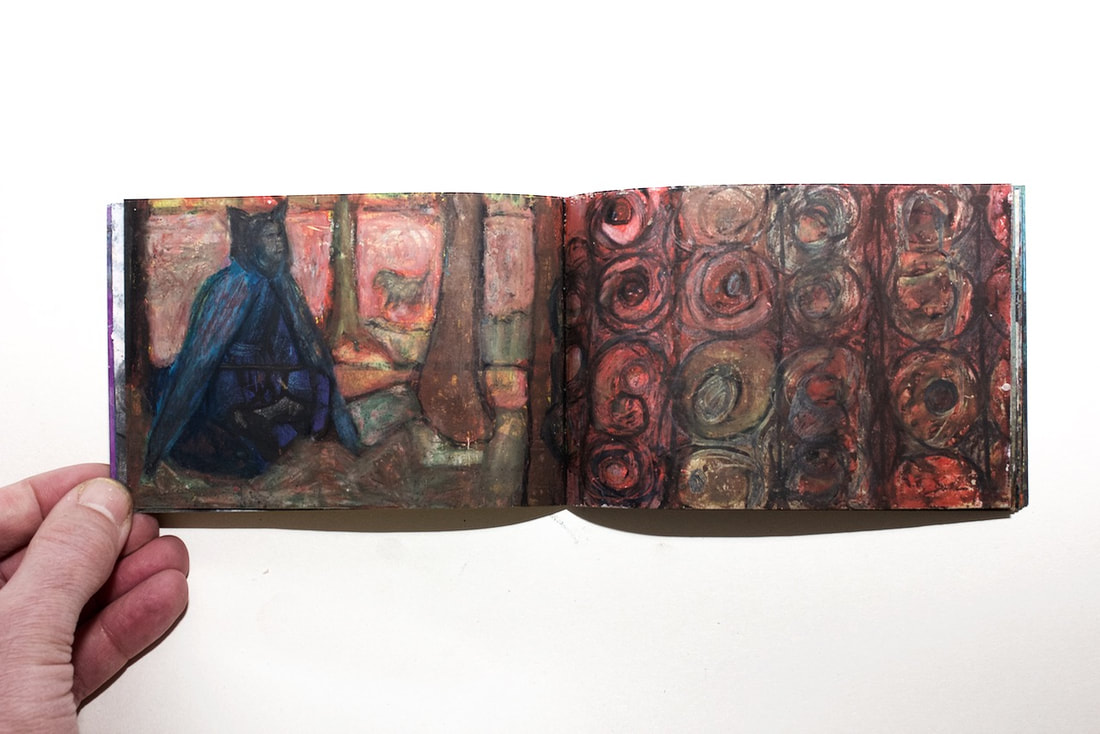
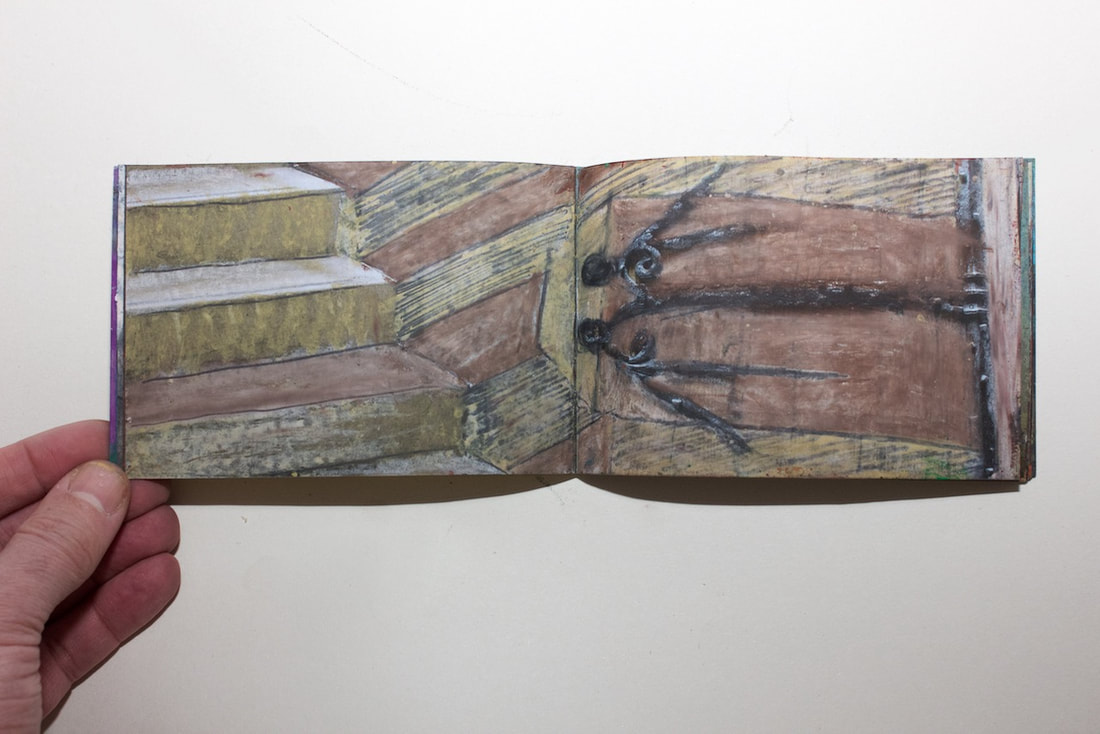
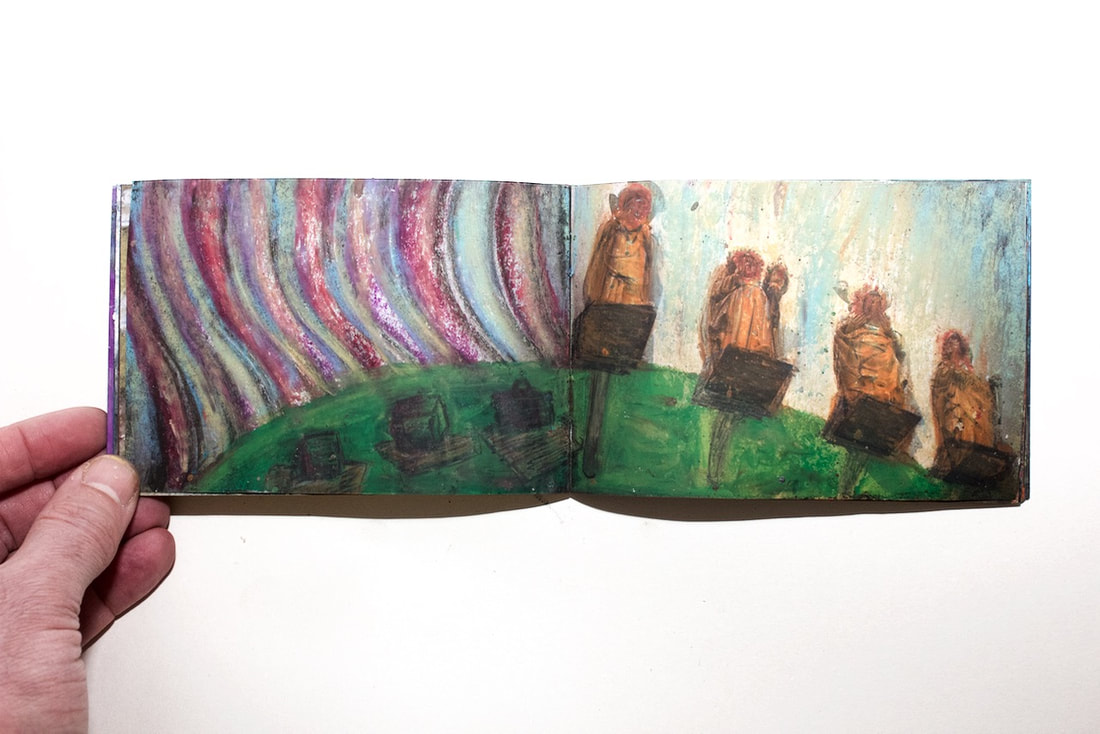
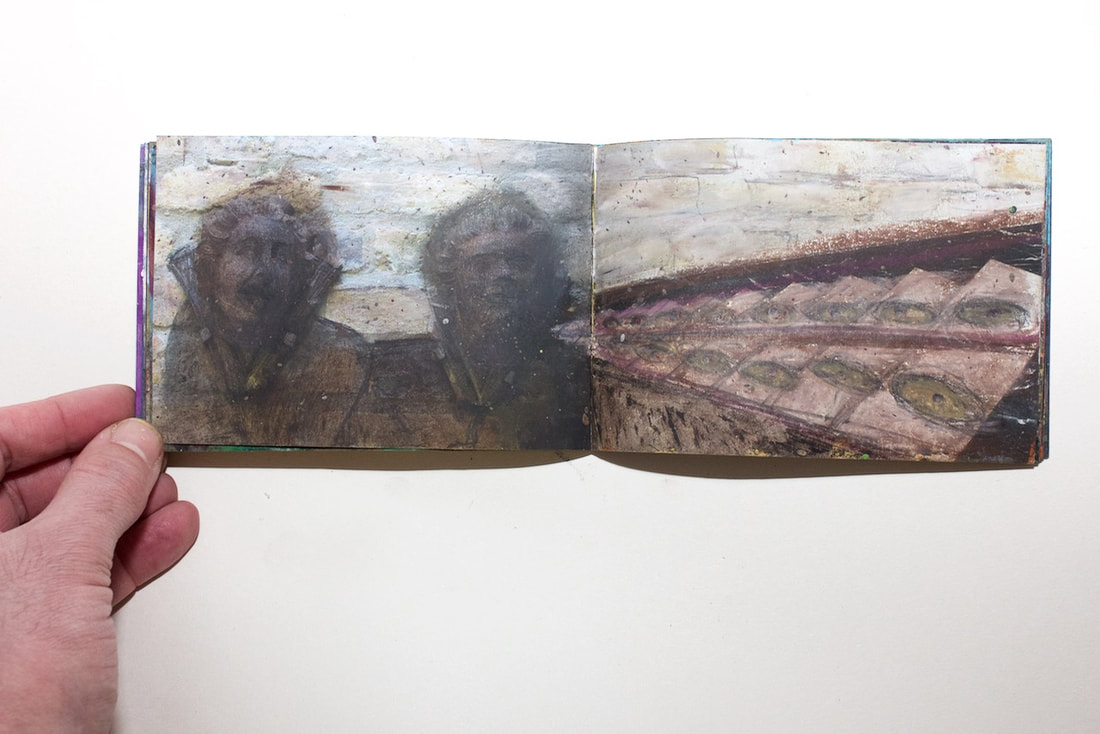
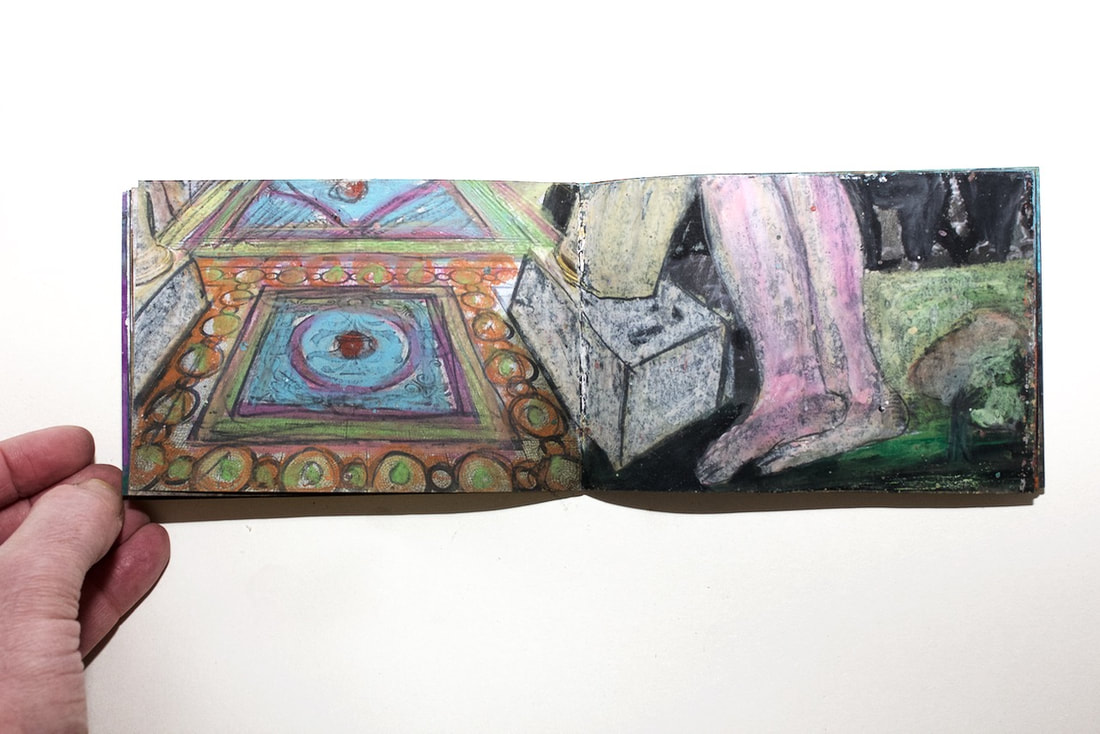
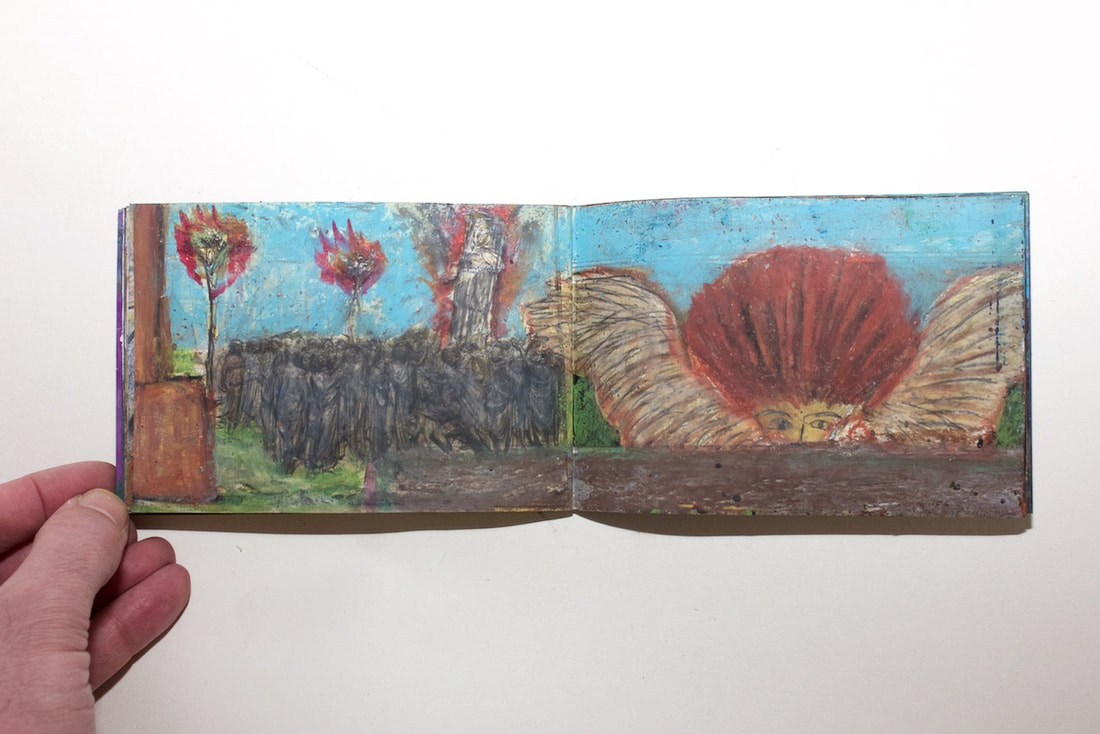
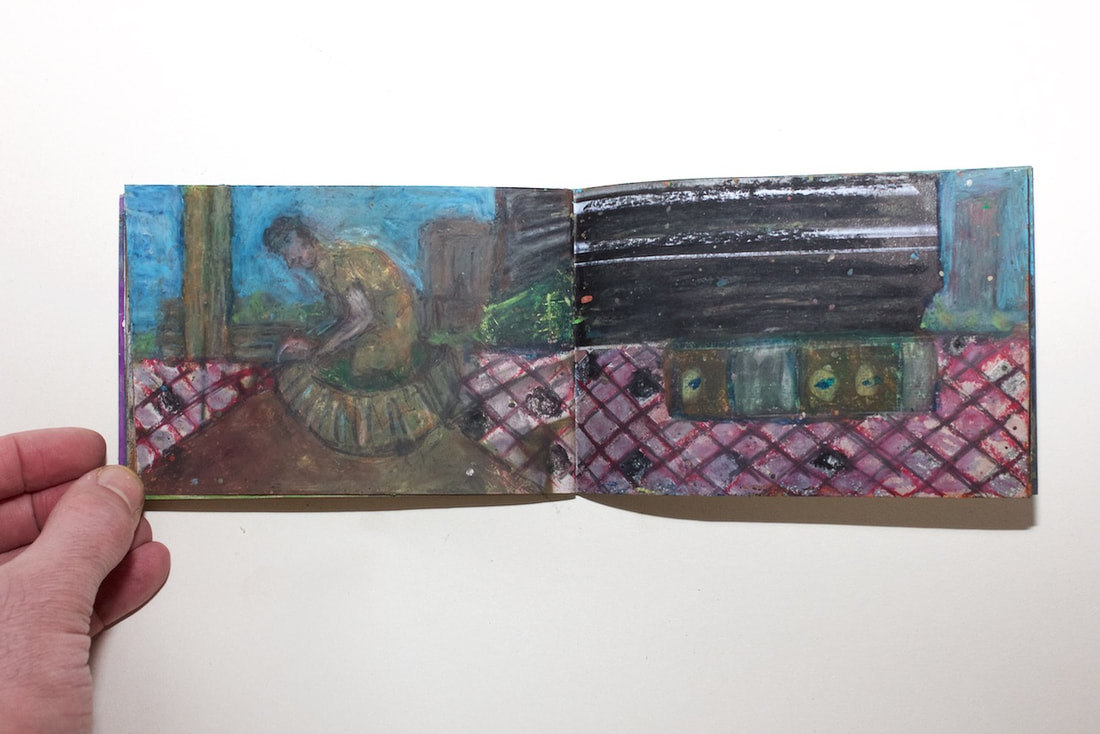
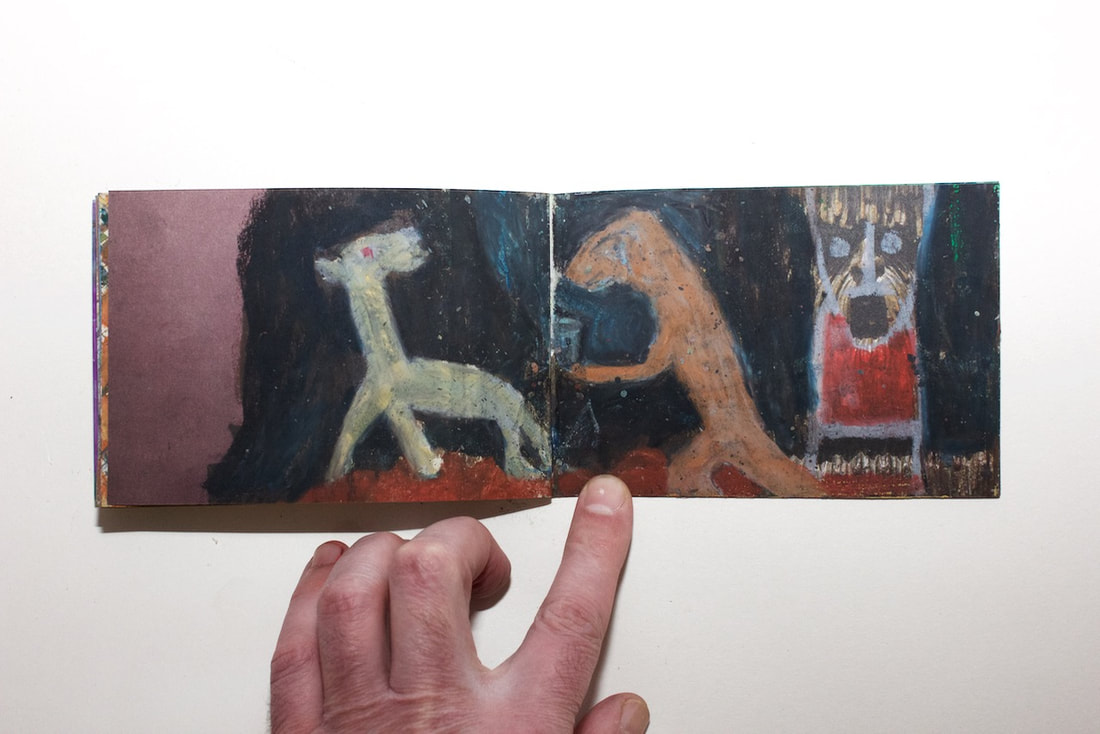
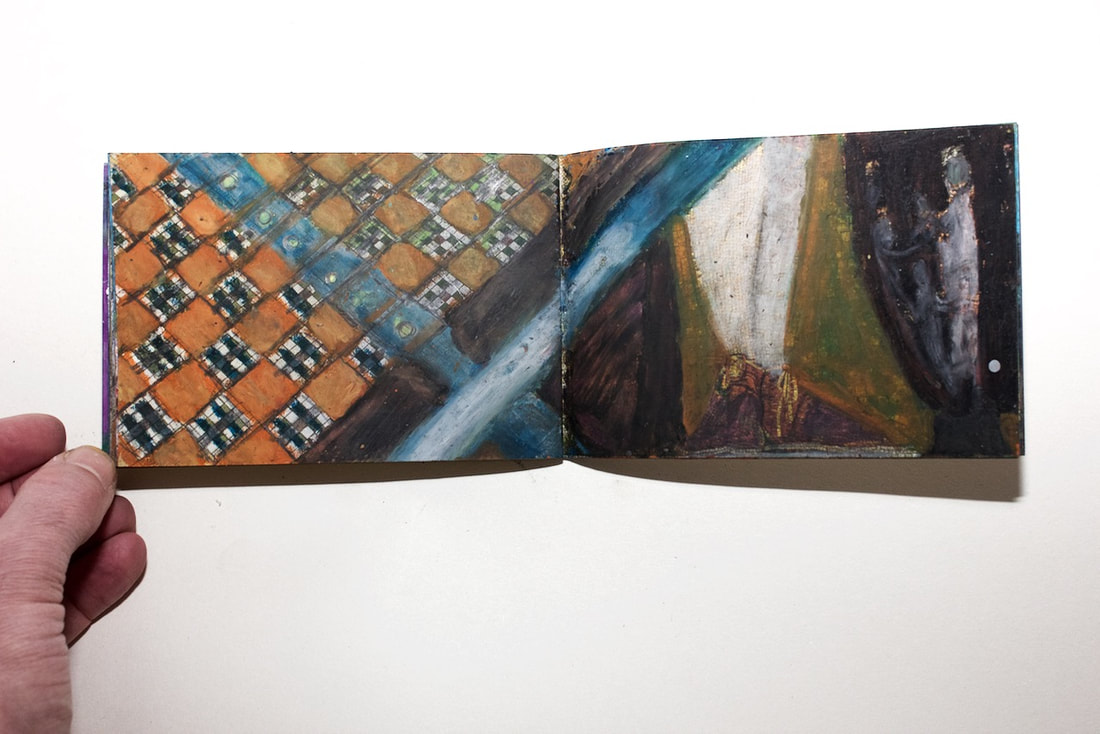

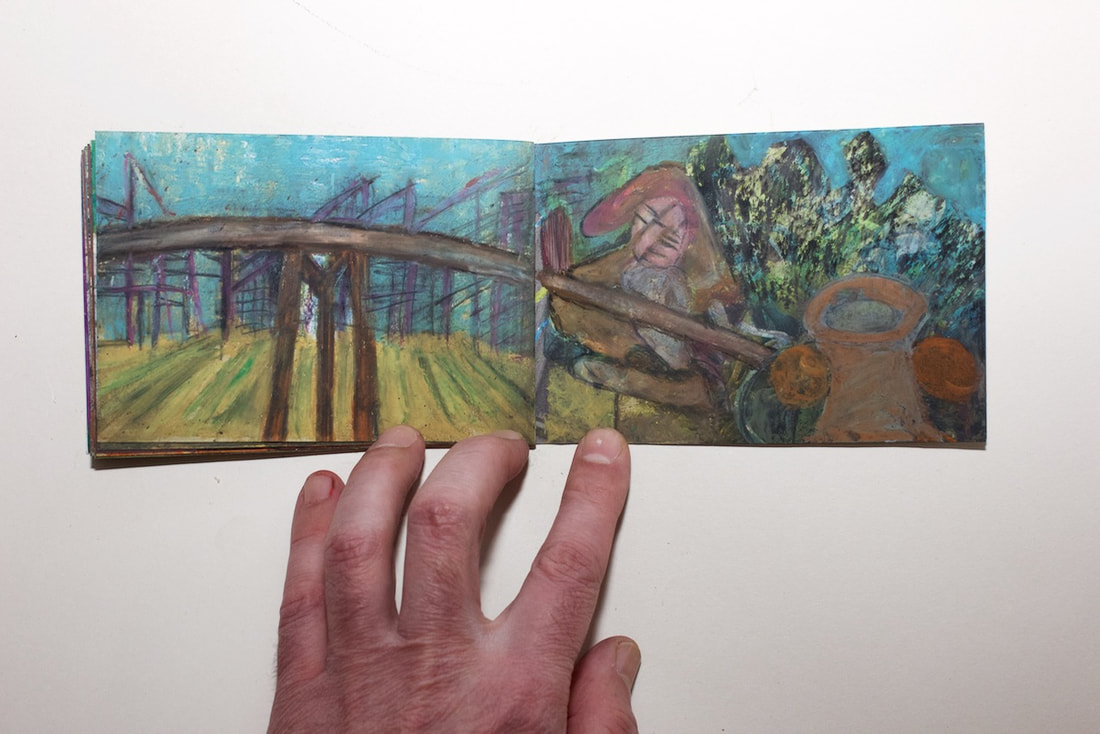
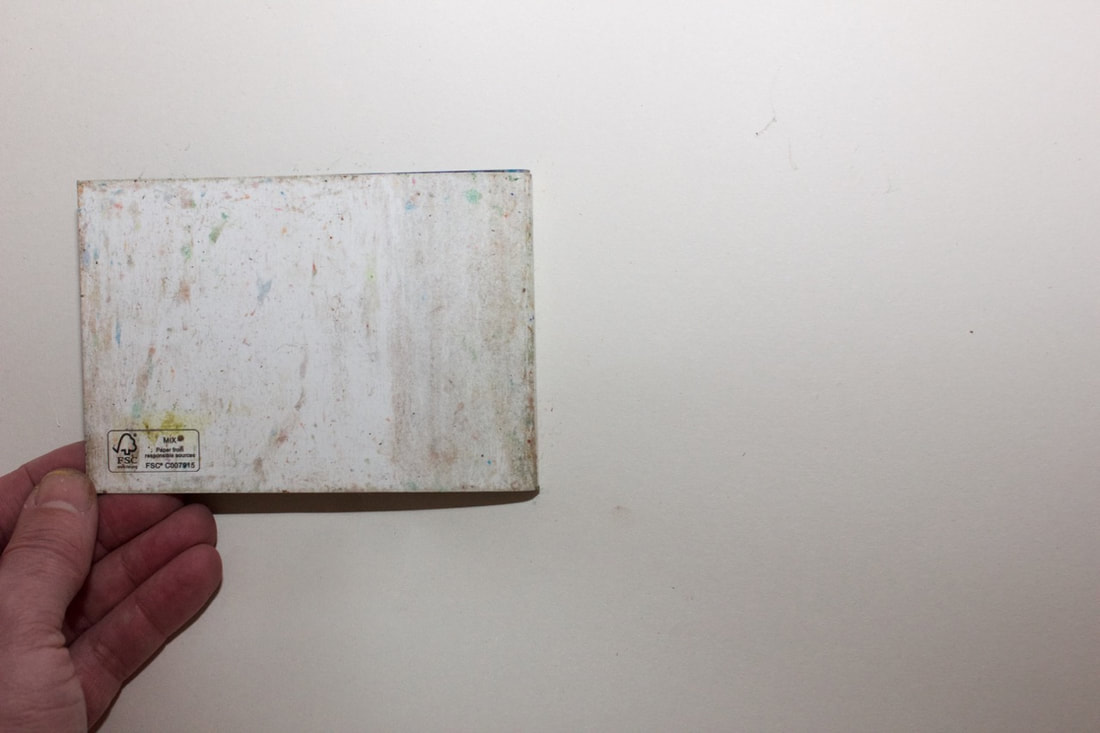
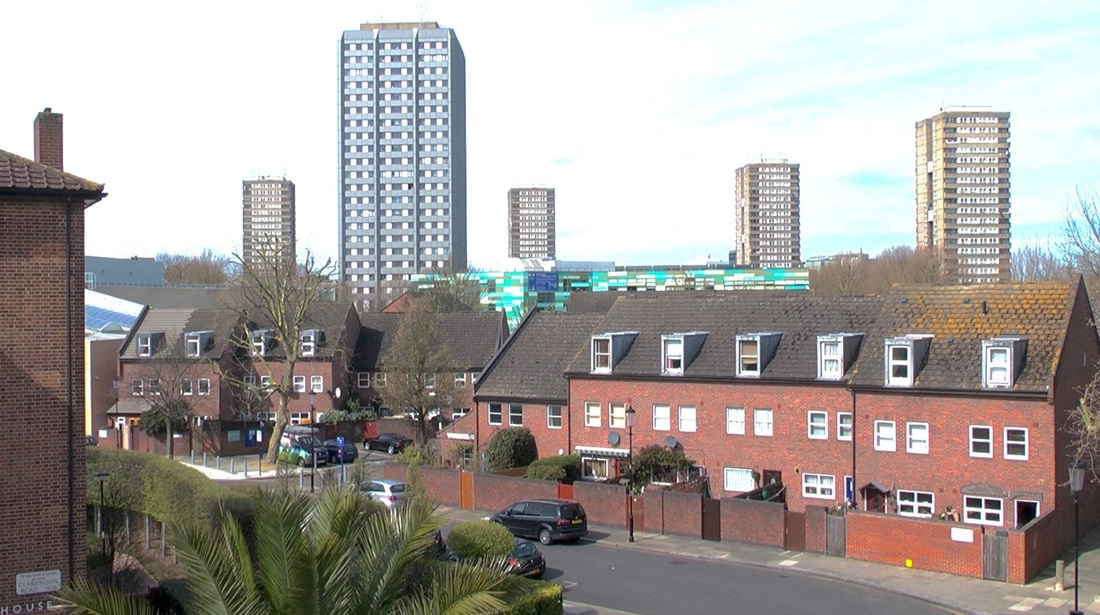
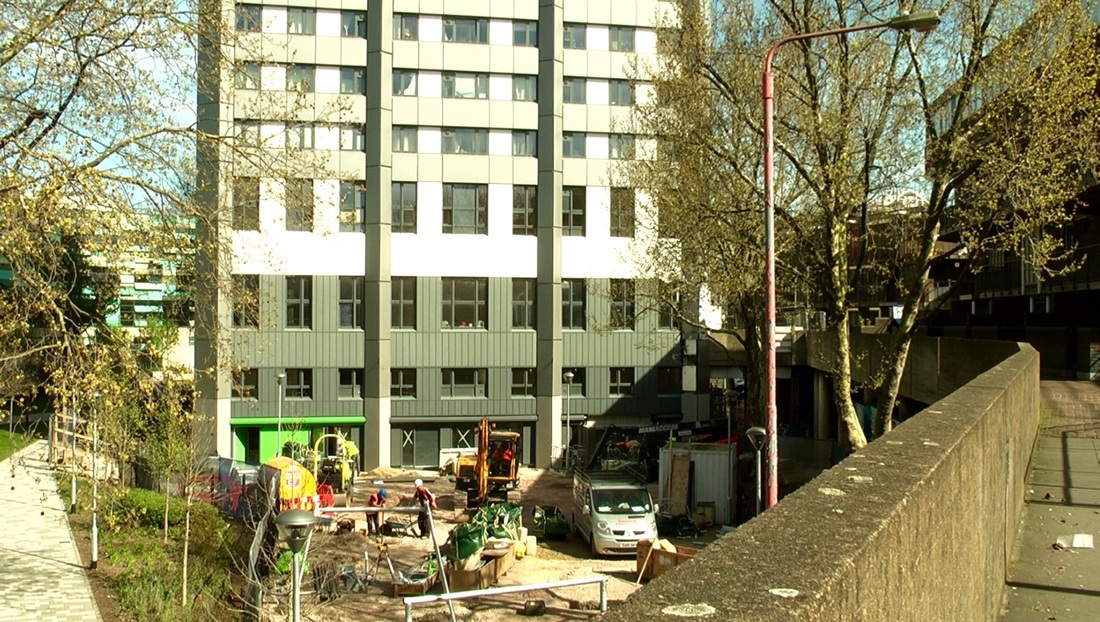
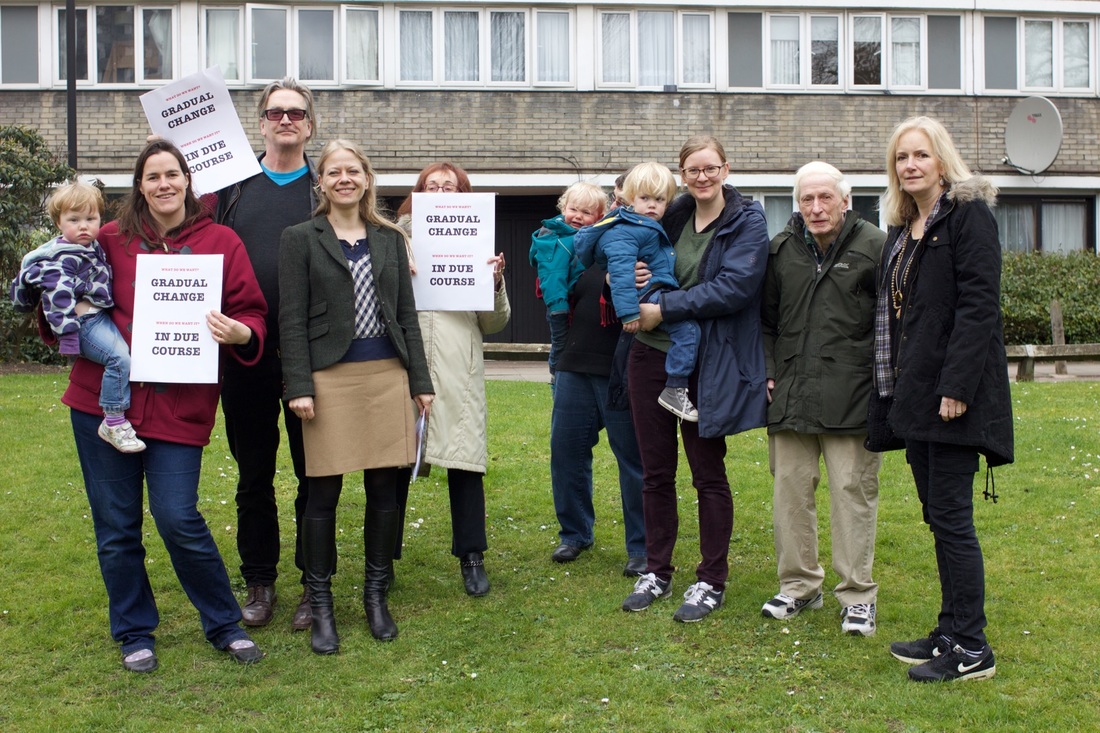
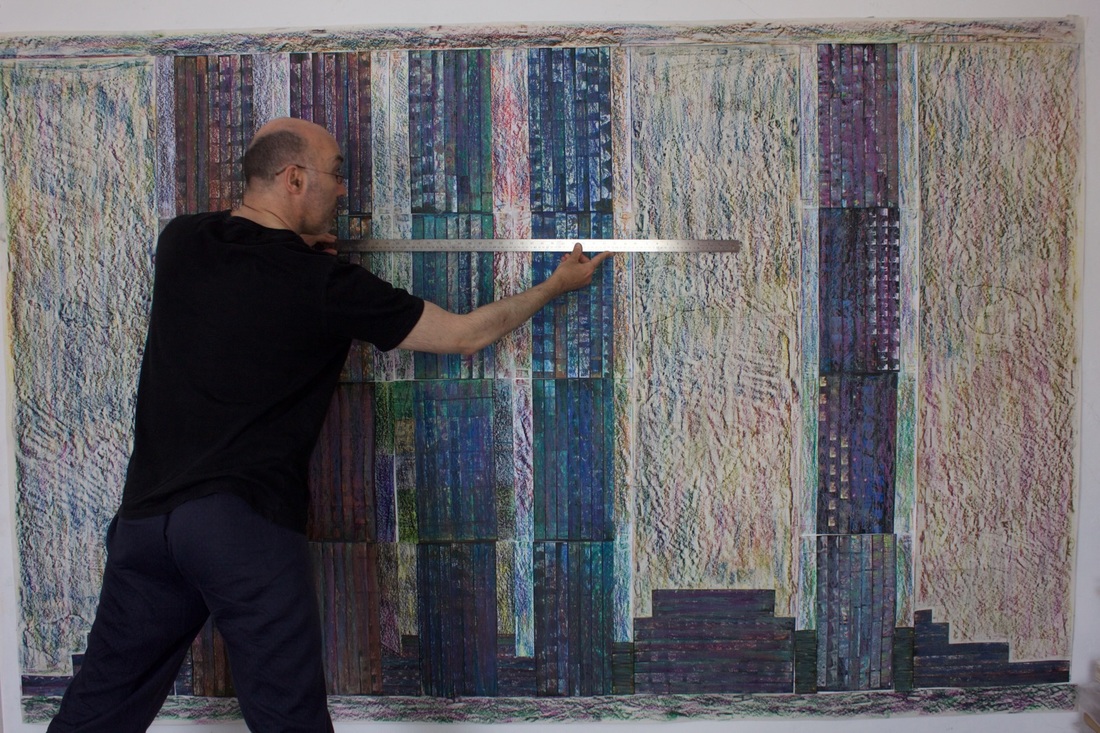
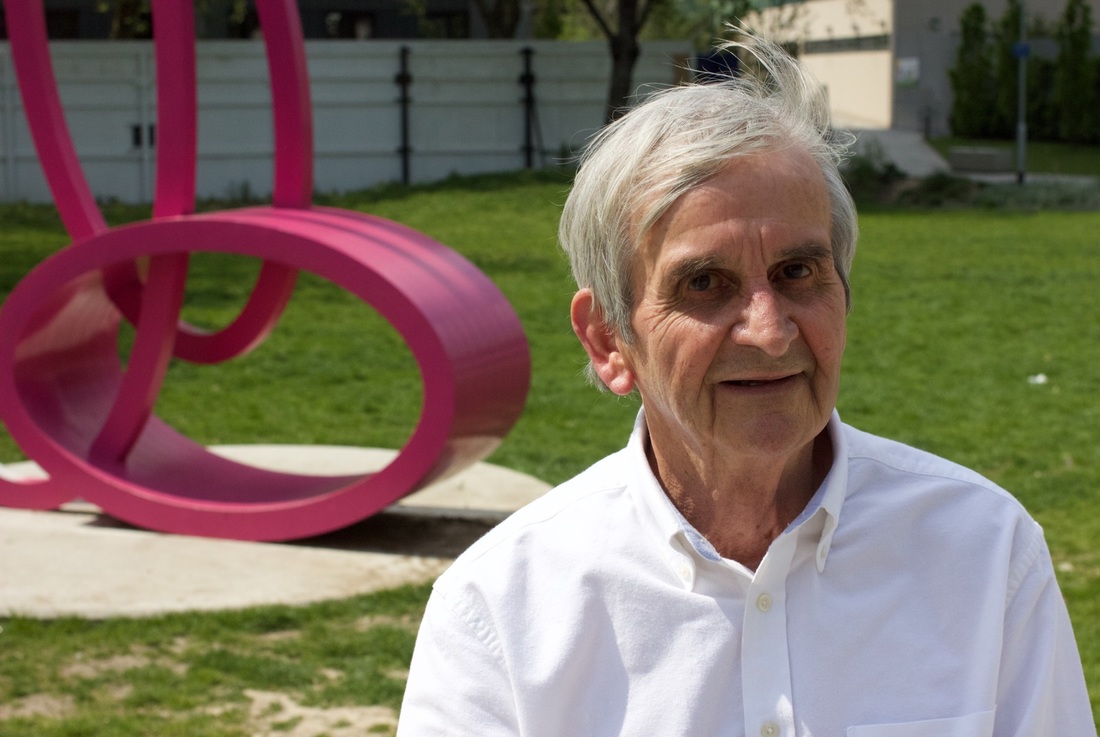
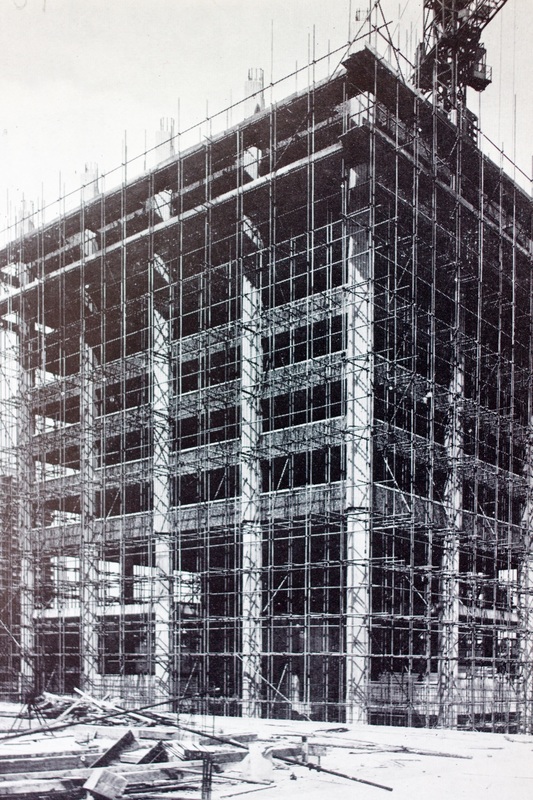
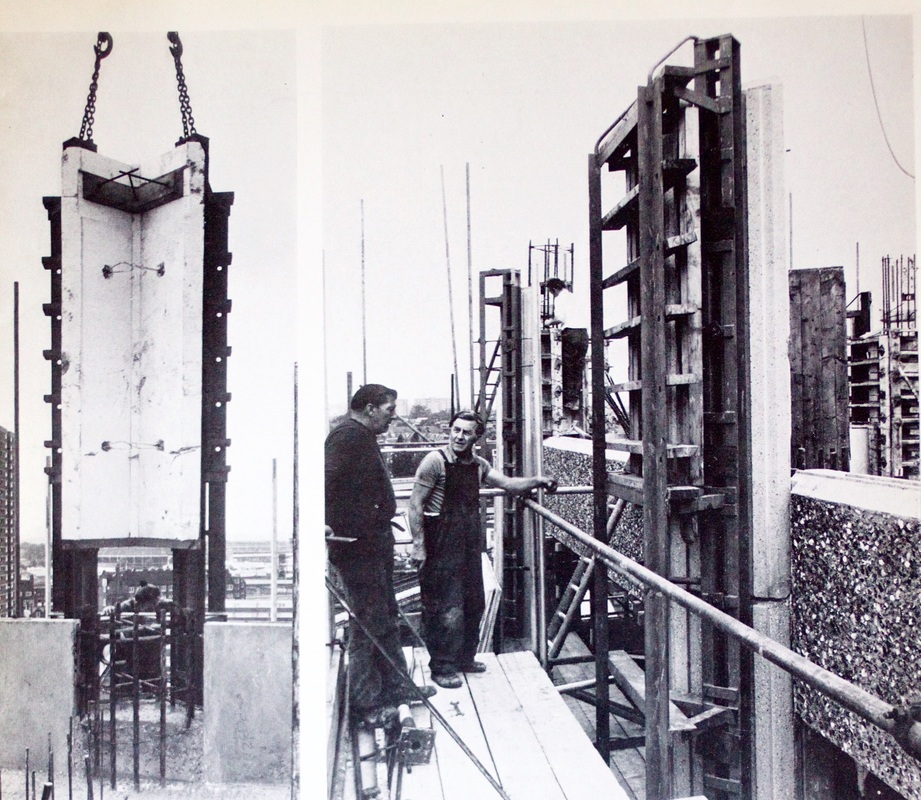
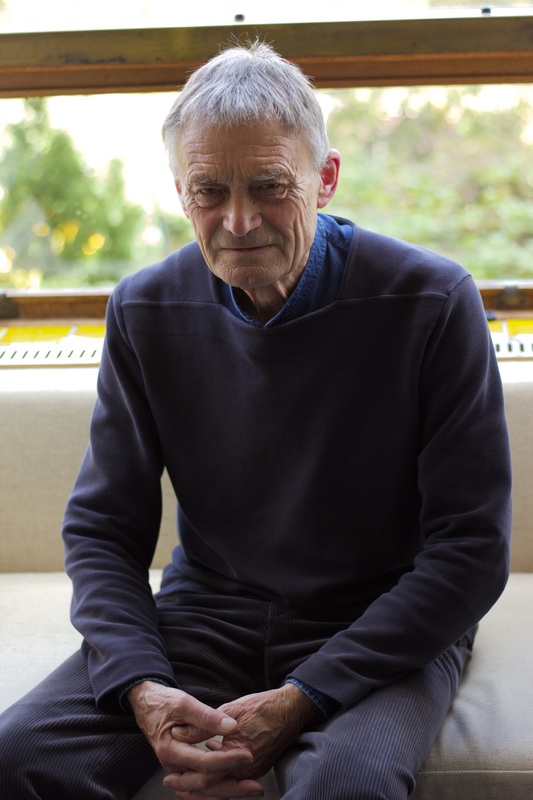
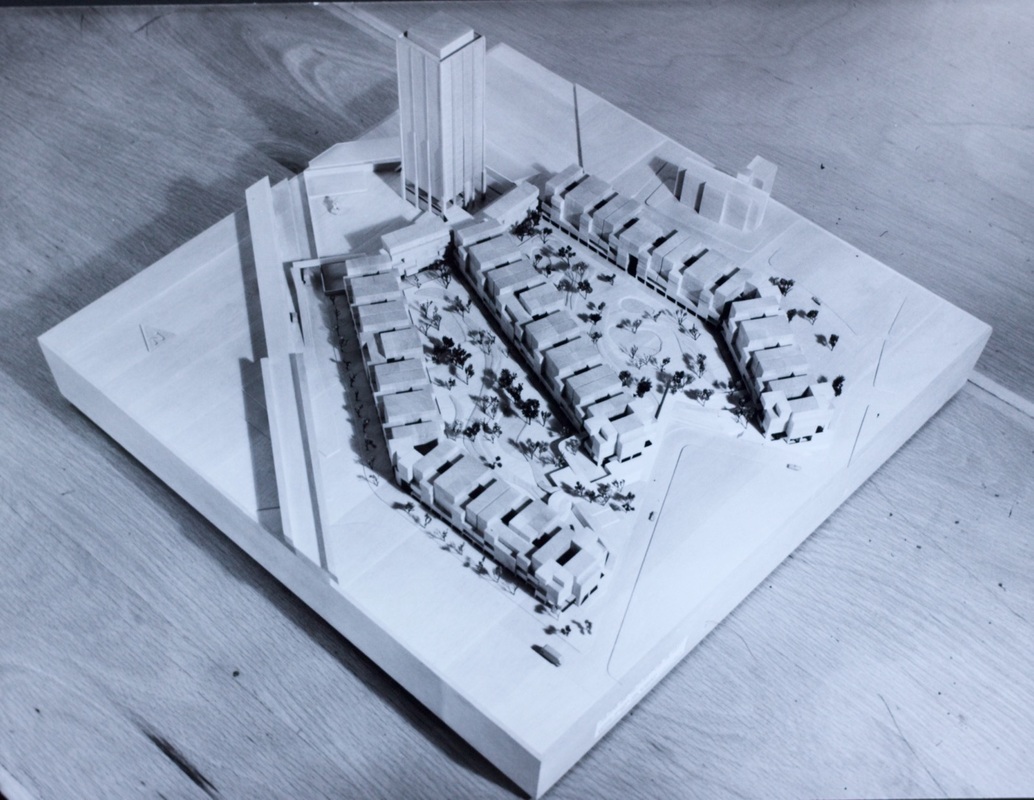
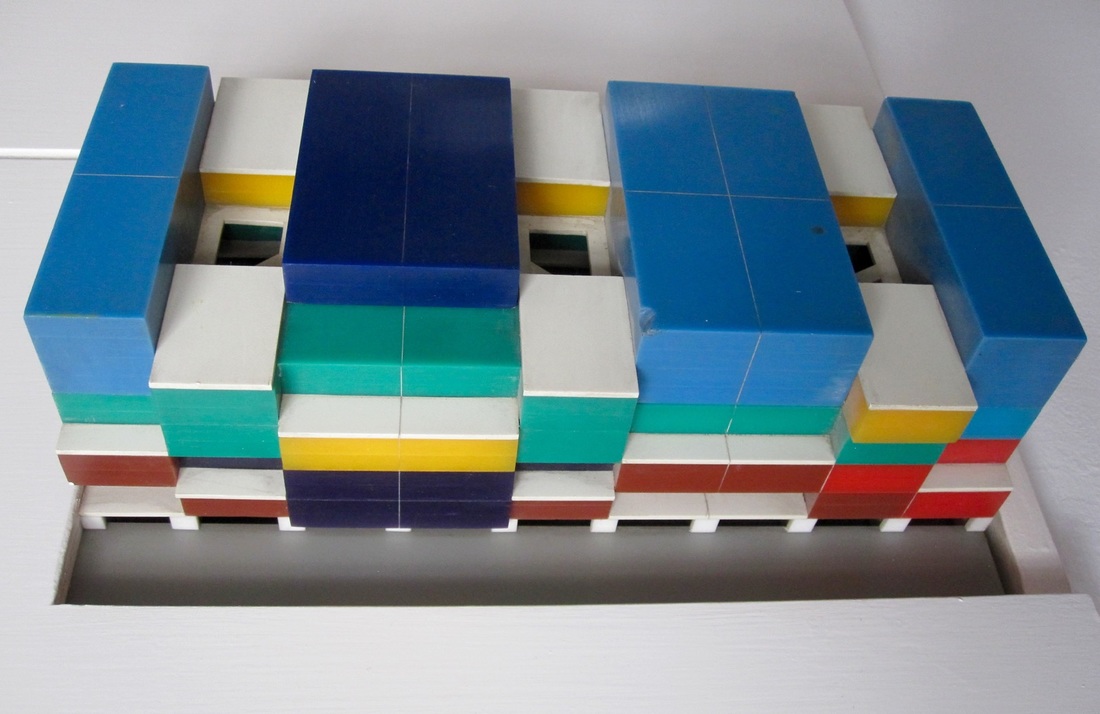
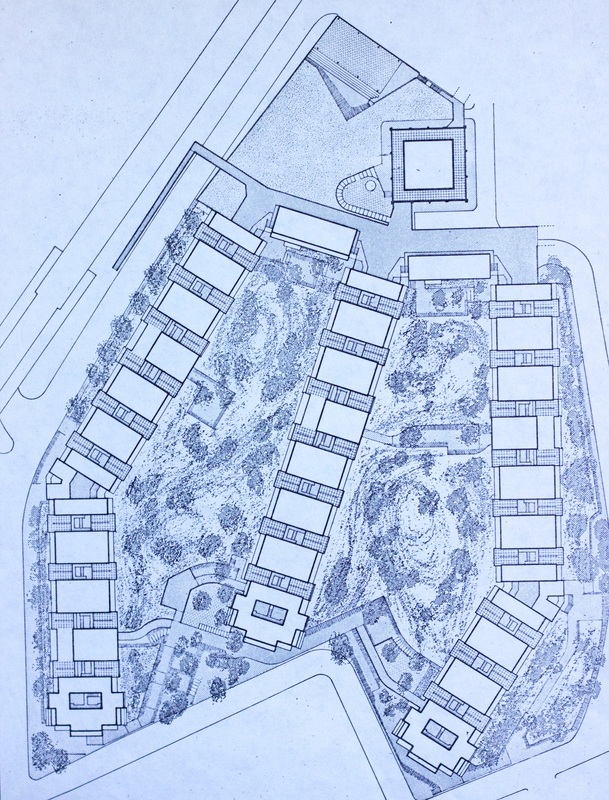
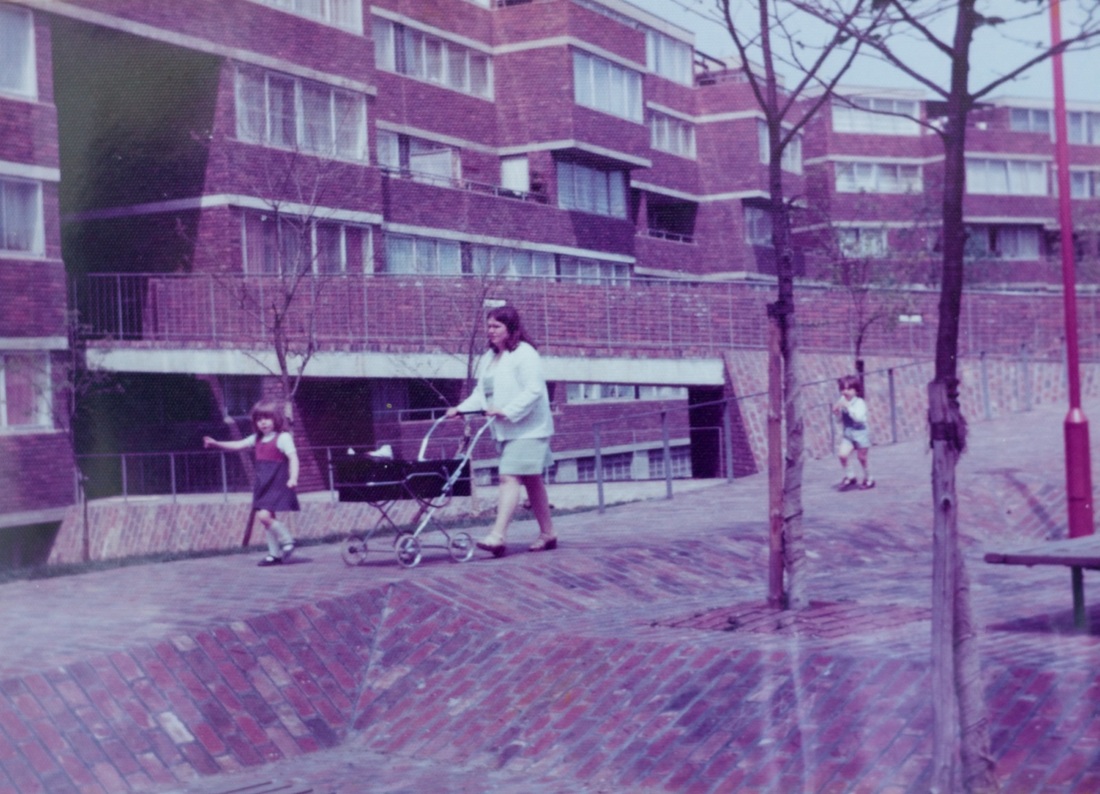
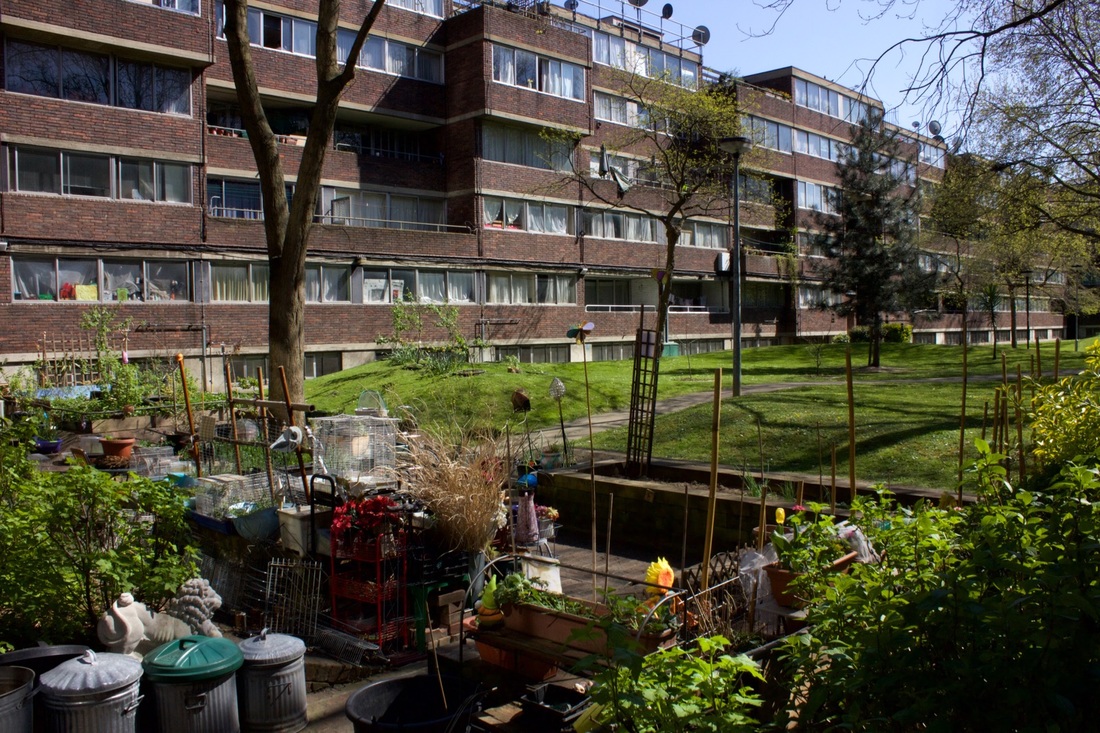
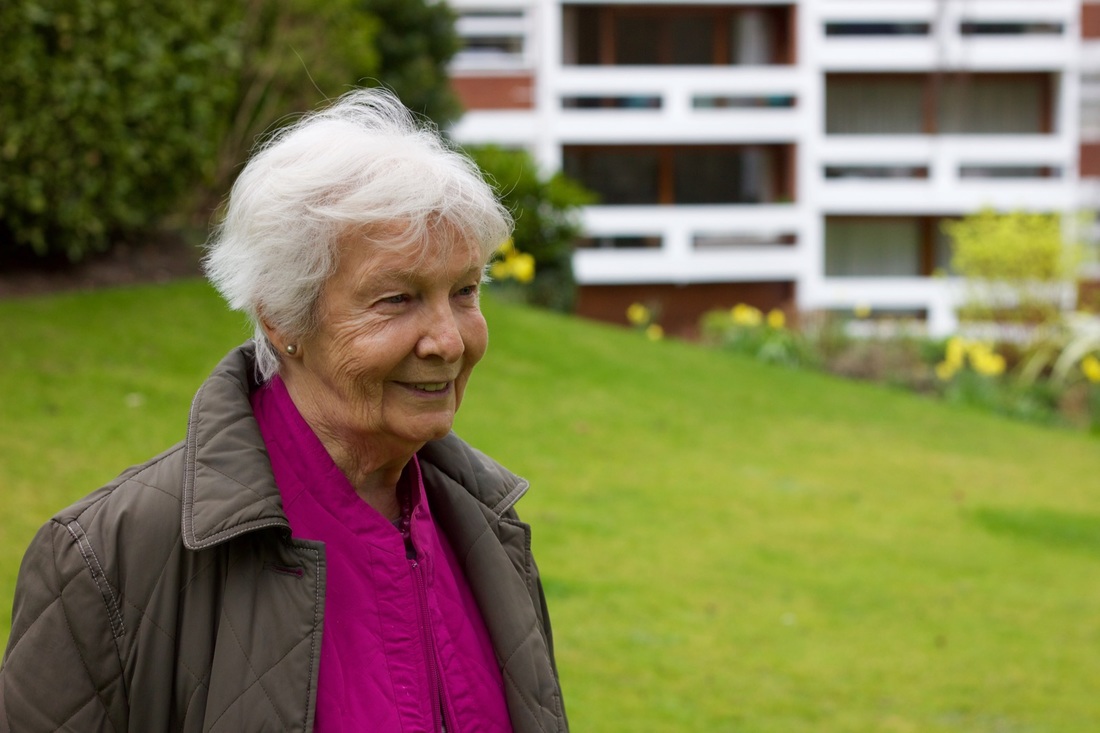
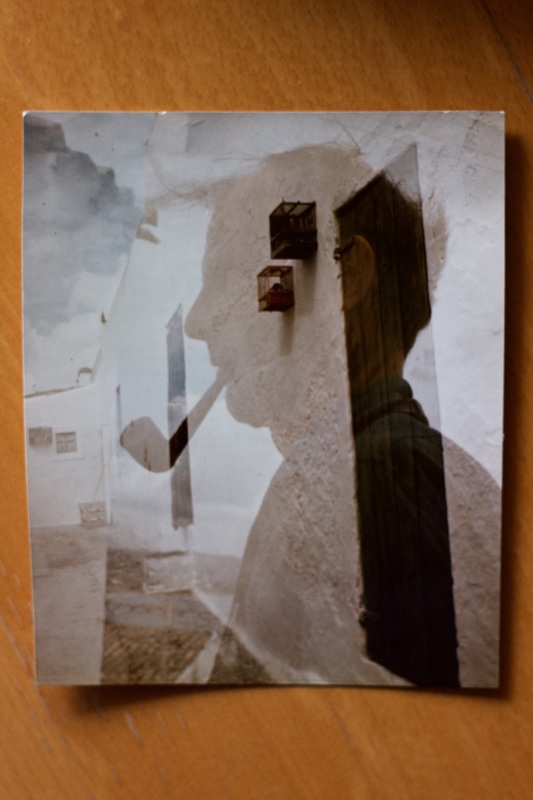
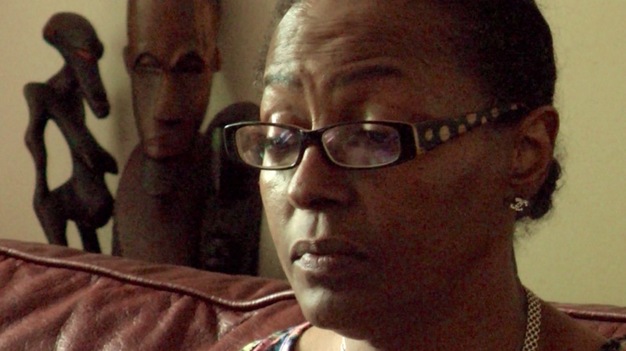
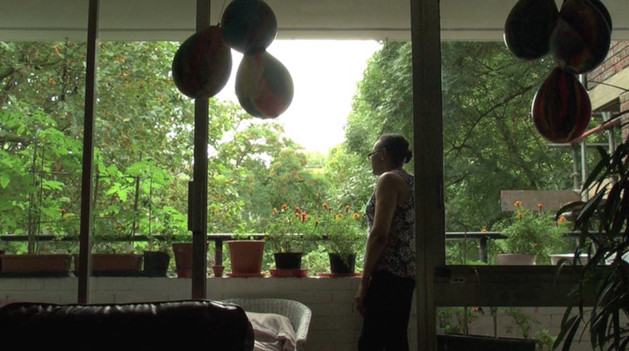
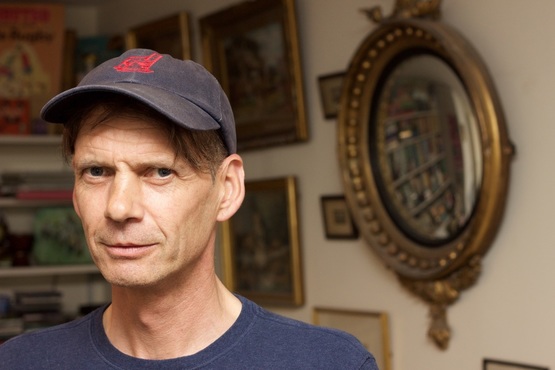
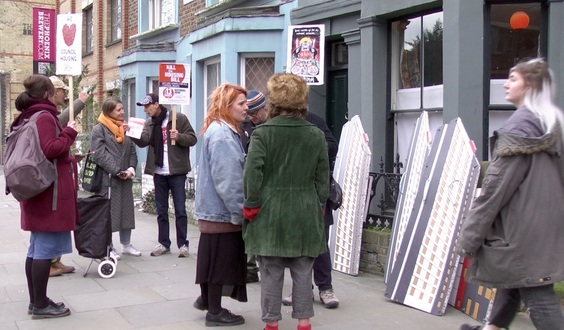
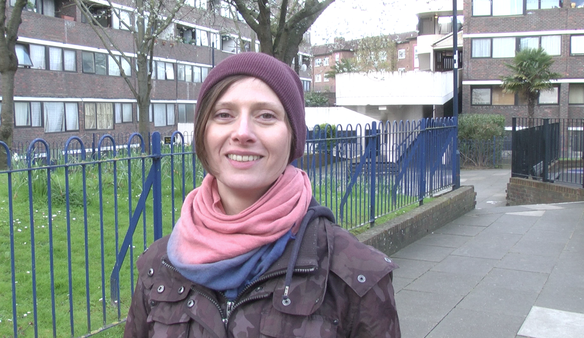
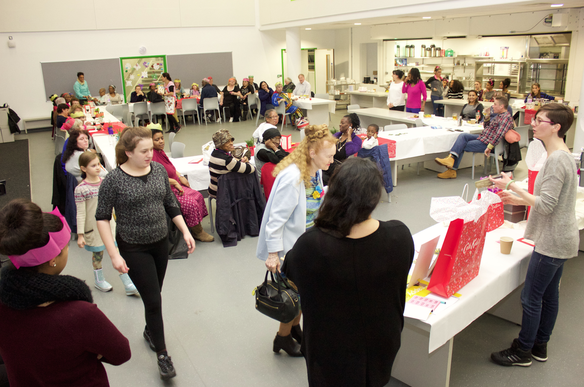
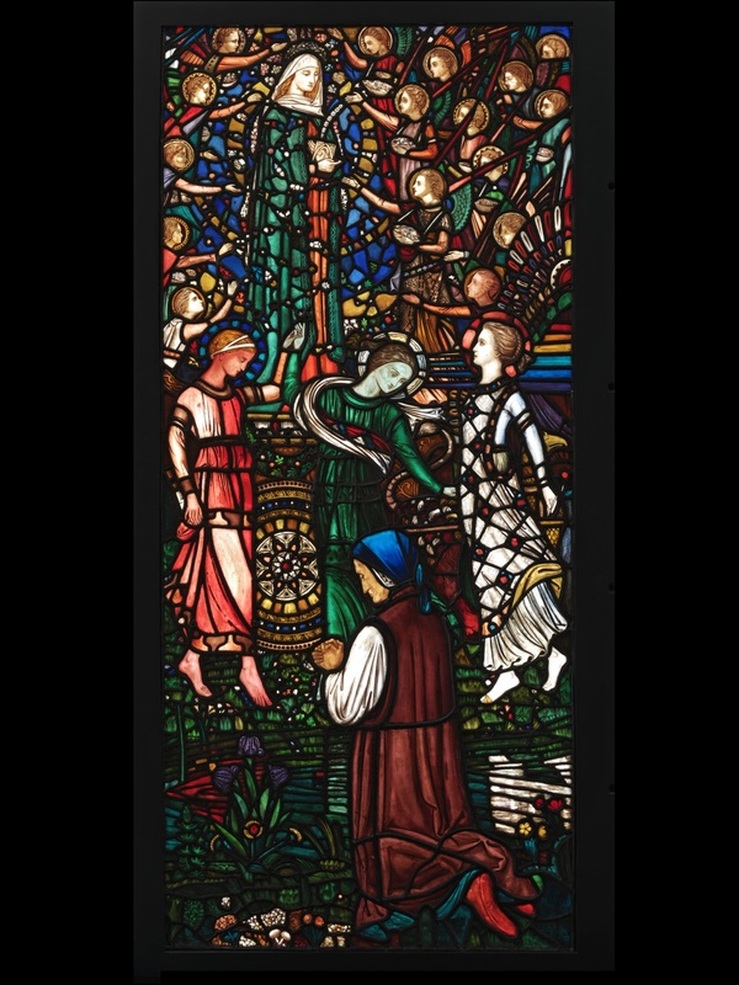
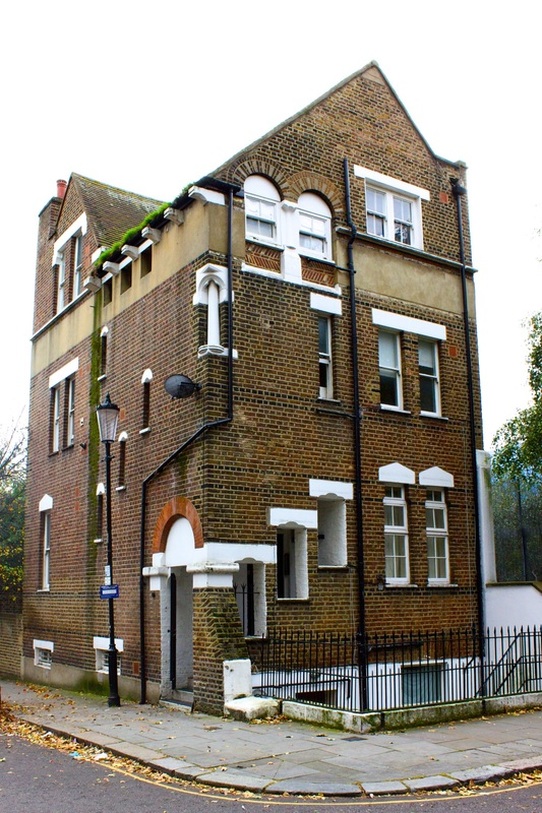
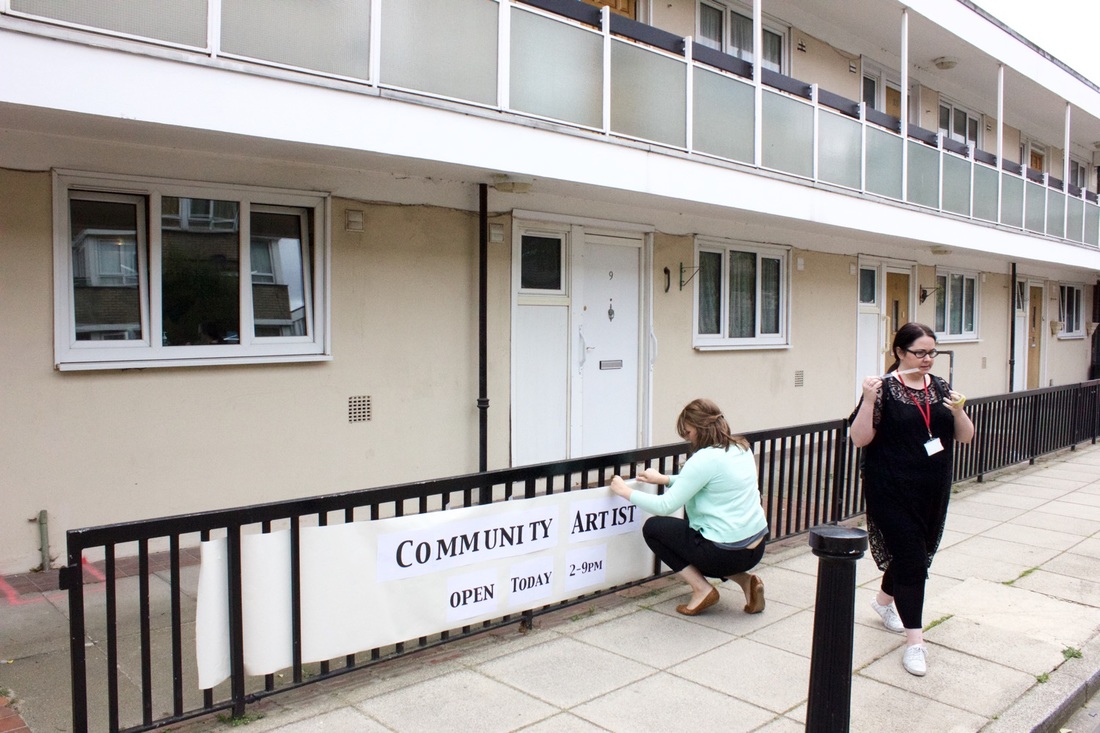
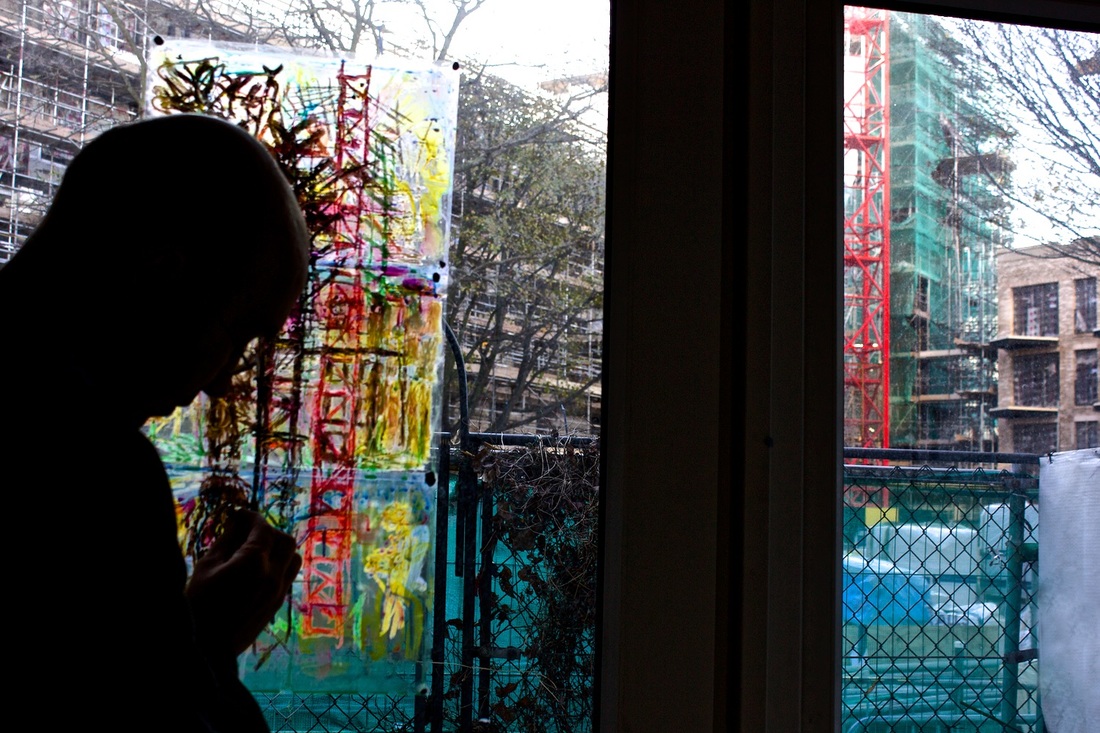
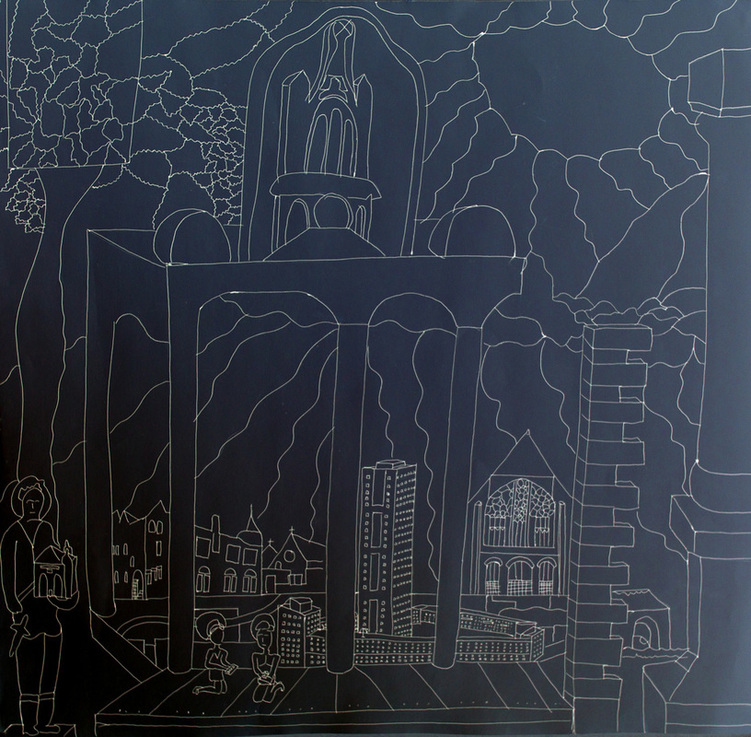
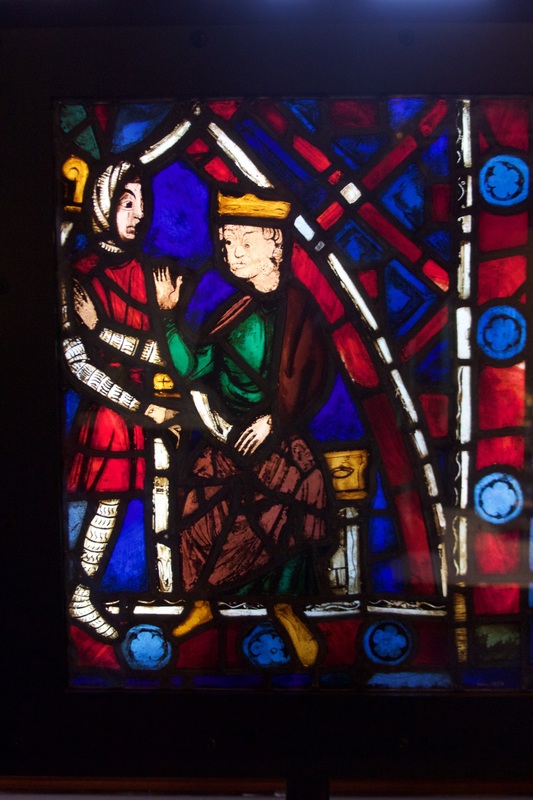
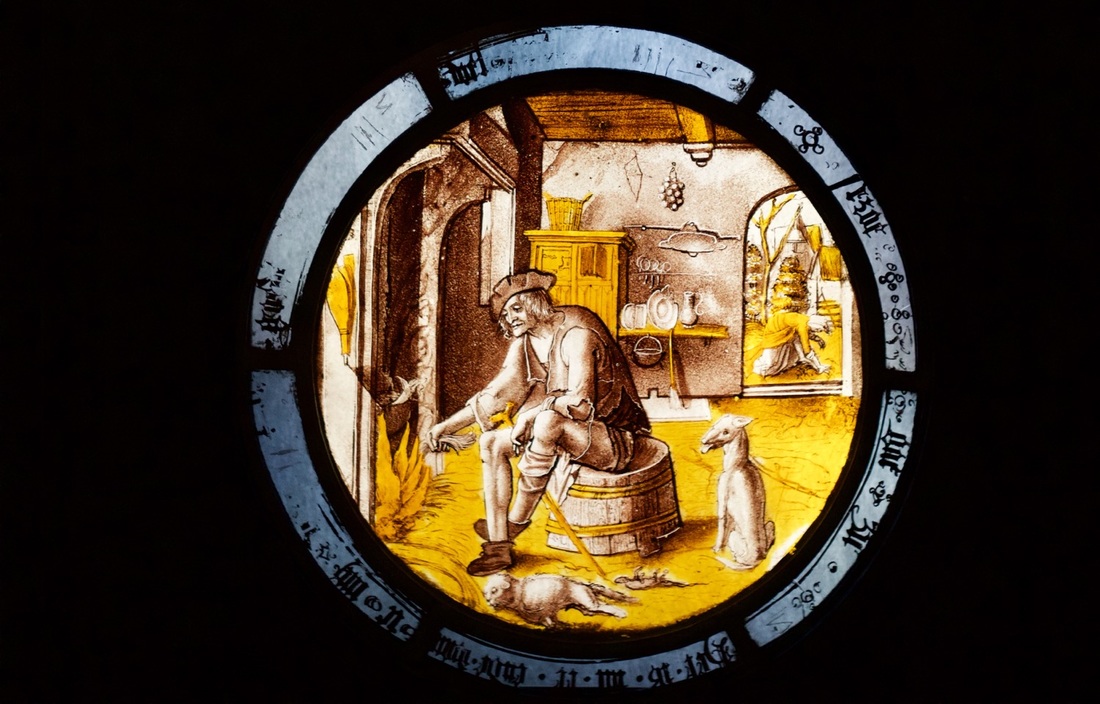
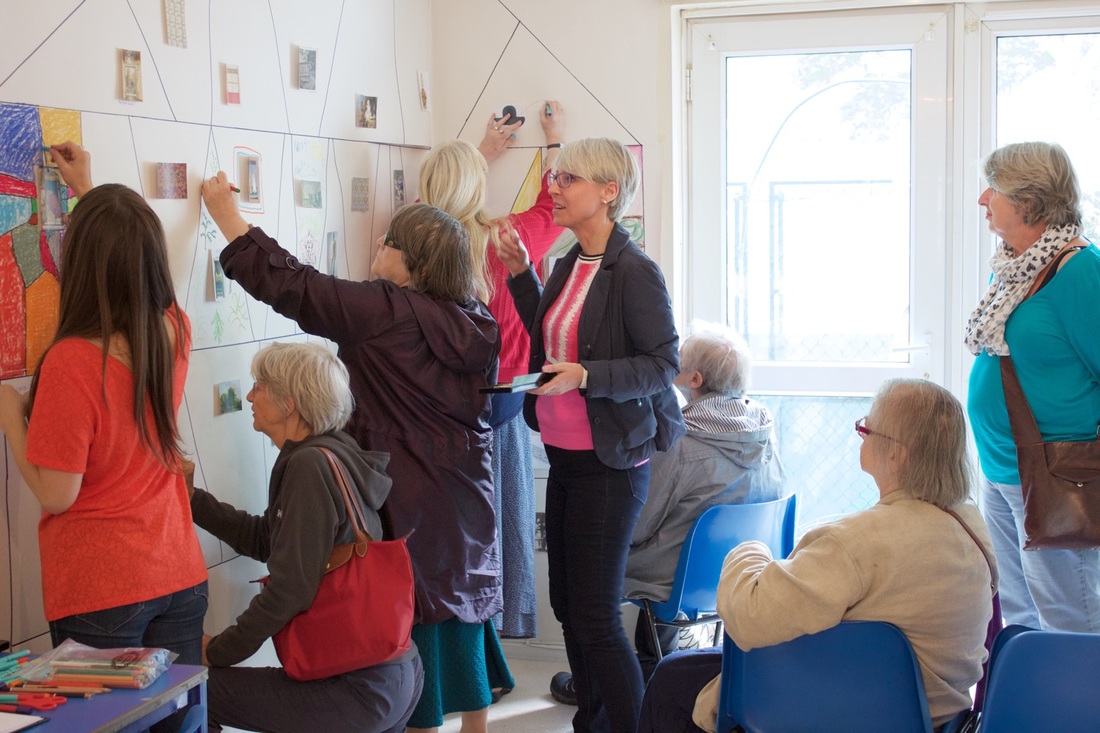
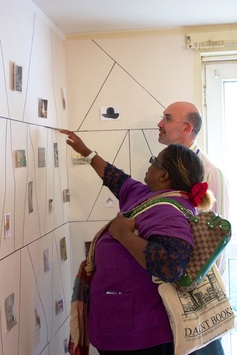
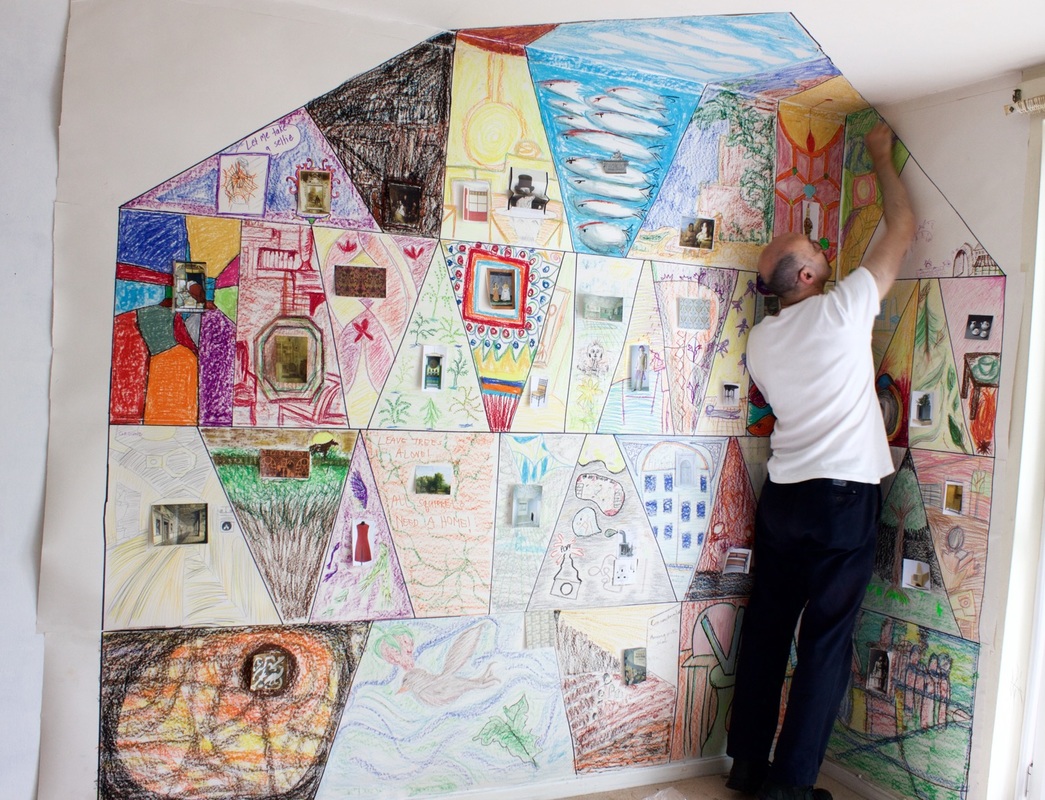
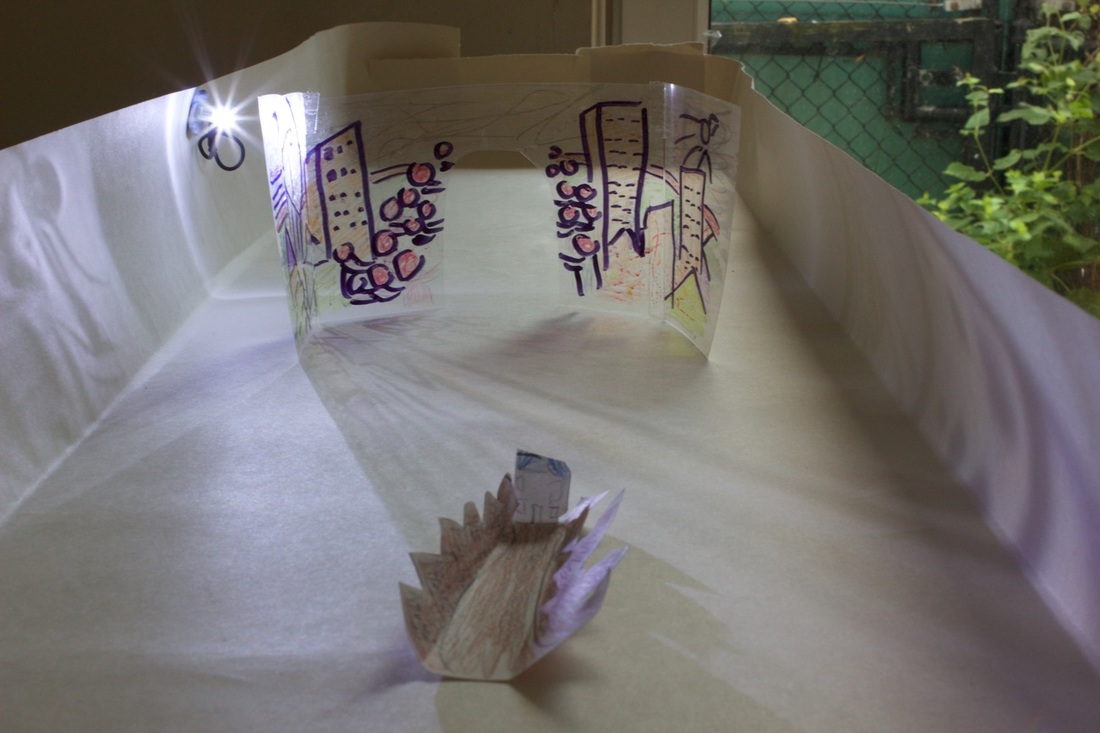
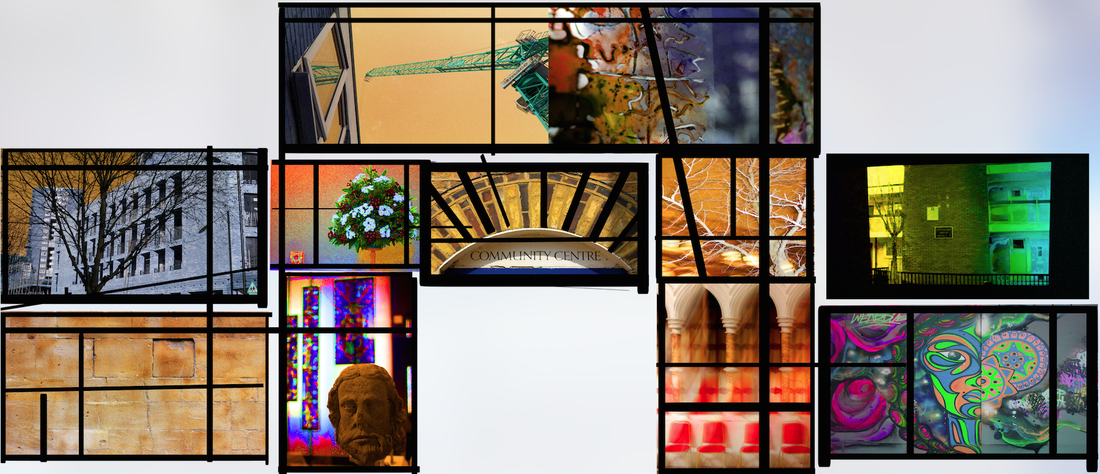
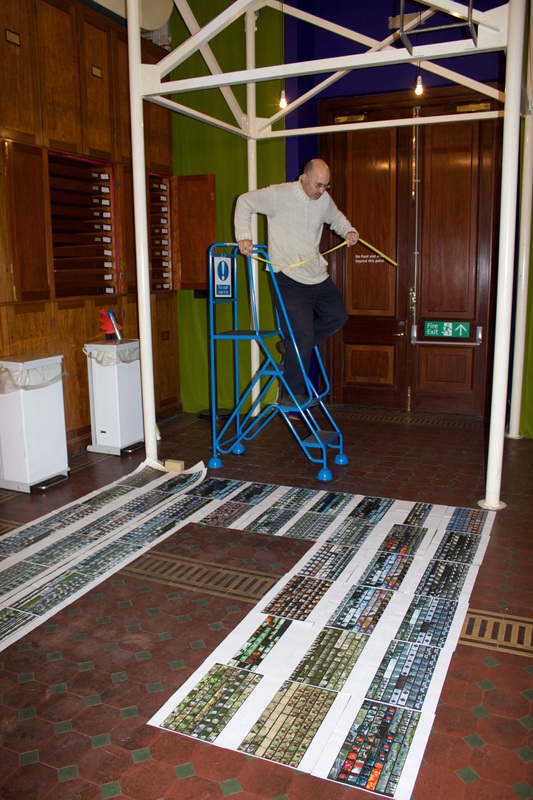
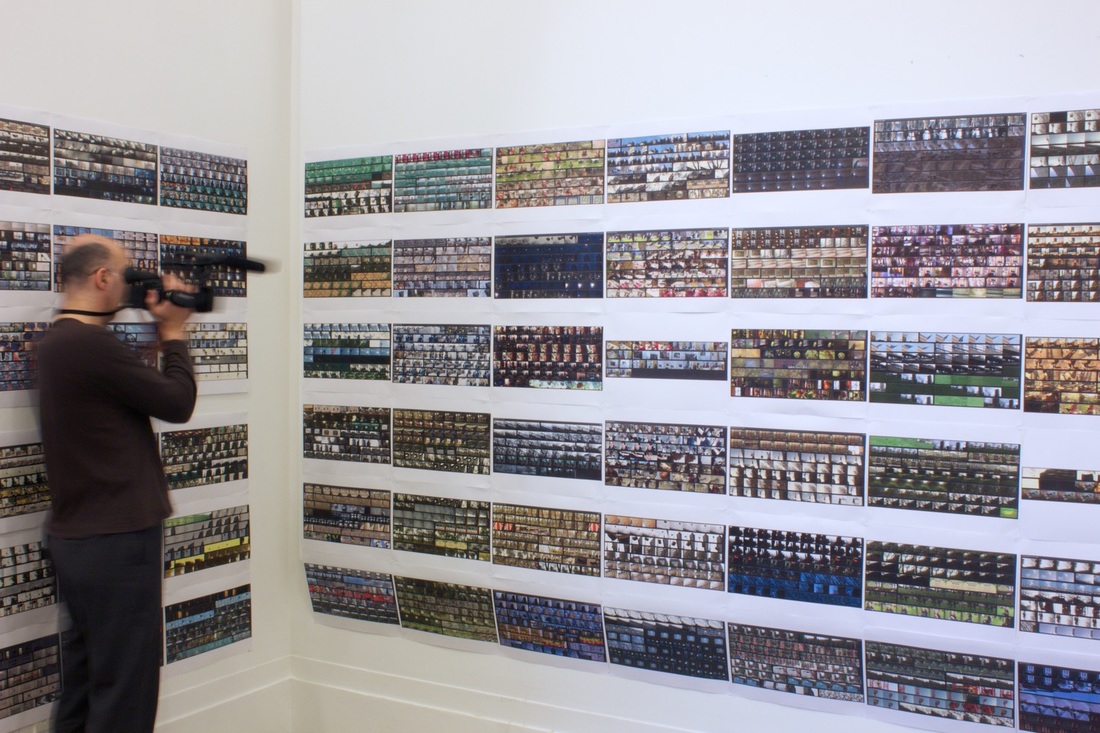
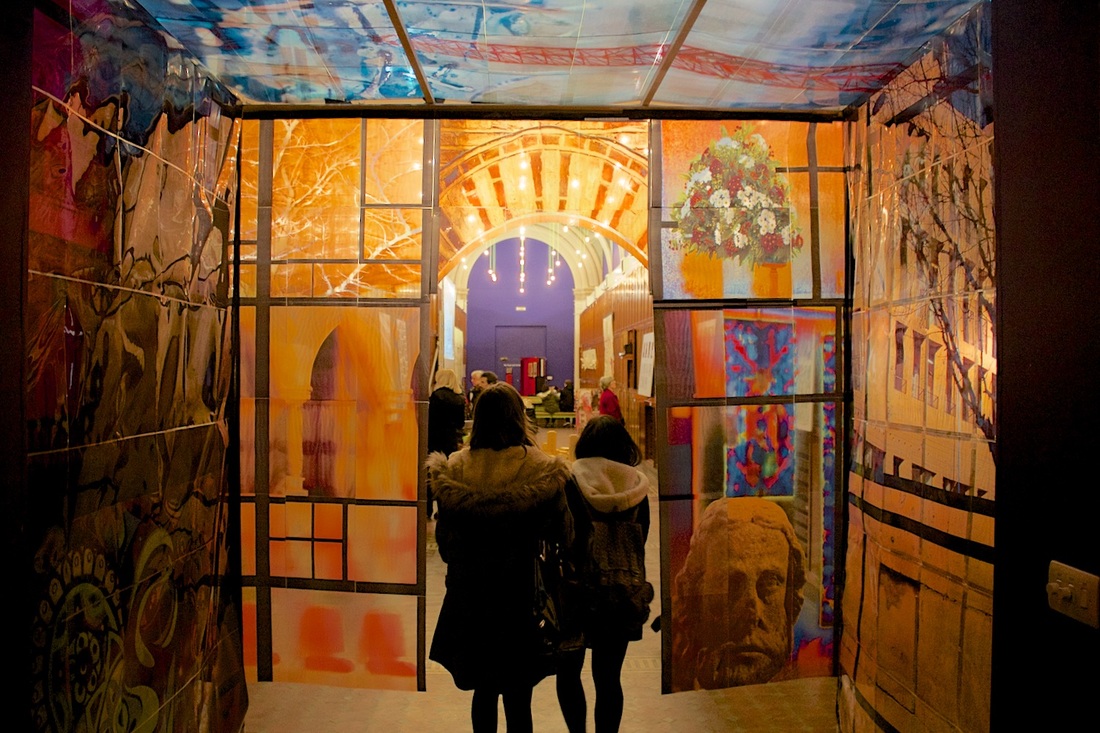
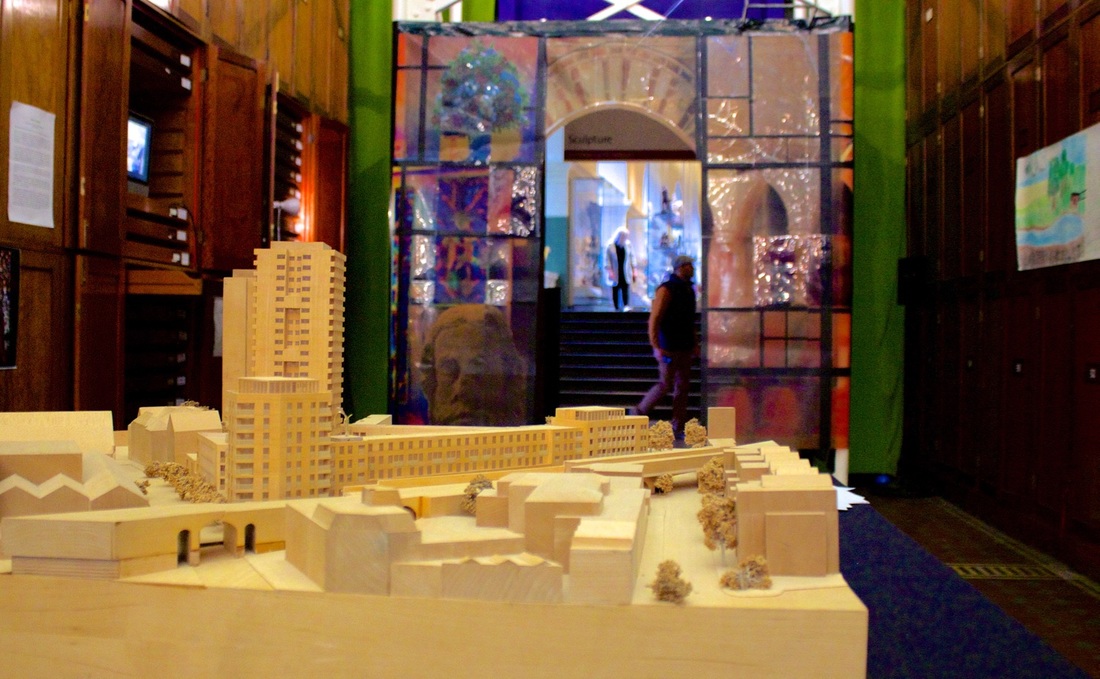
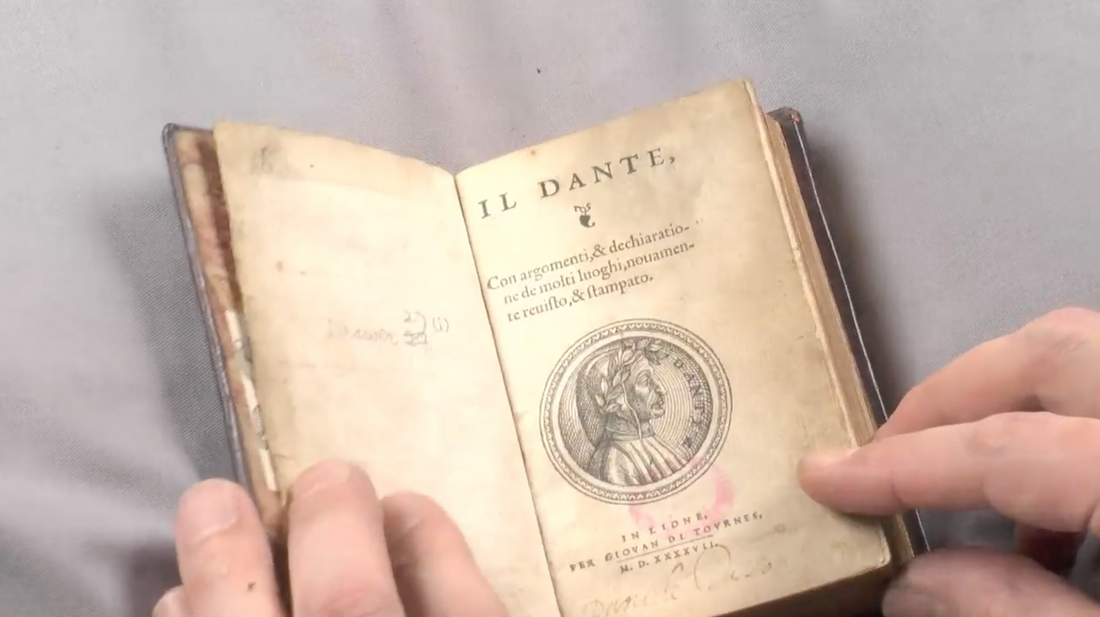
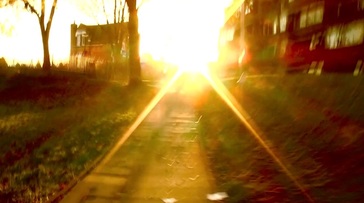
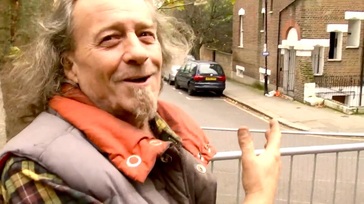
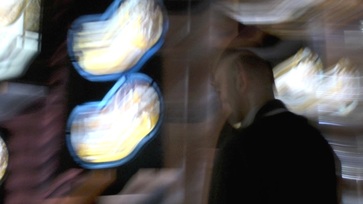
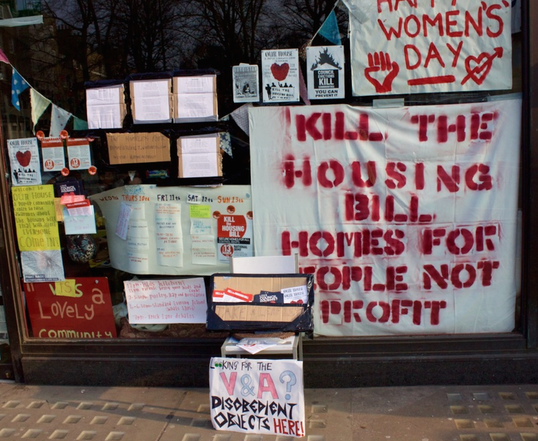
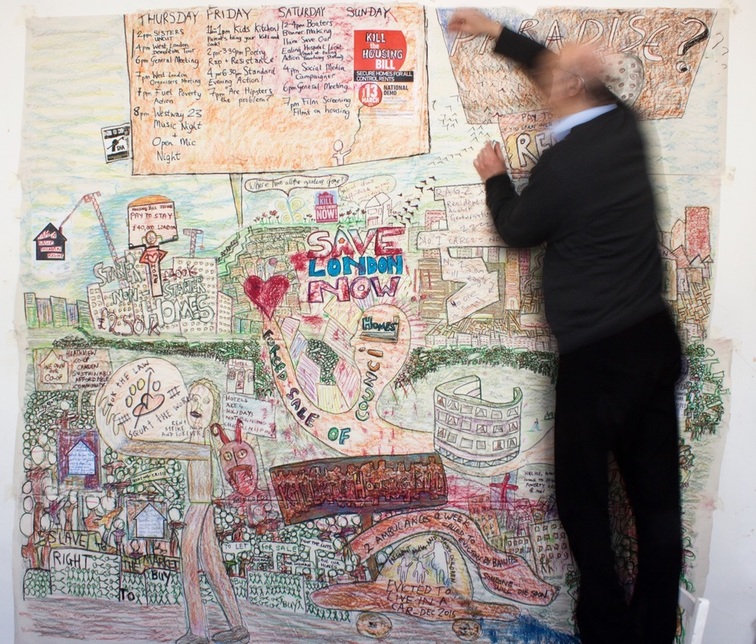
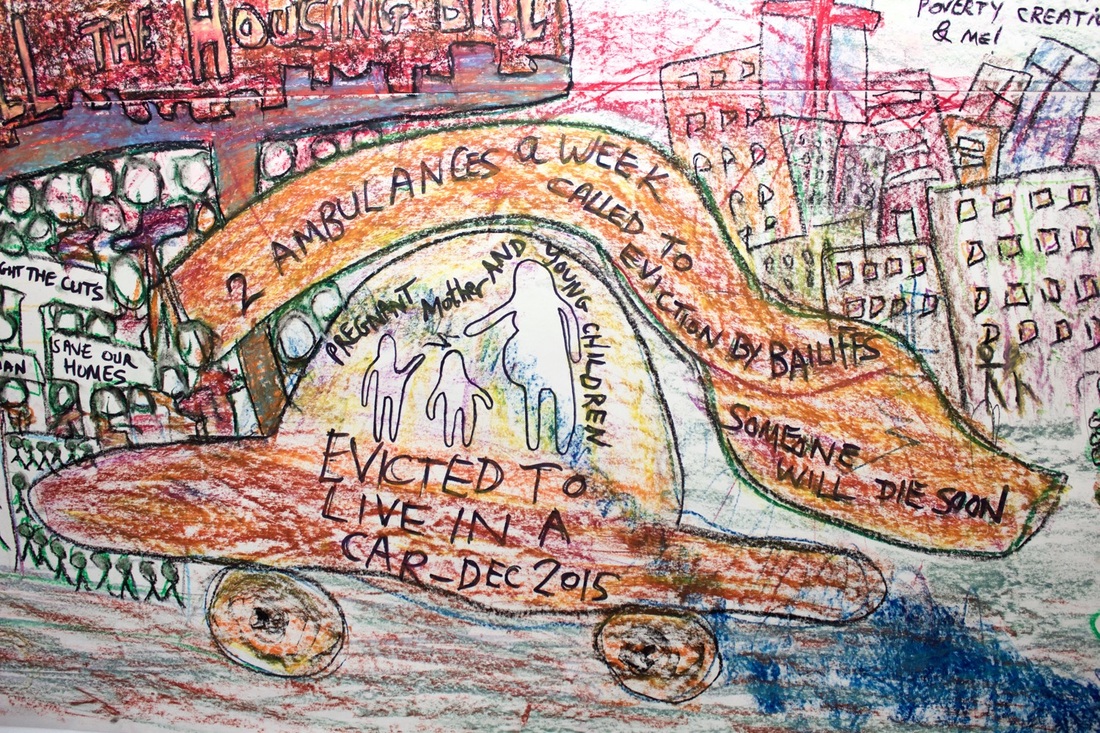
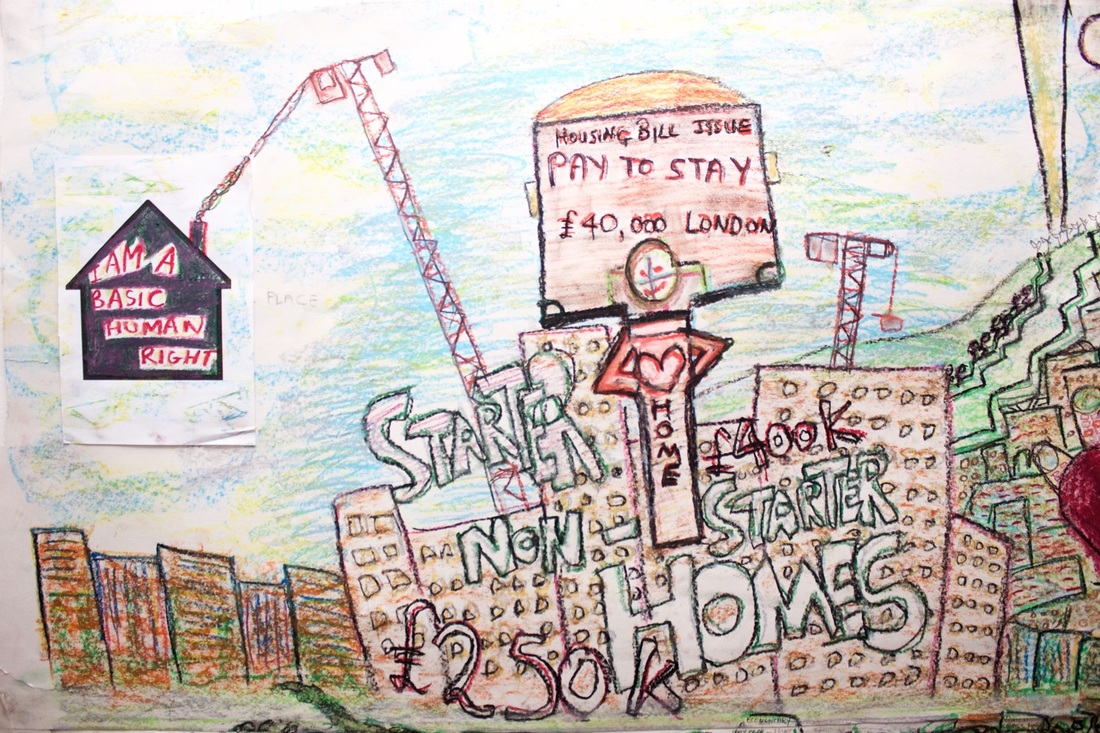
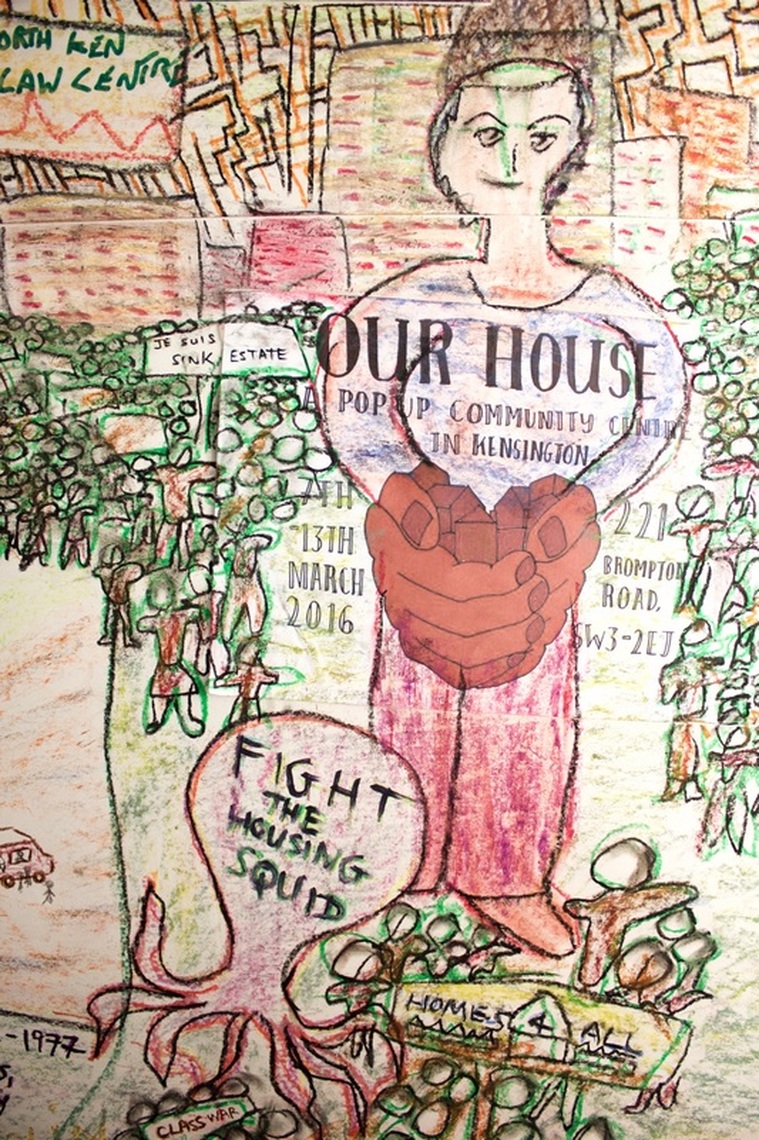
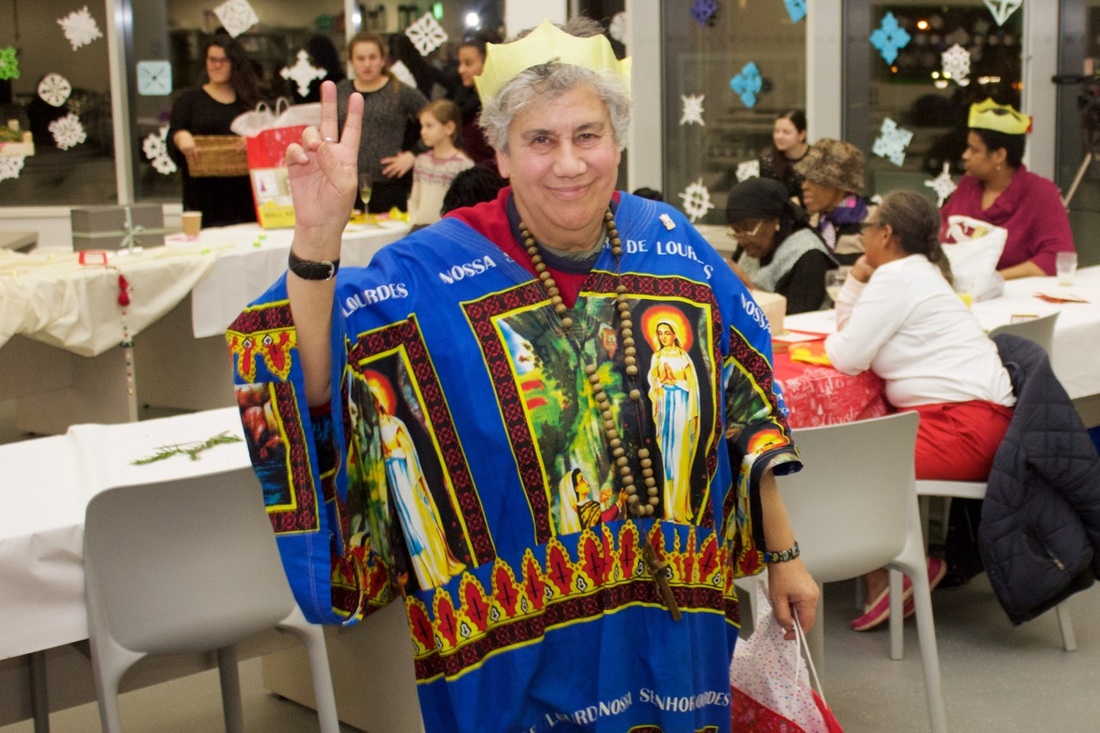
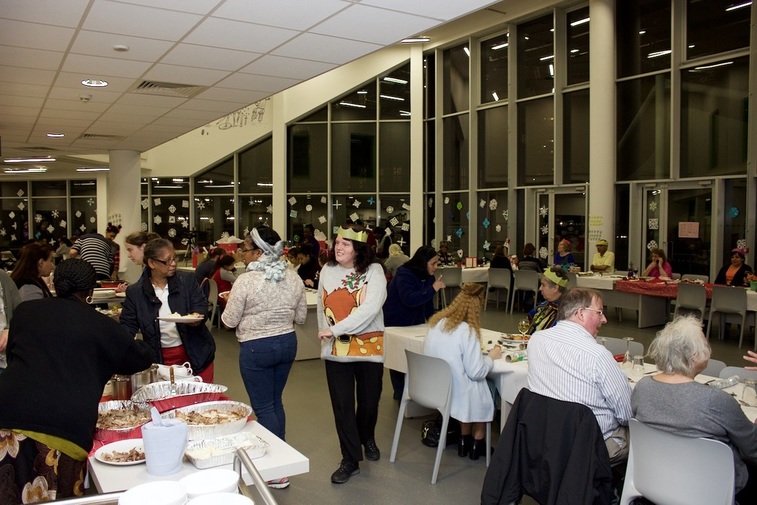
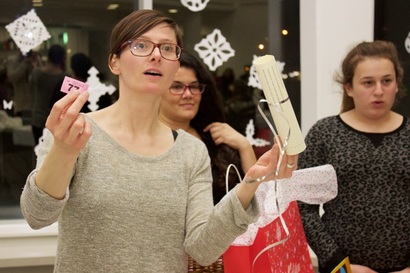
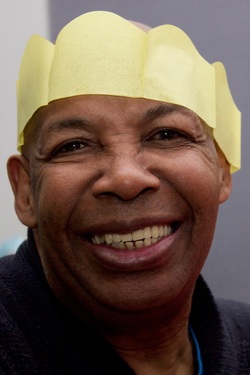
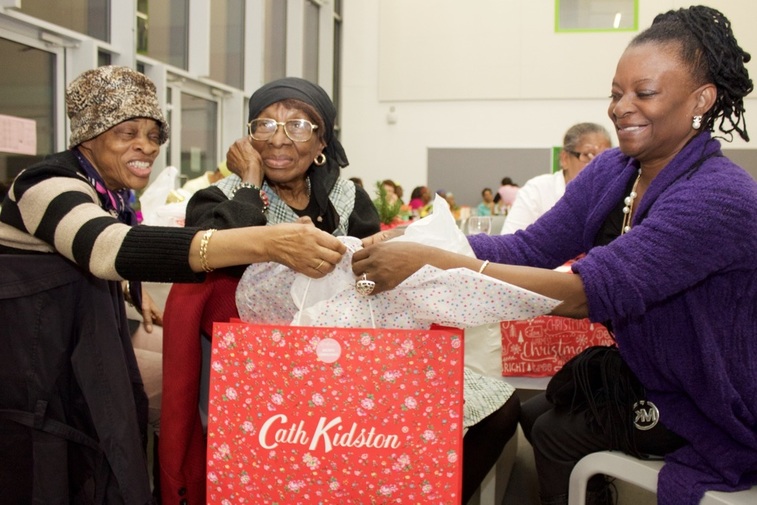
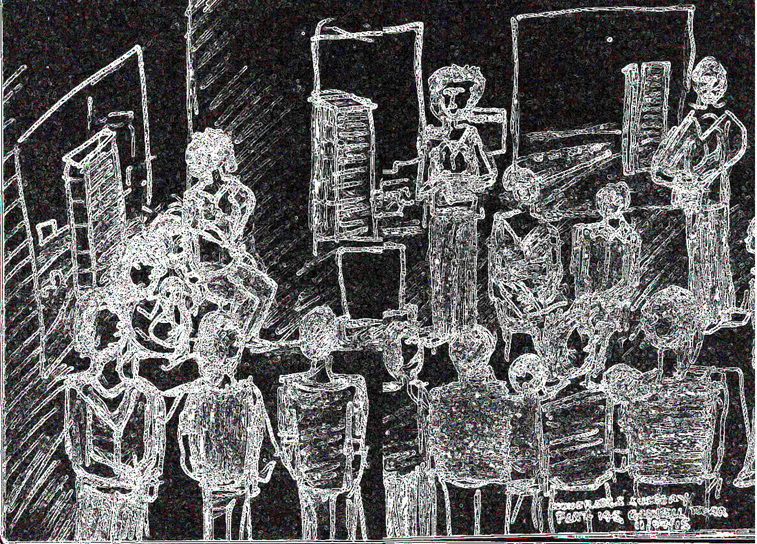
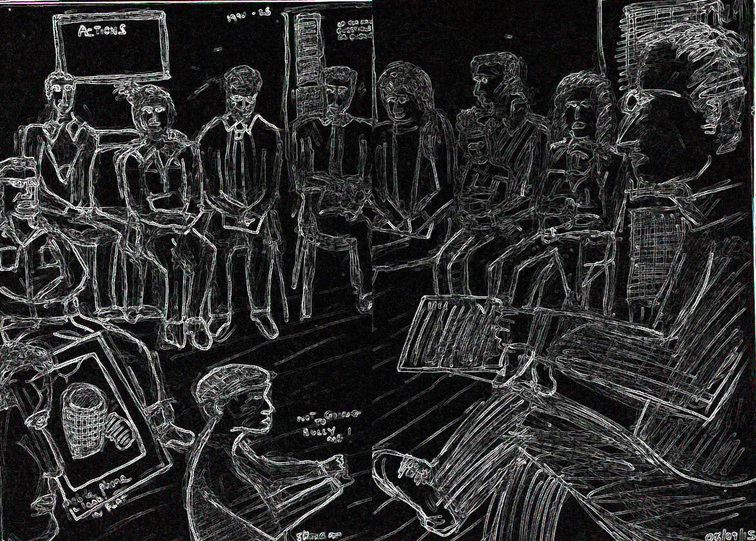
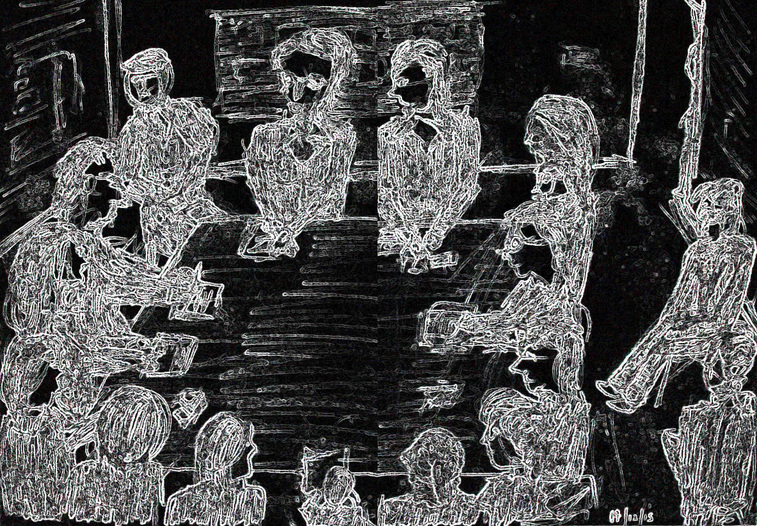
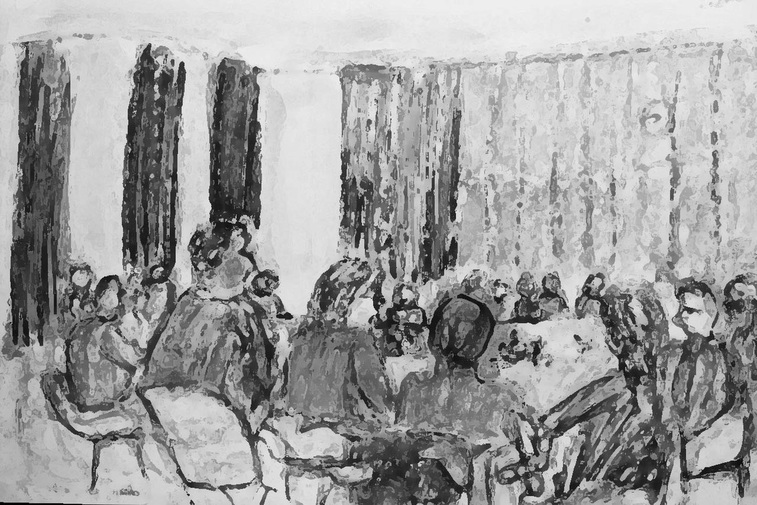
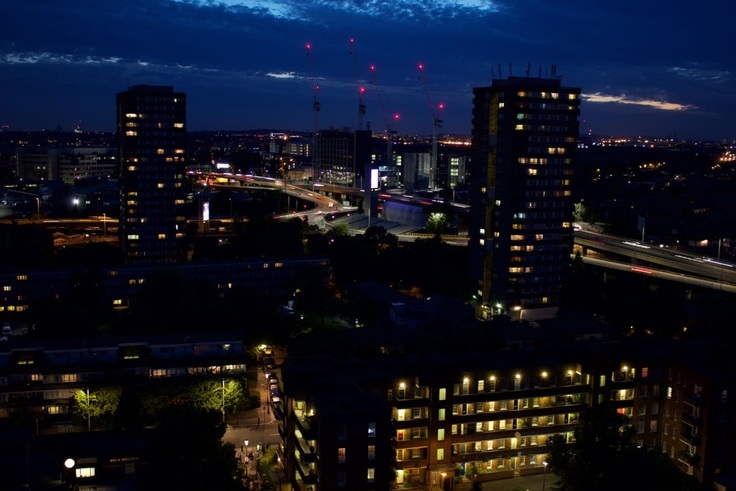
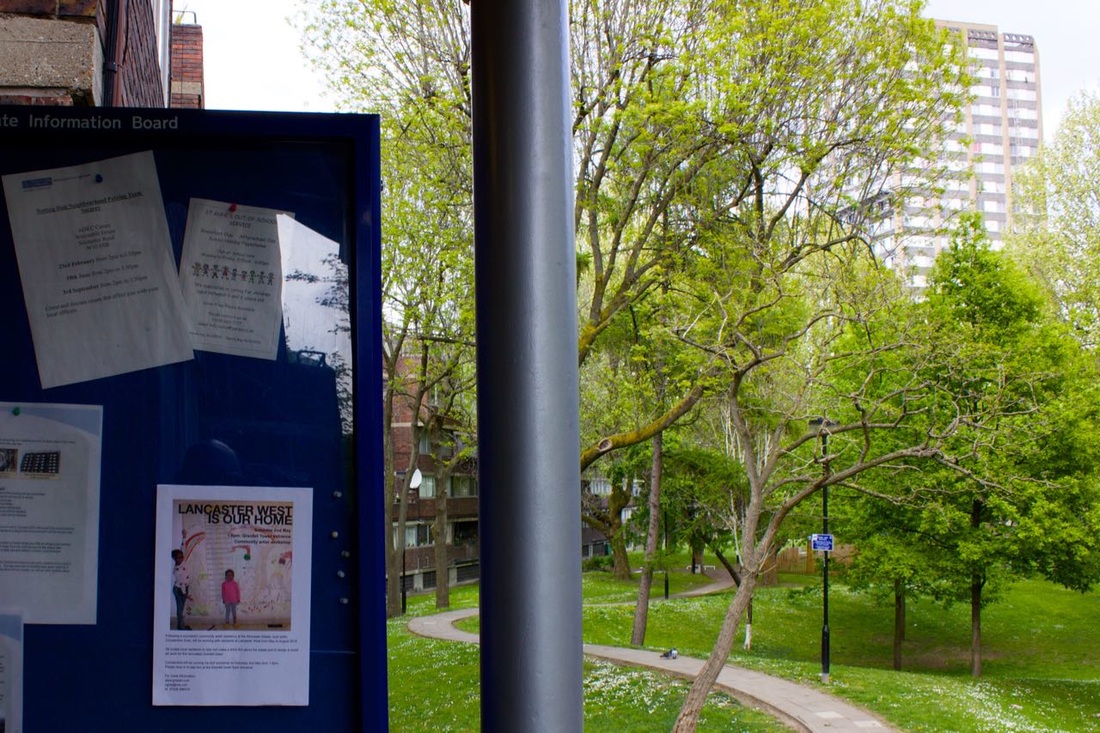
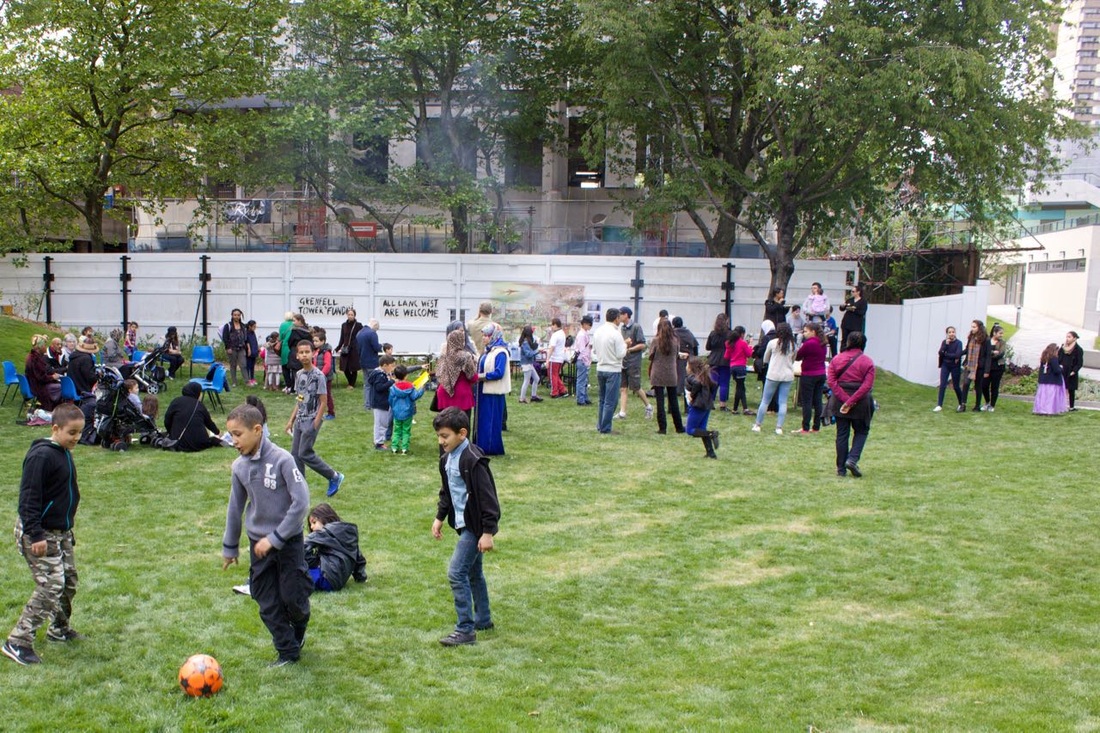
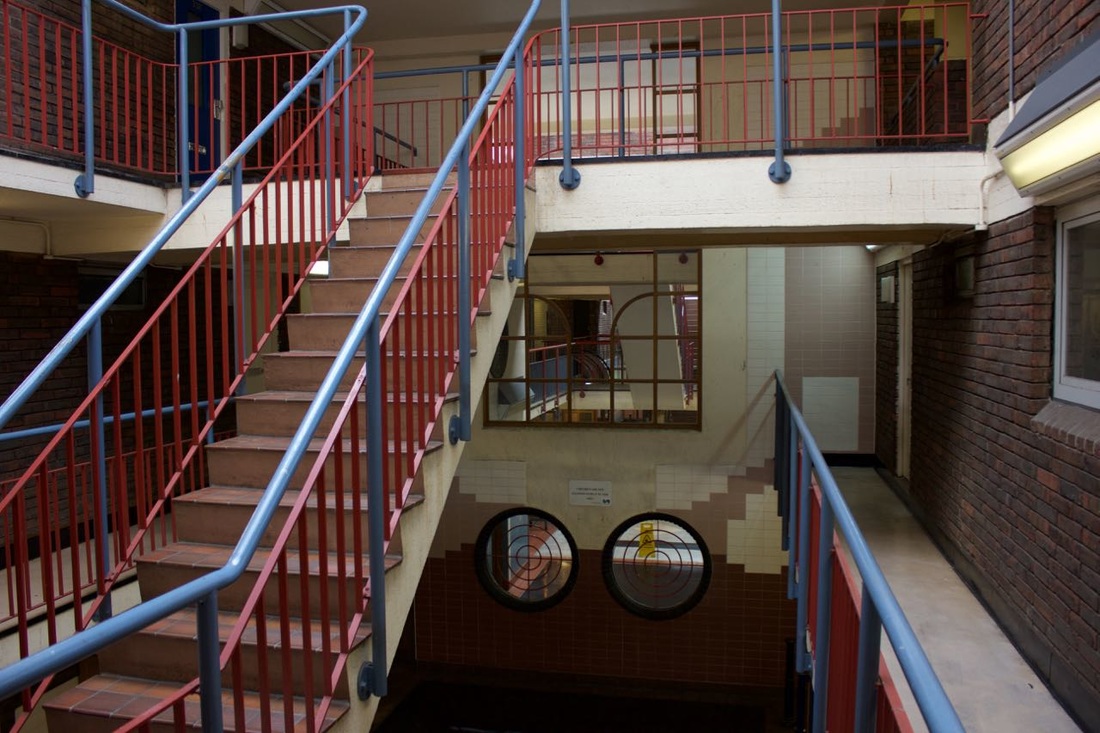
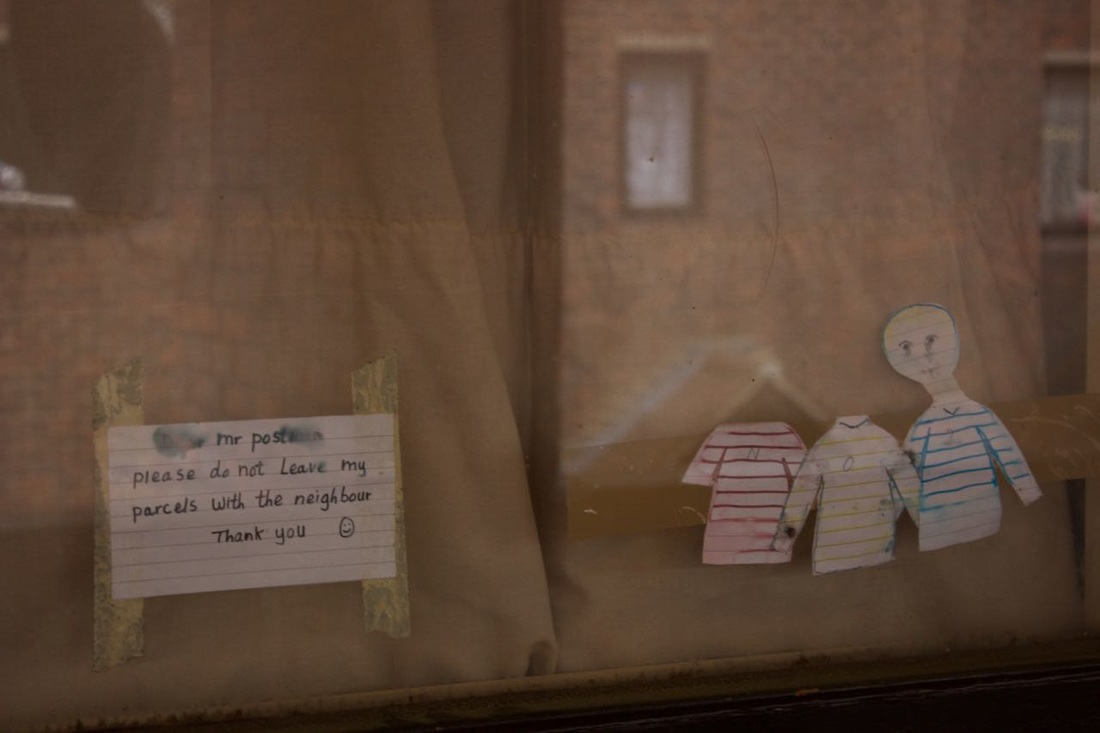
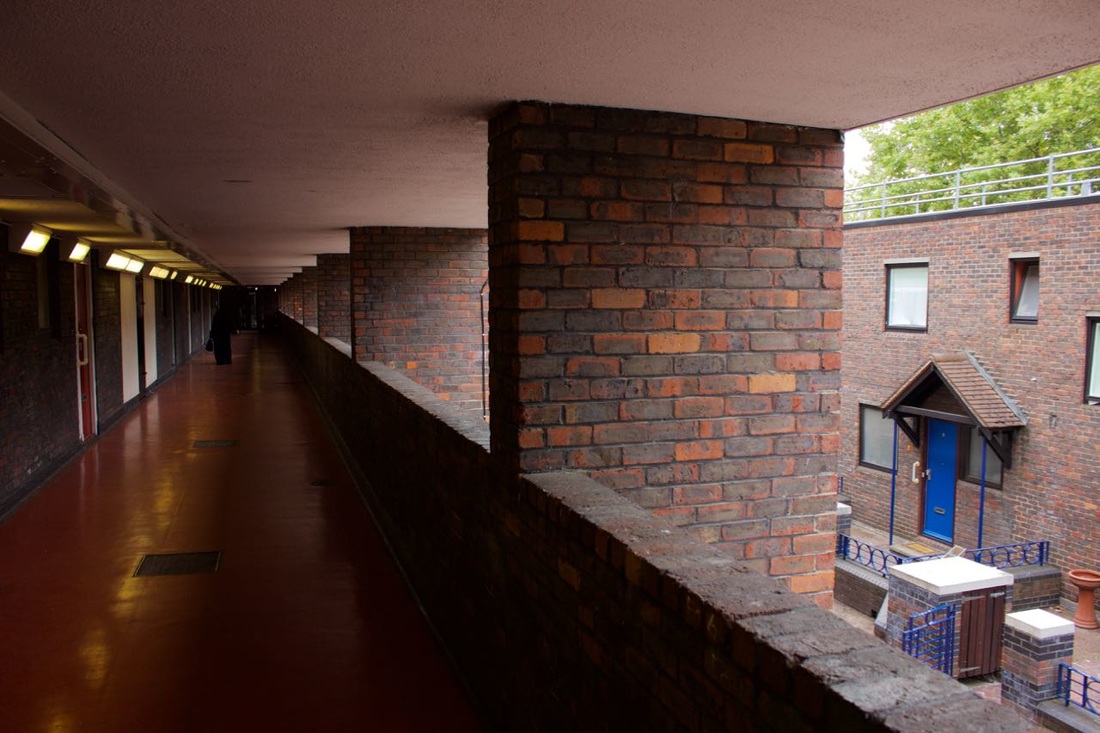
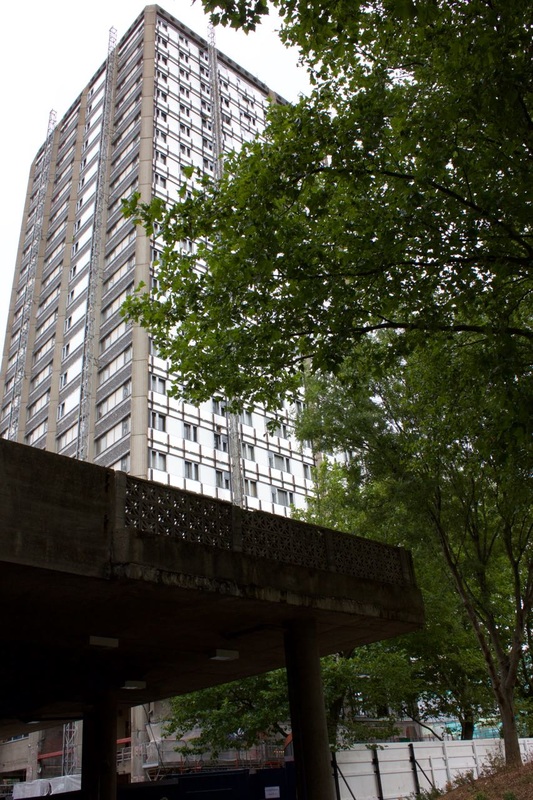
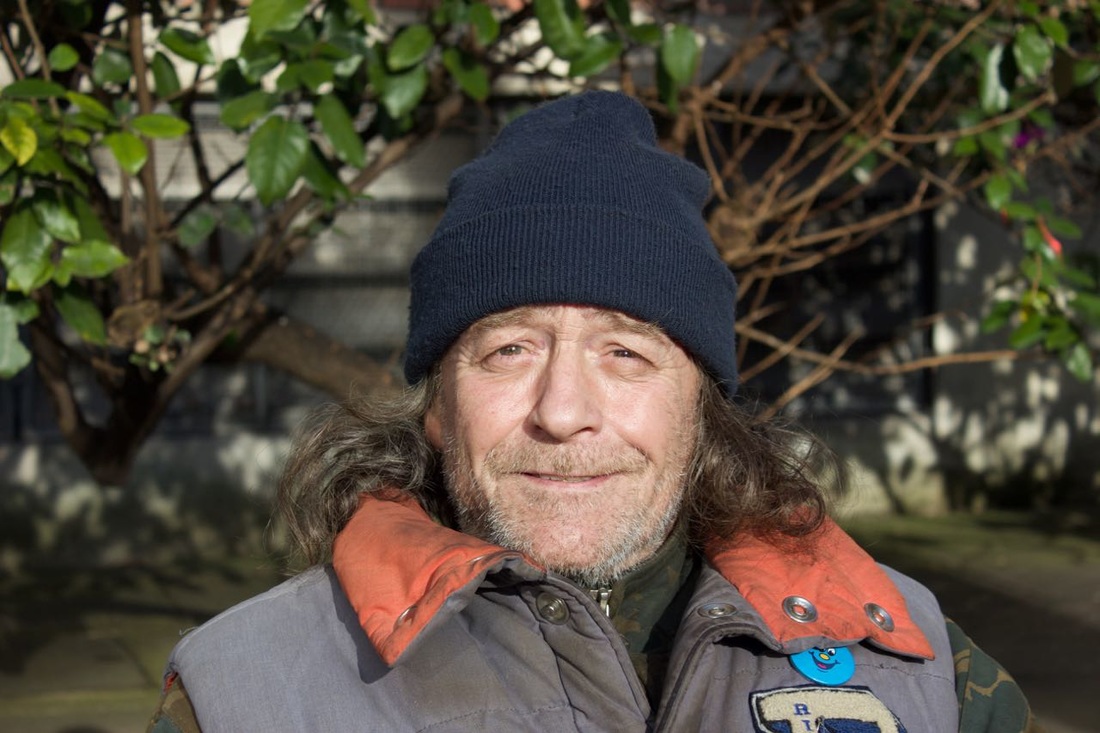
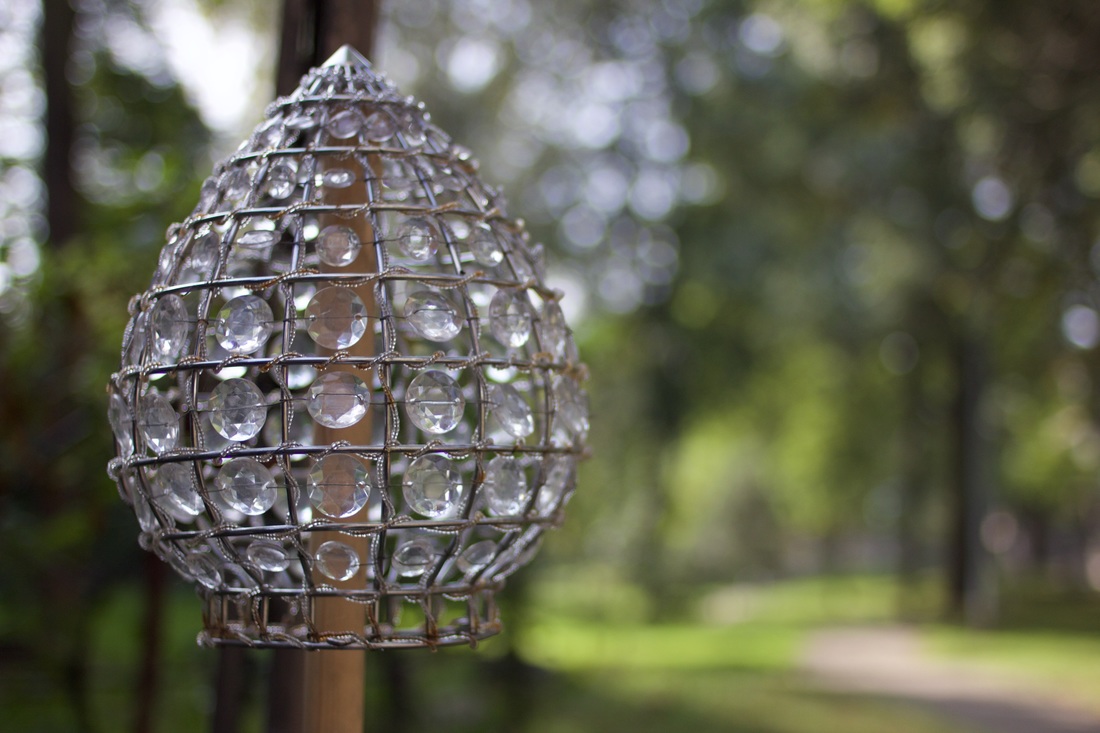
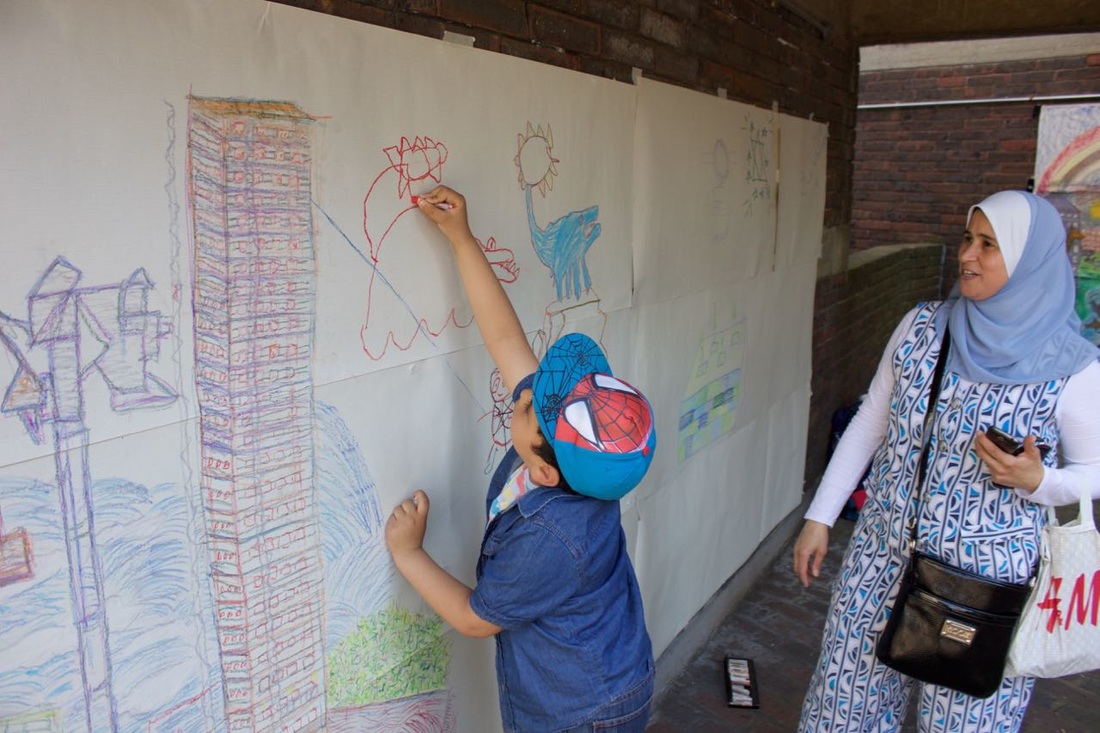
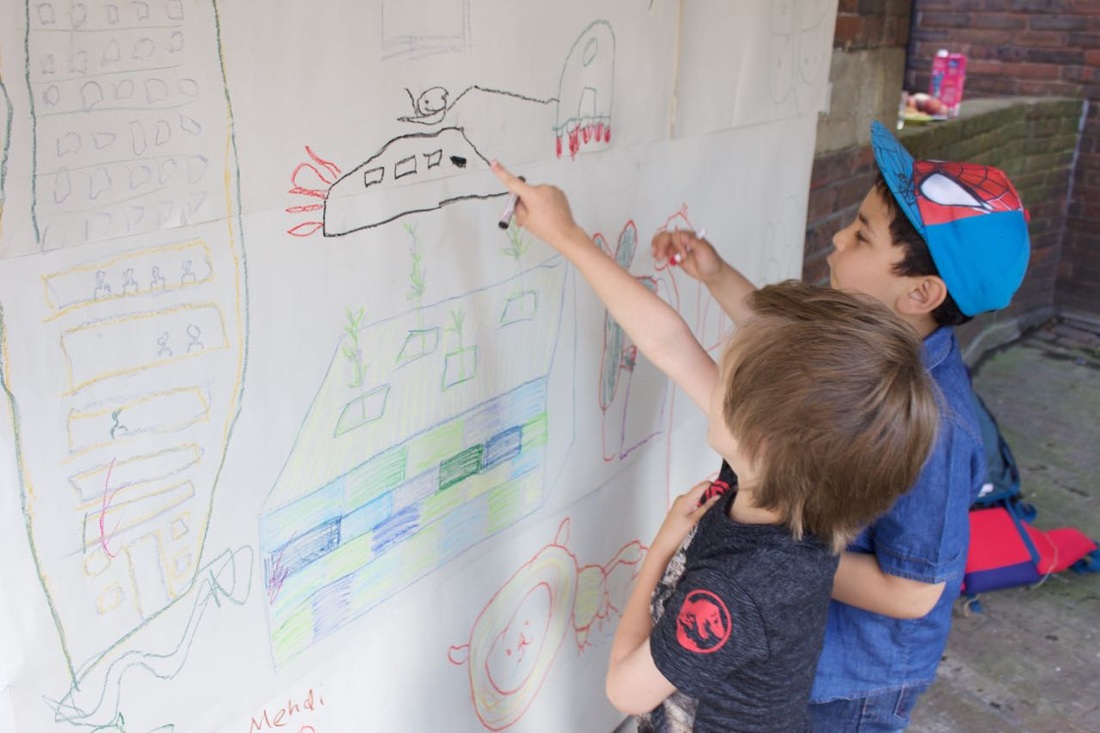
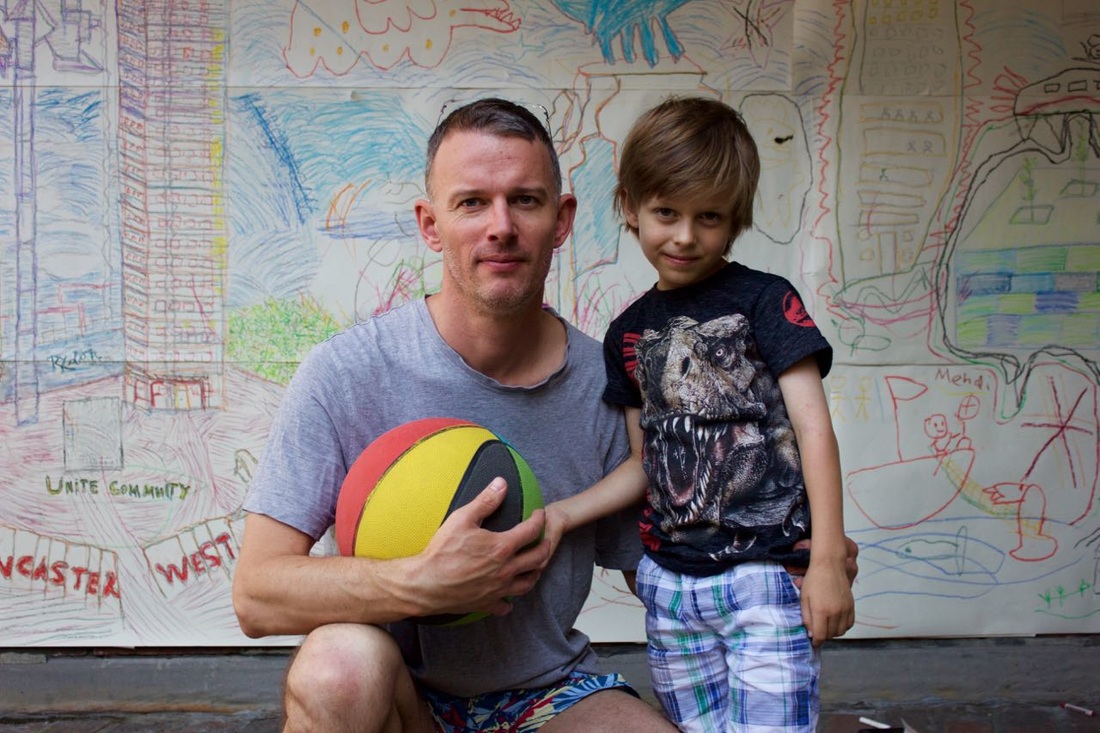
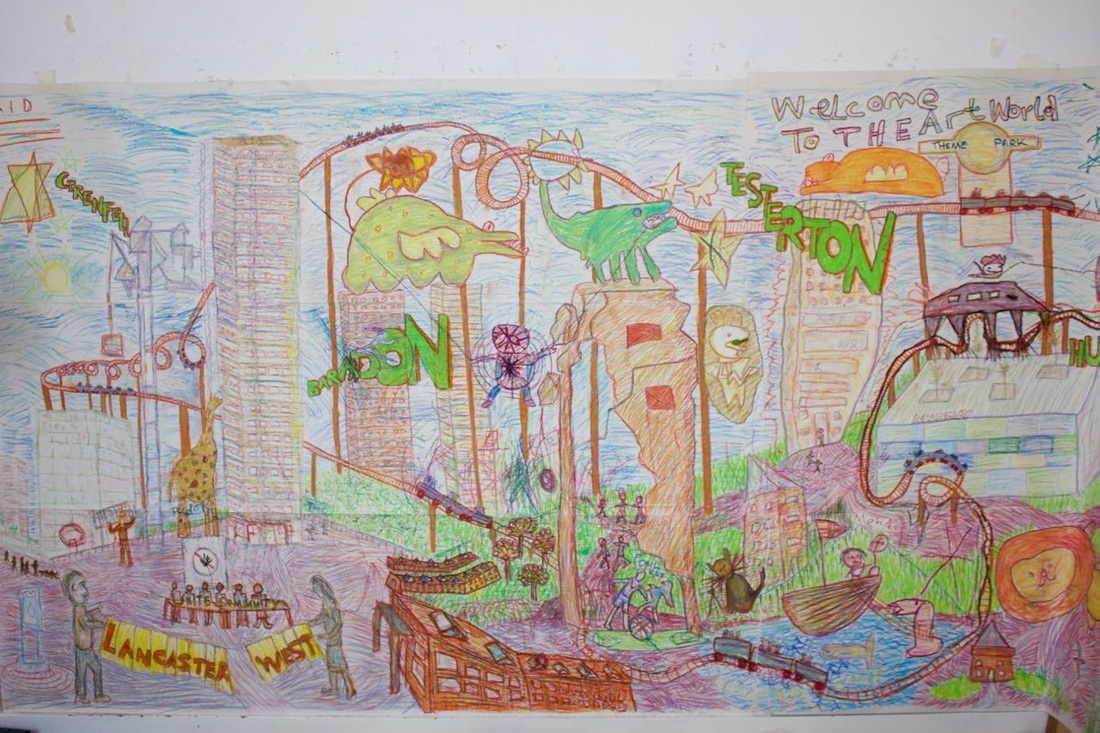
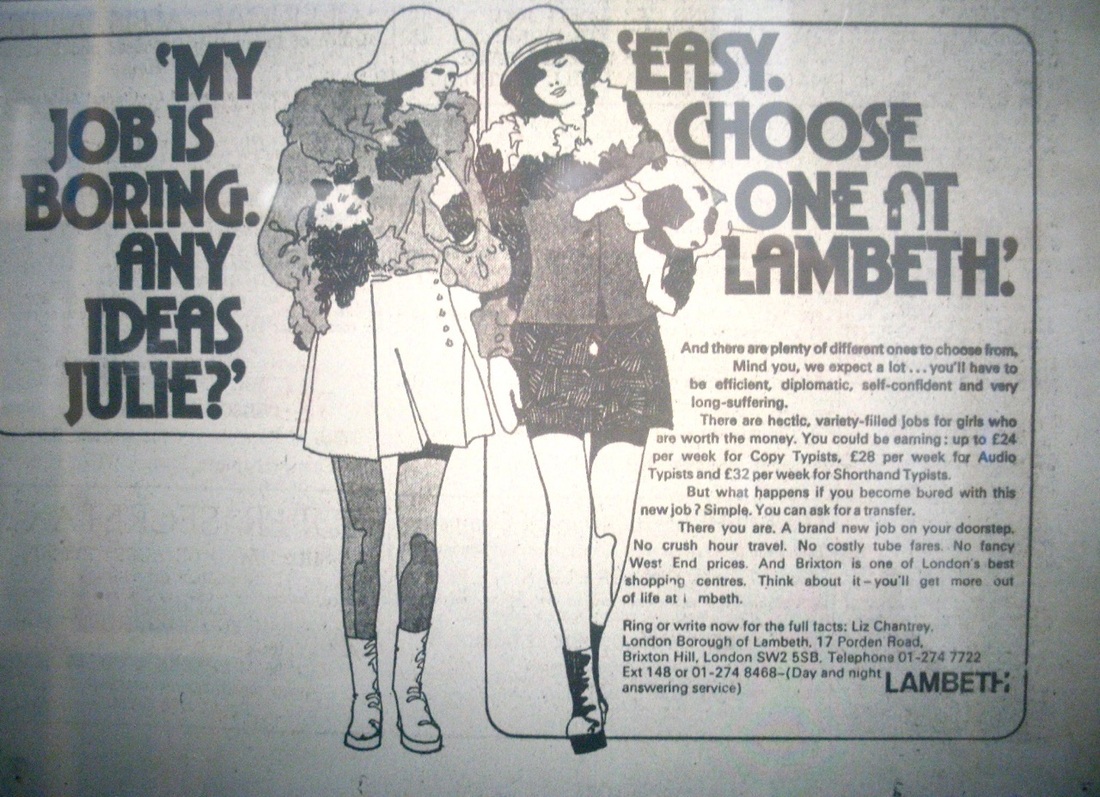
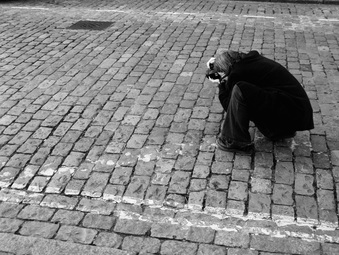
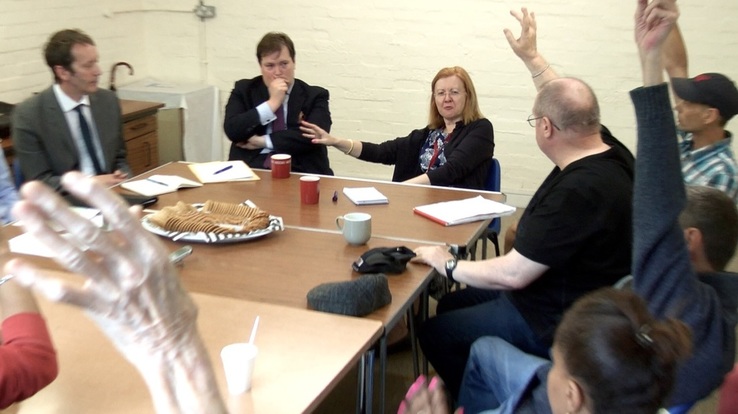
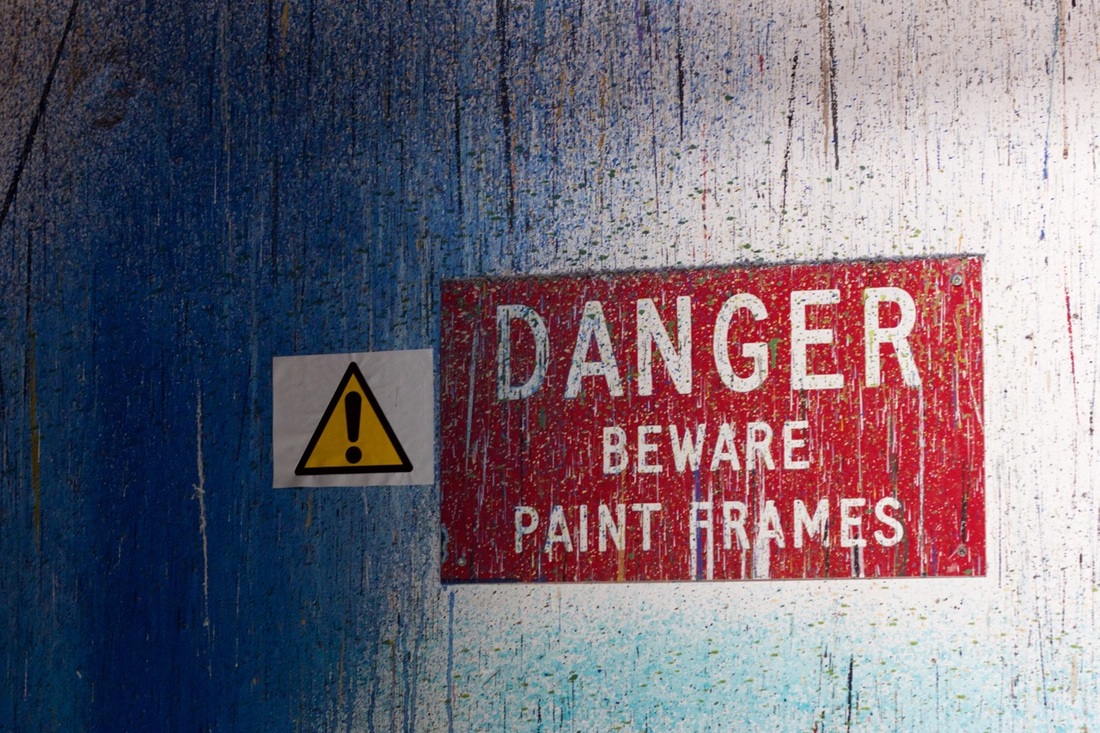
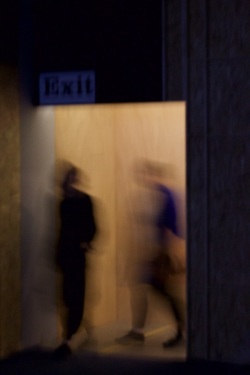
 RSS Feed
RSS Feed
